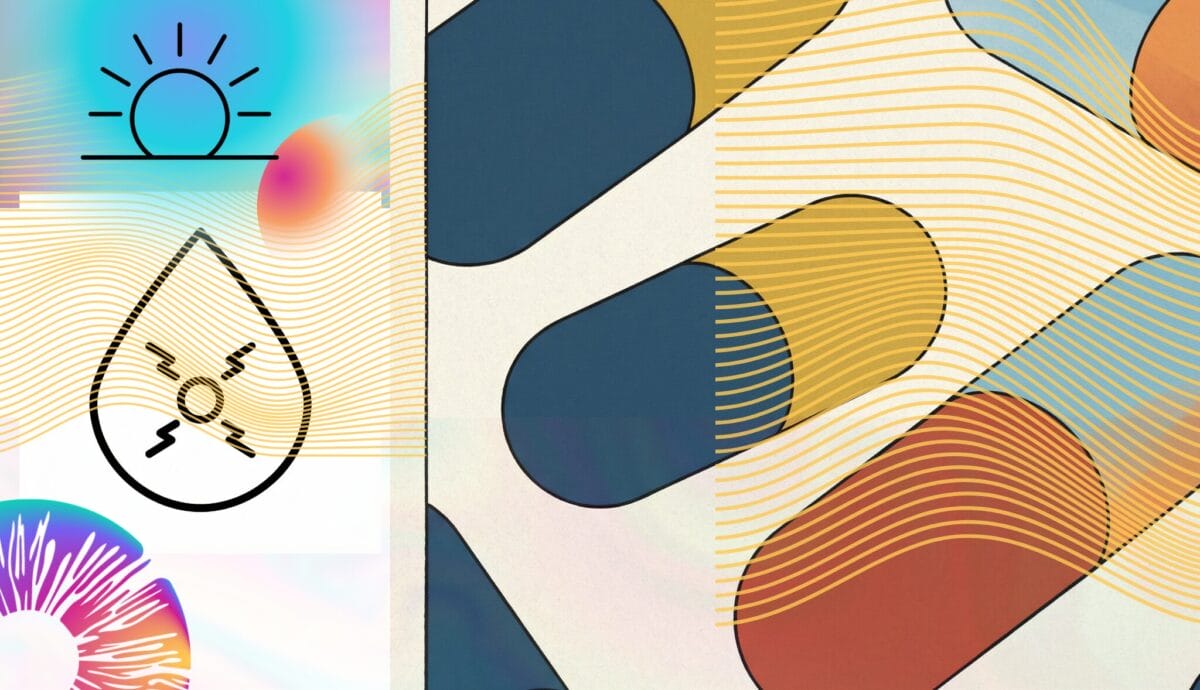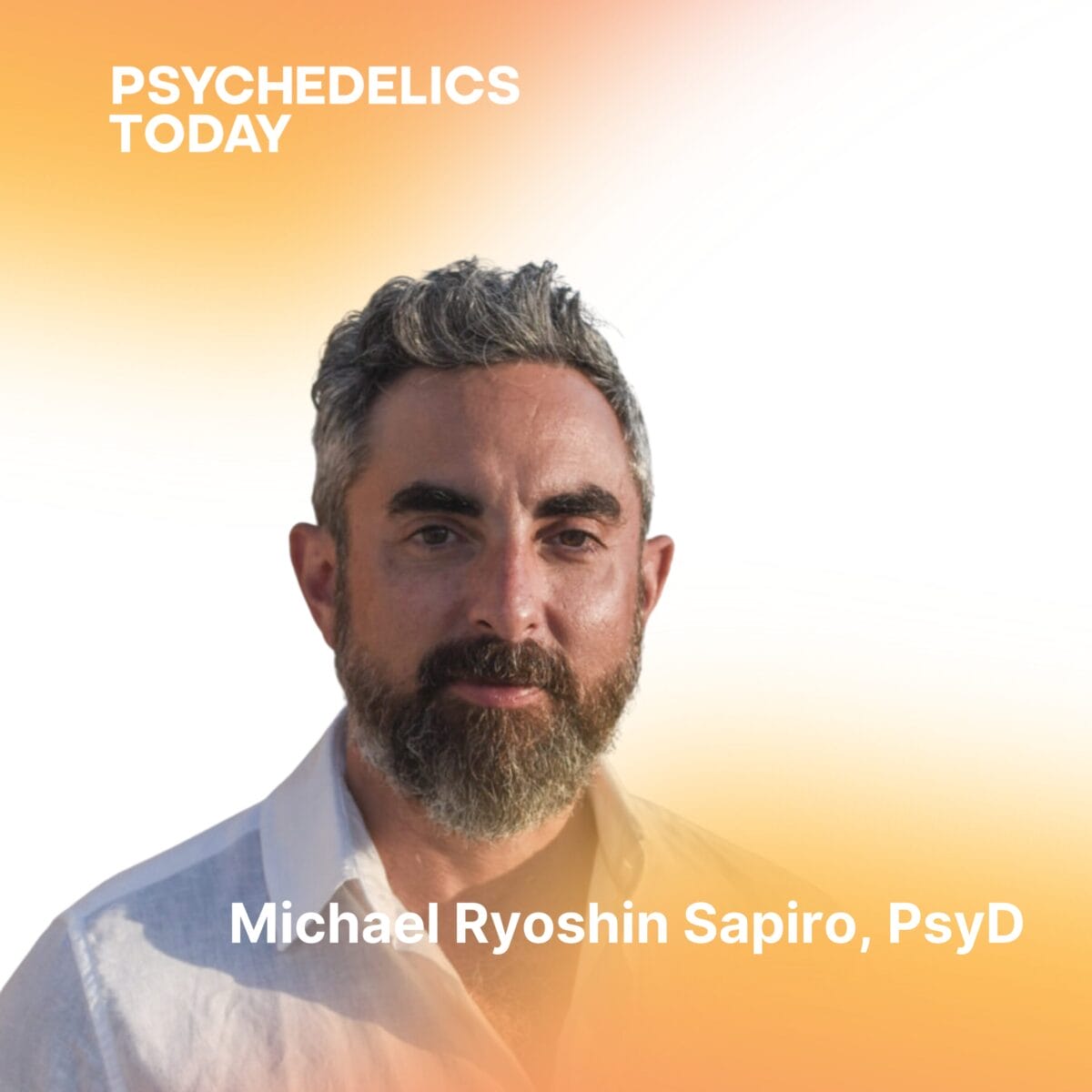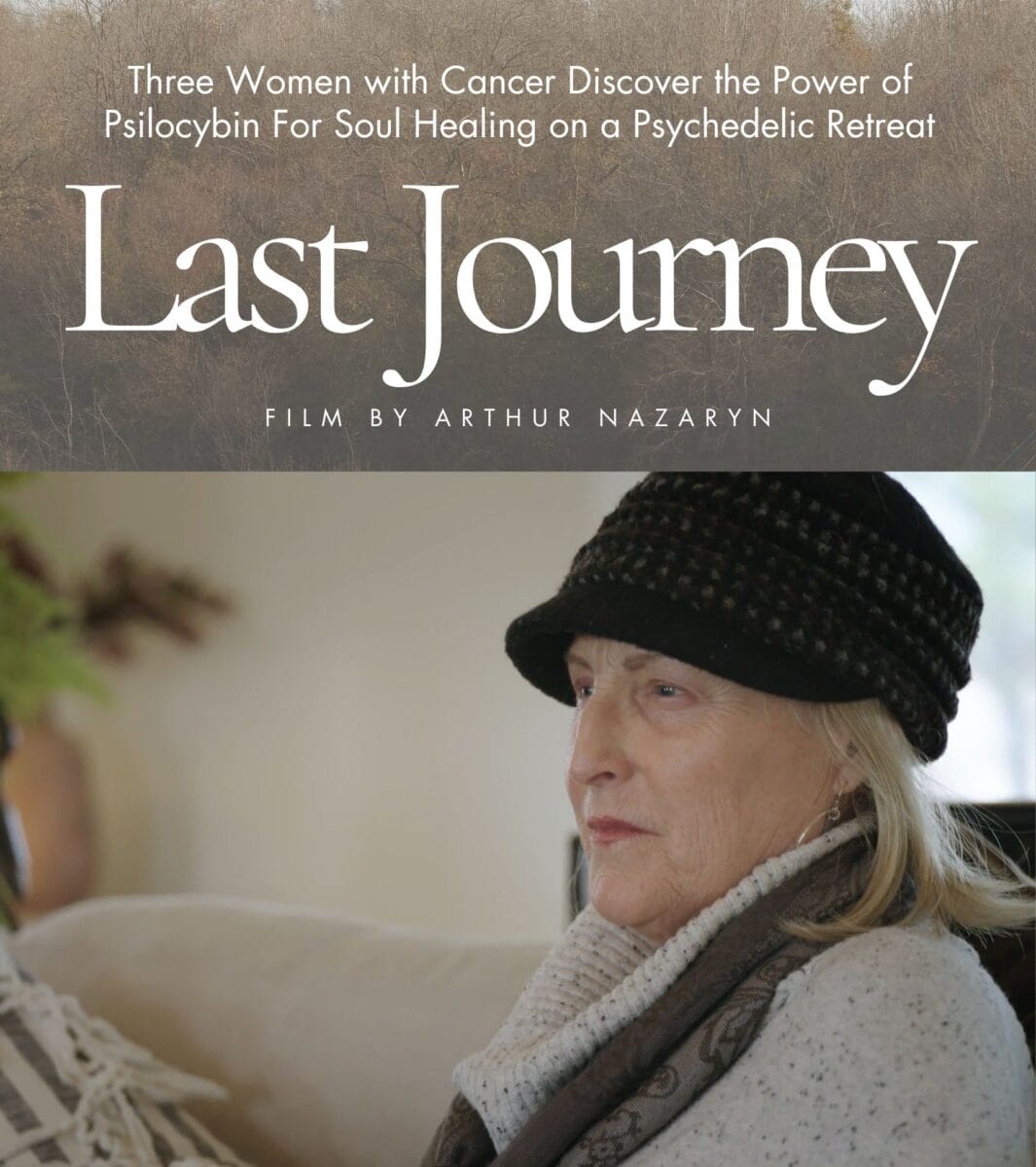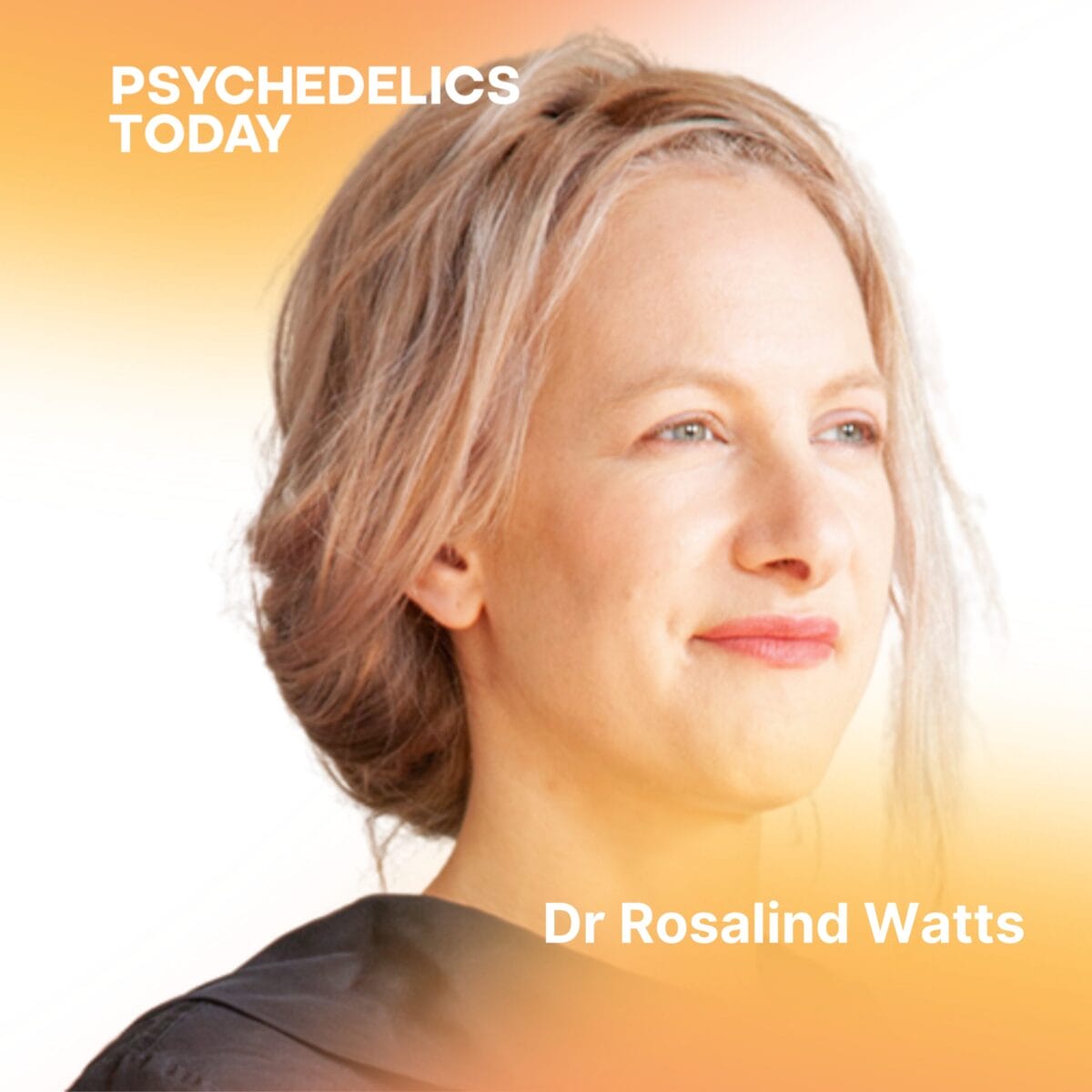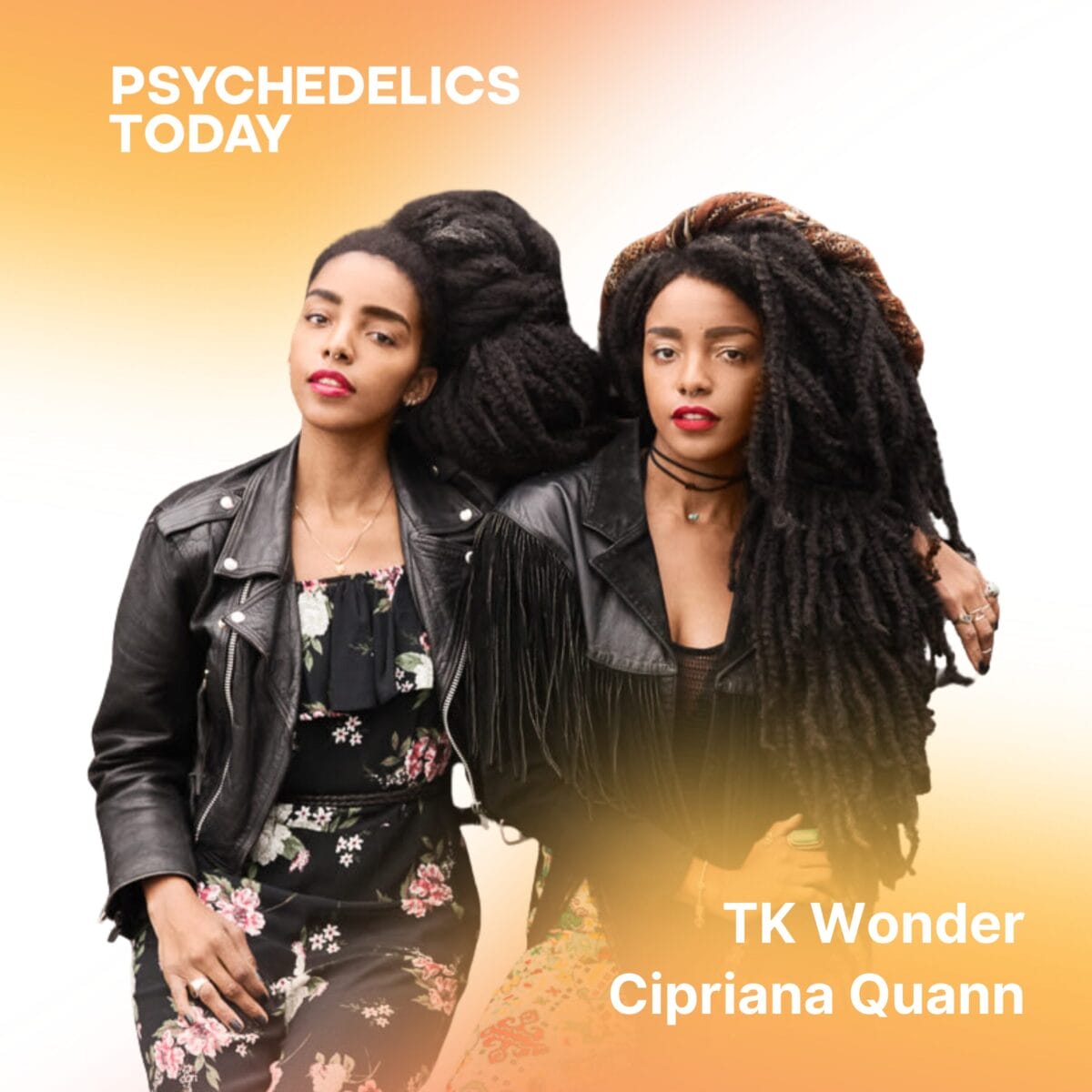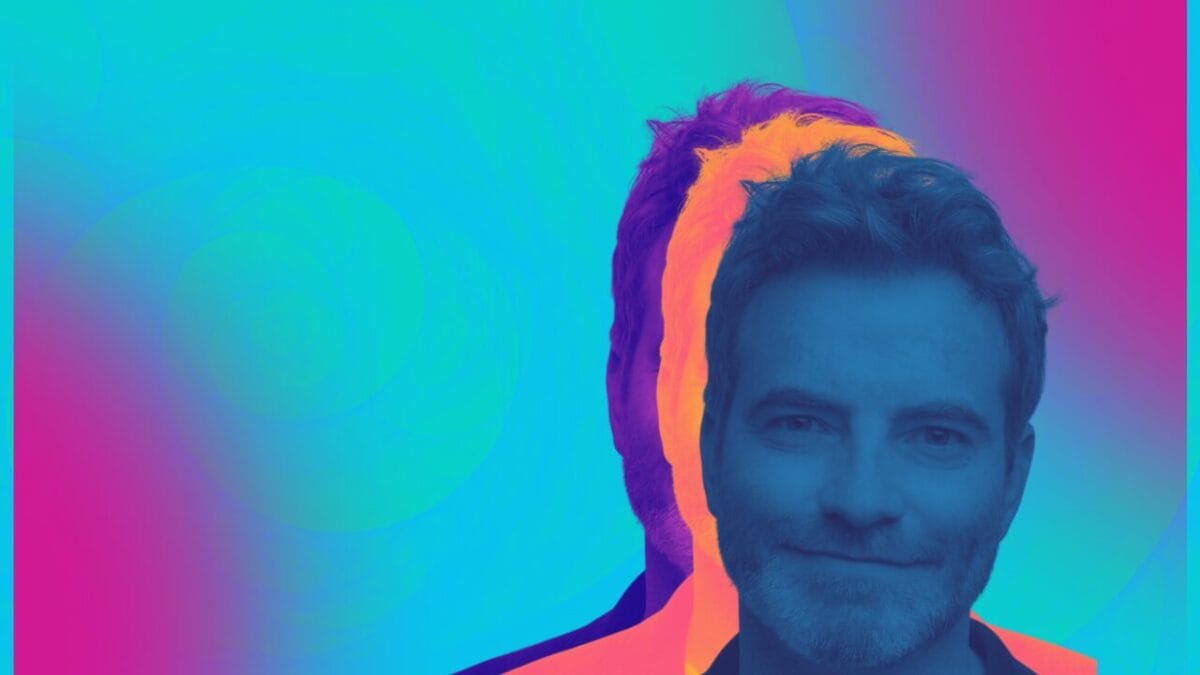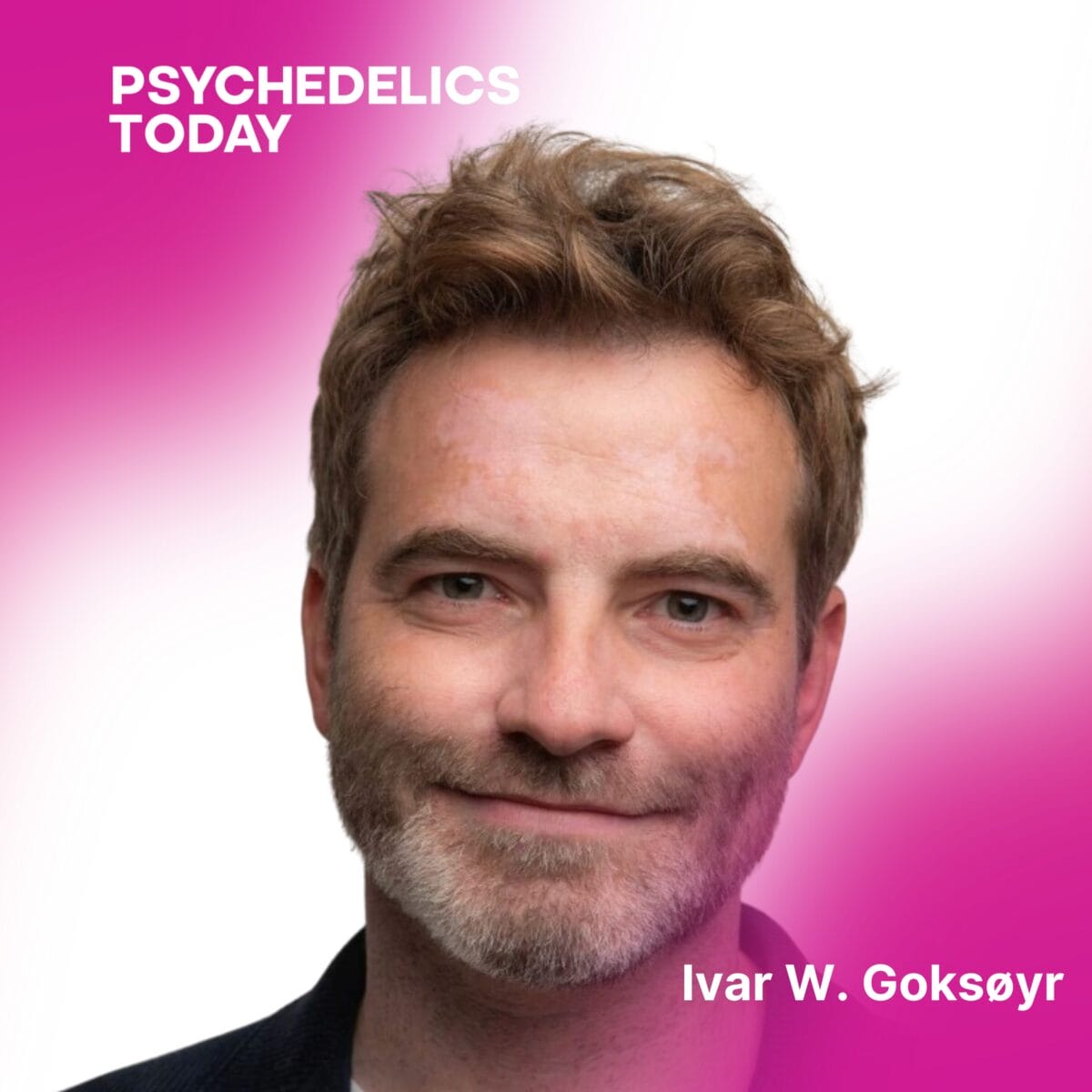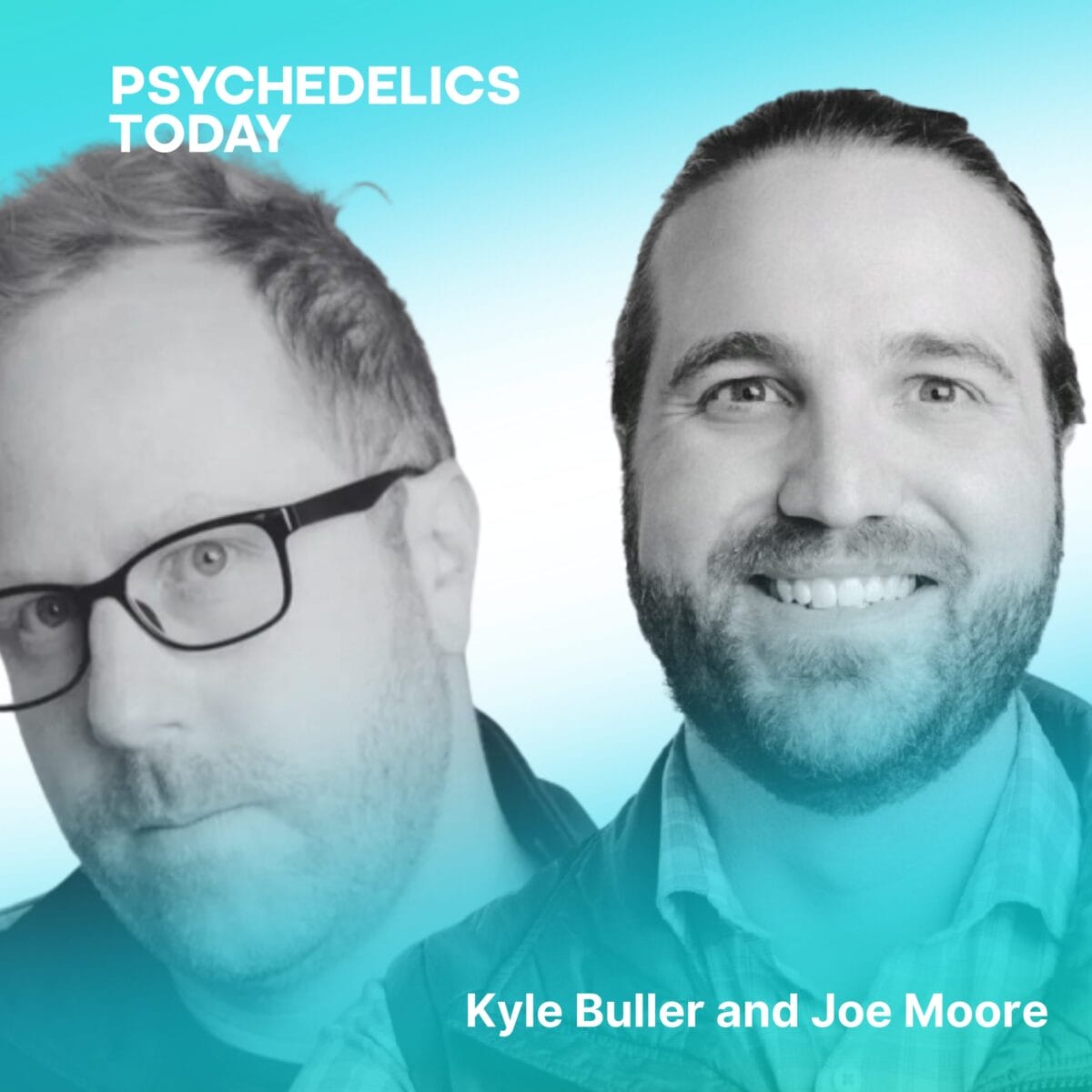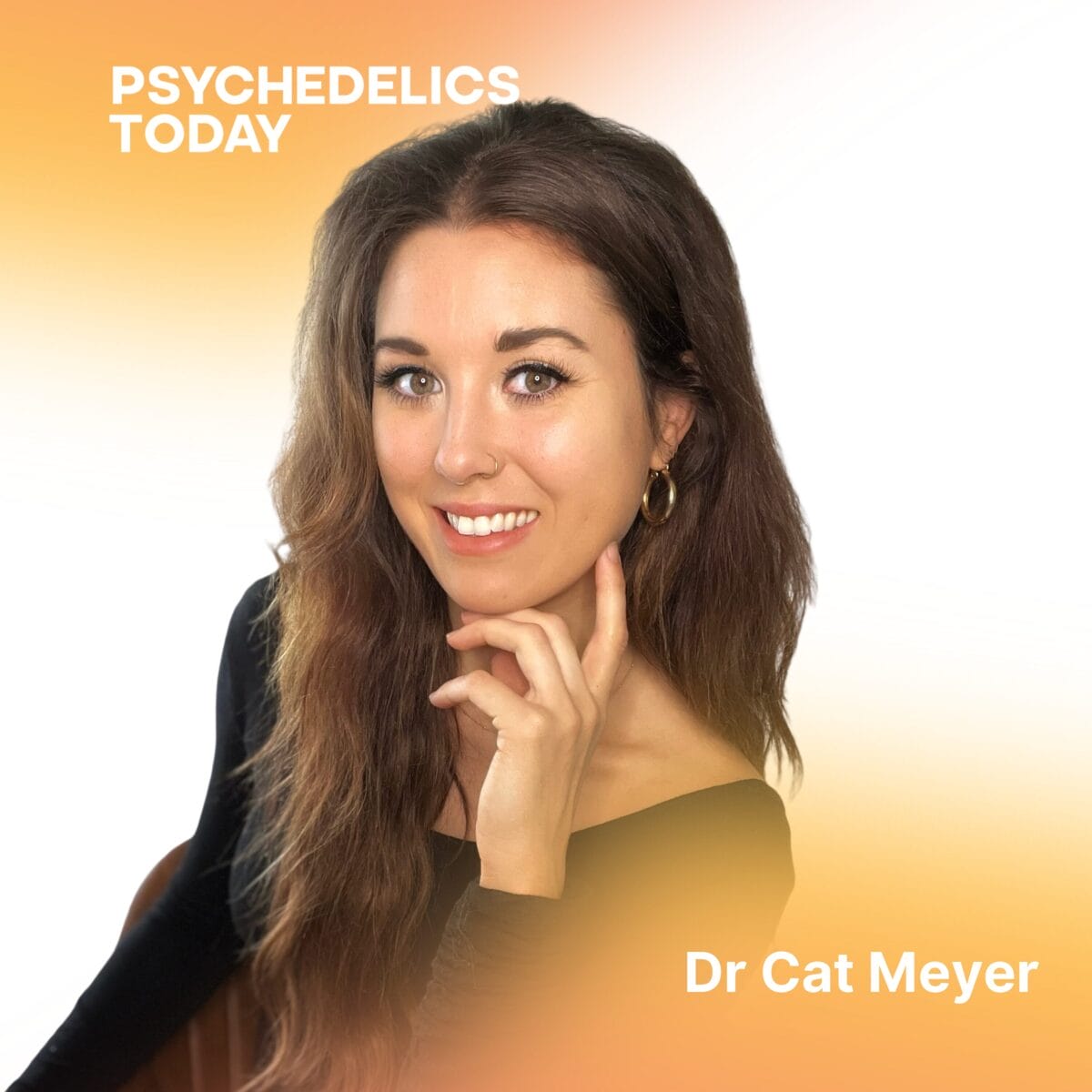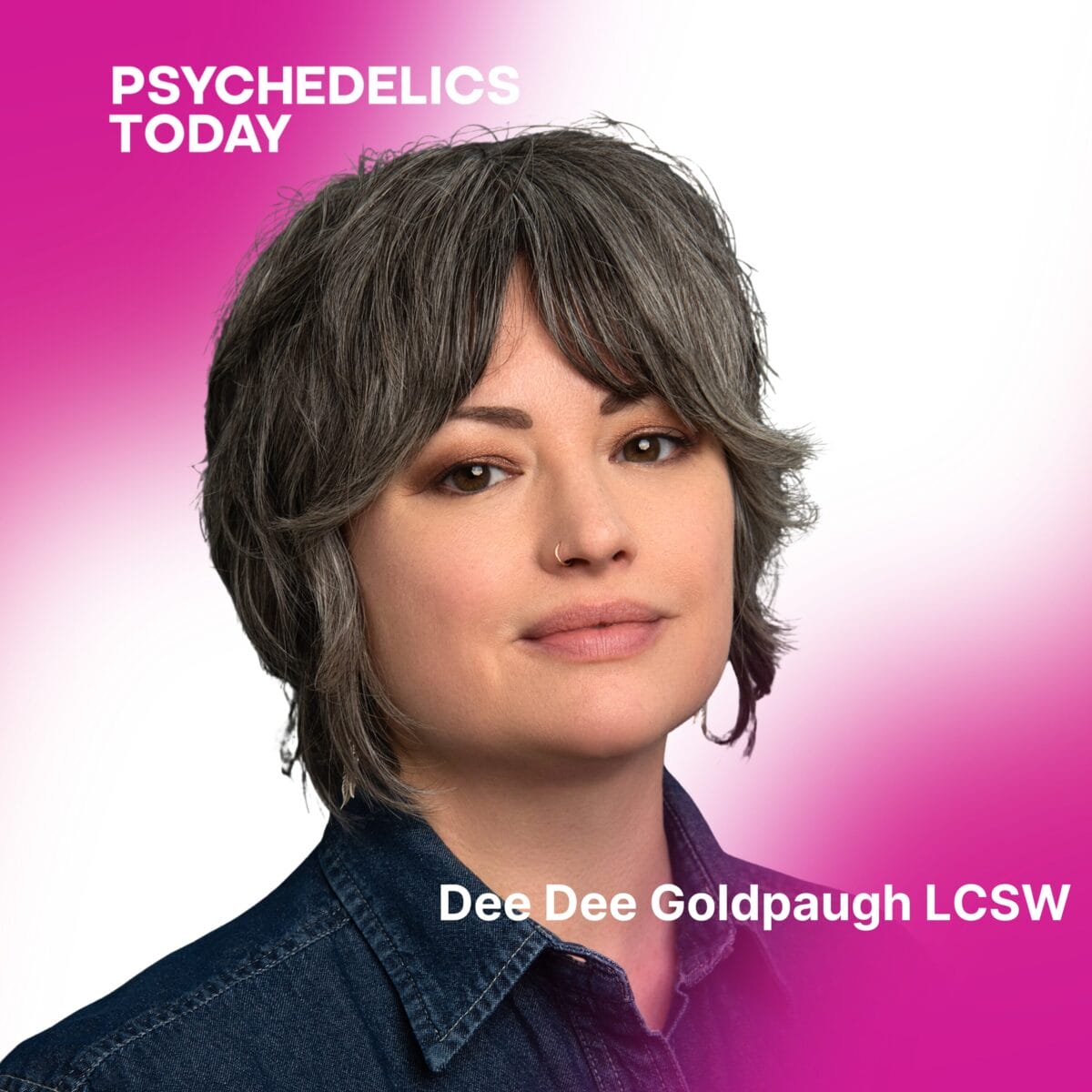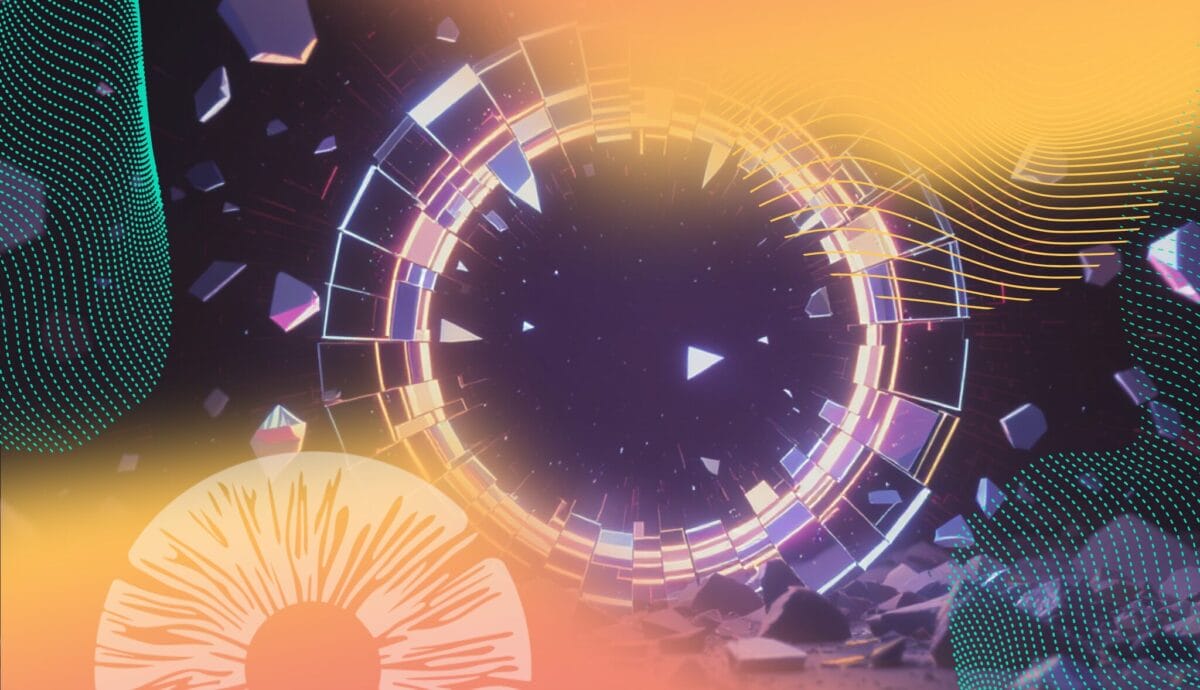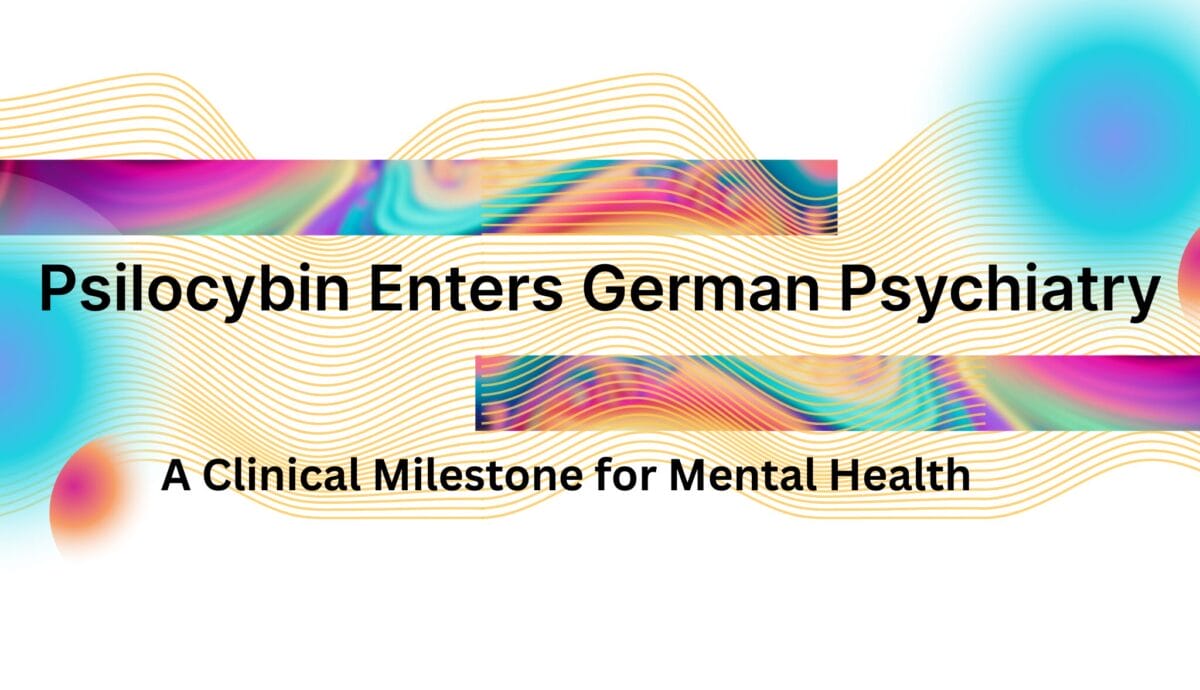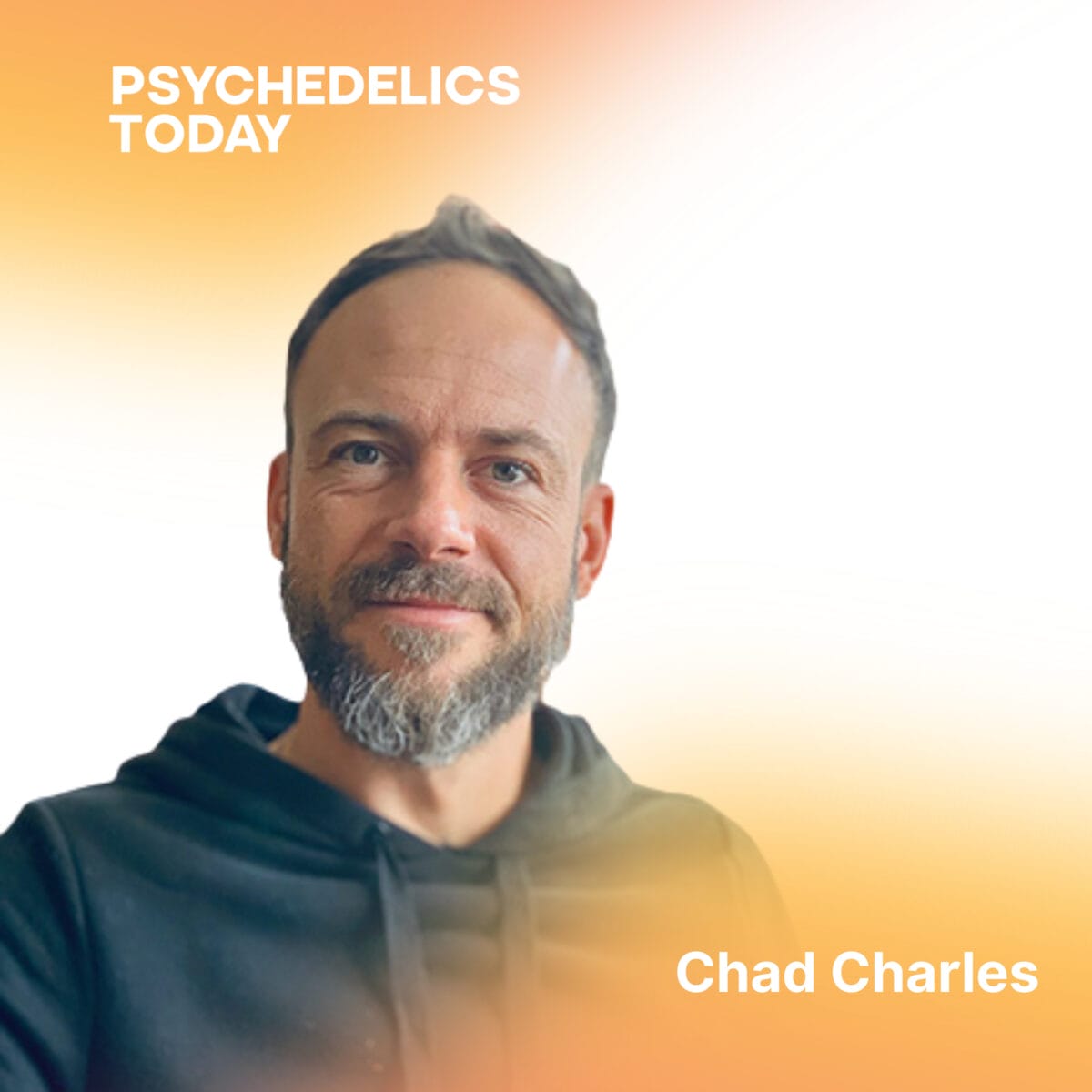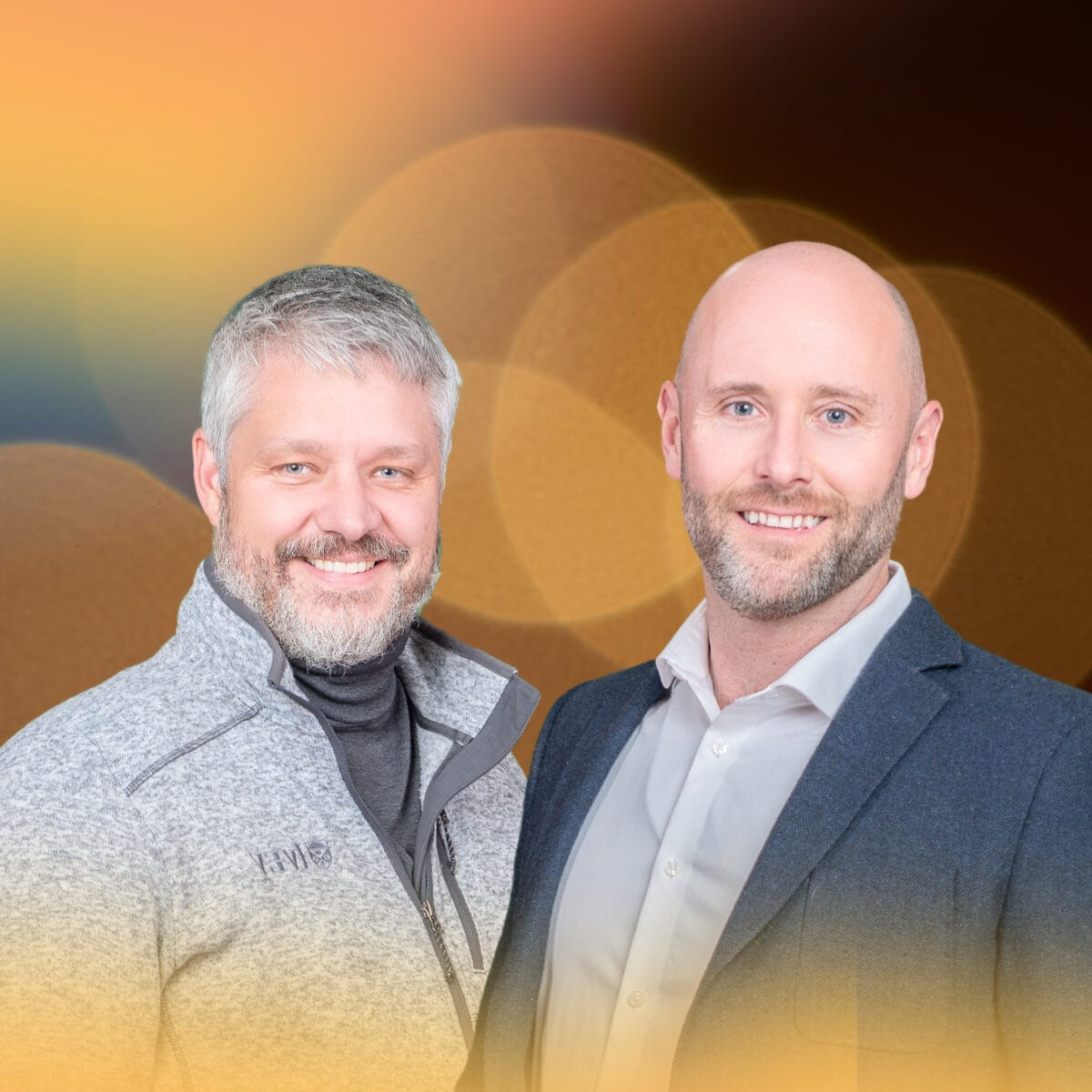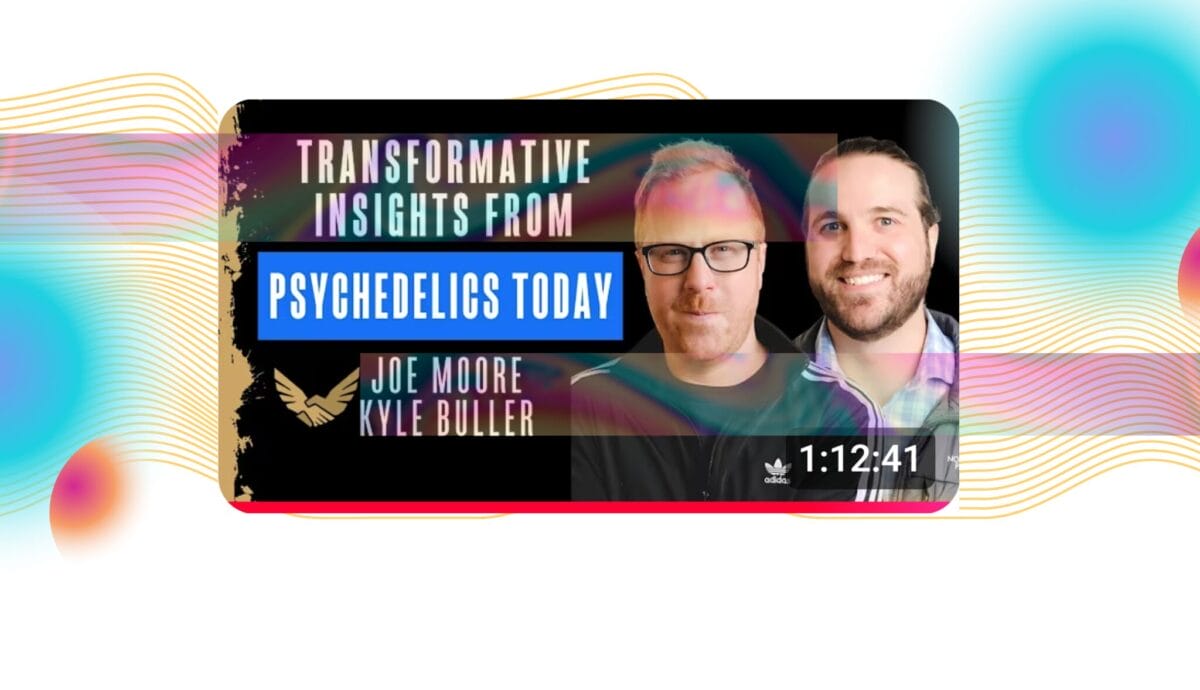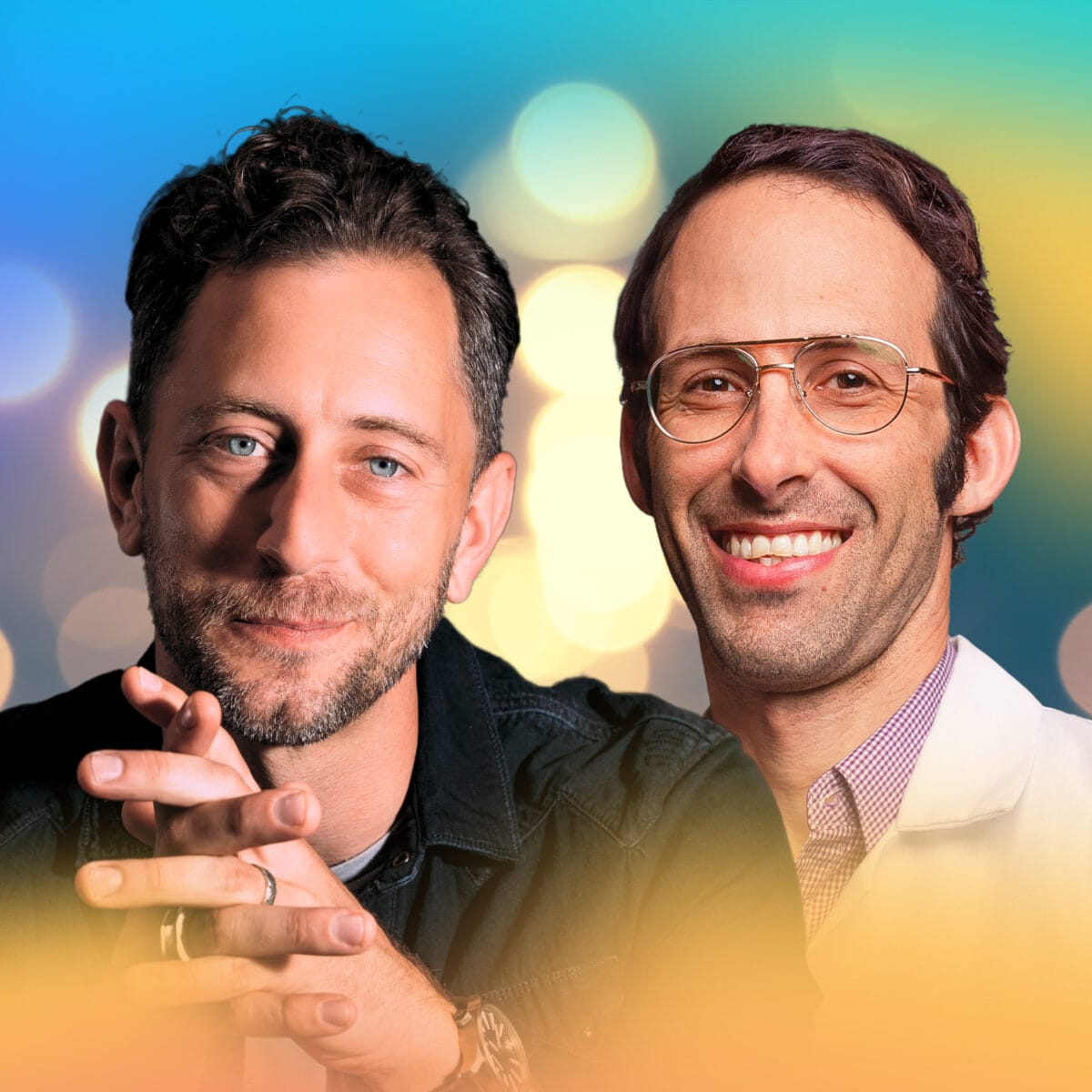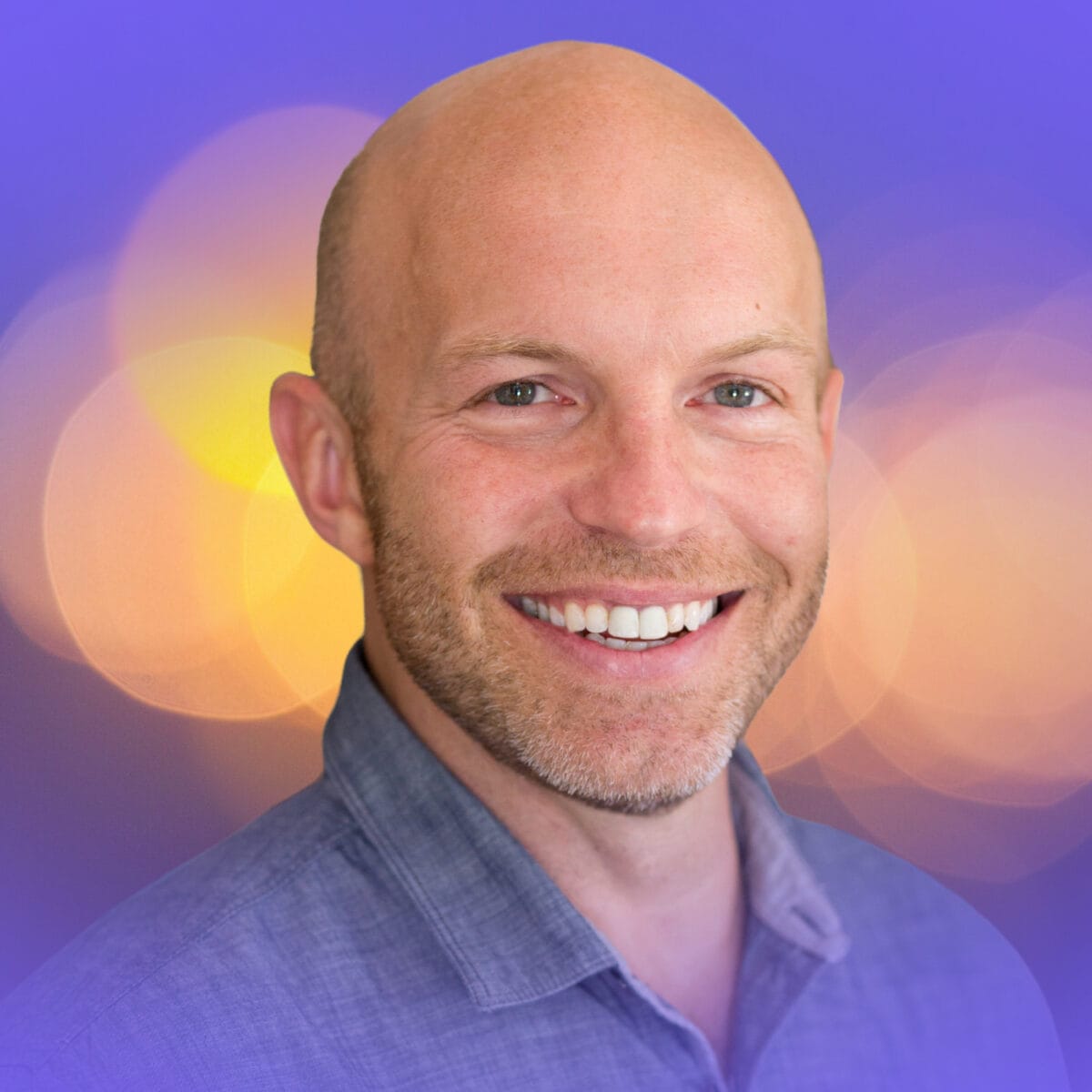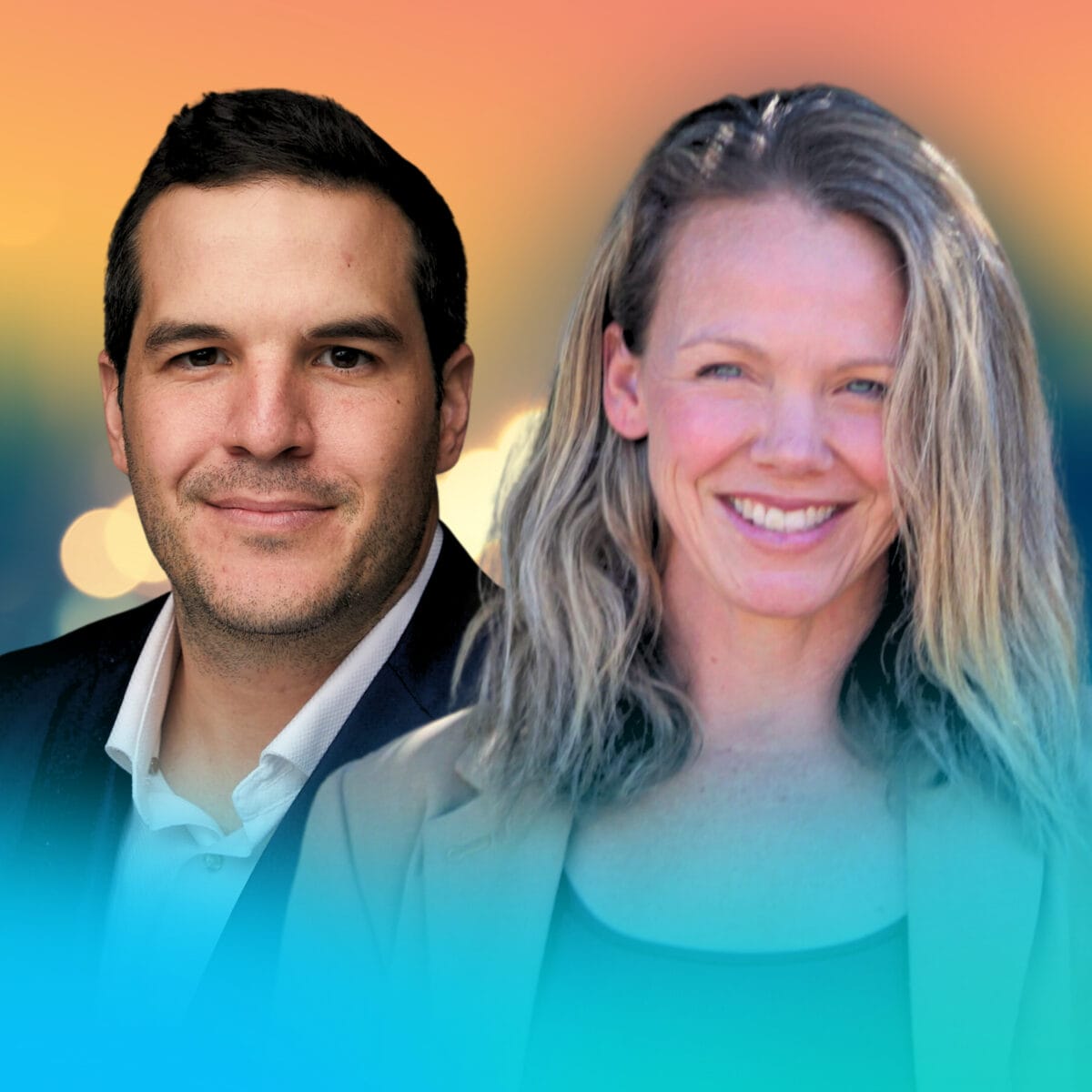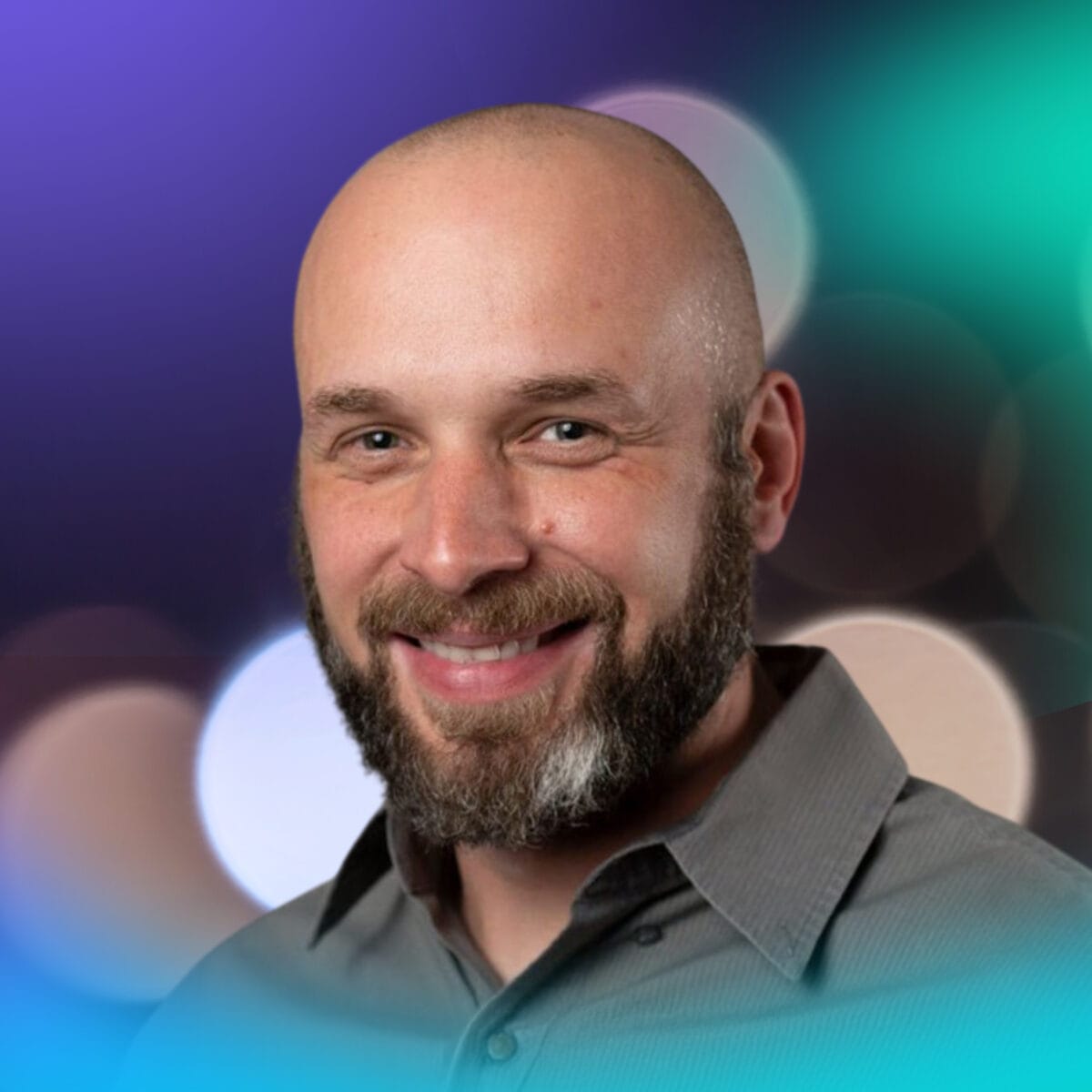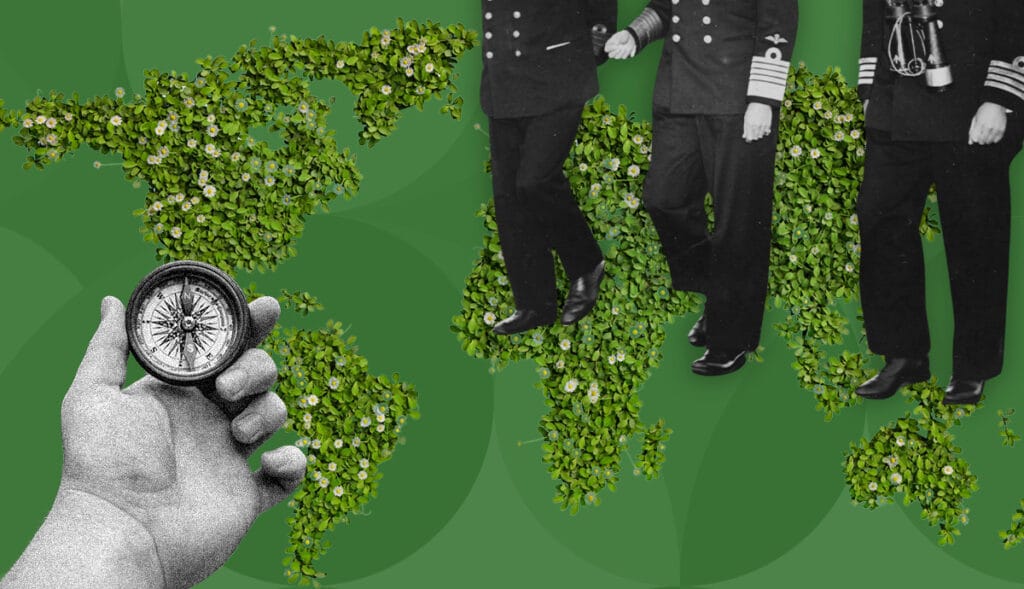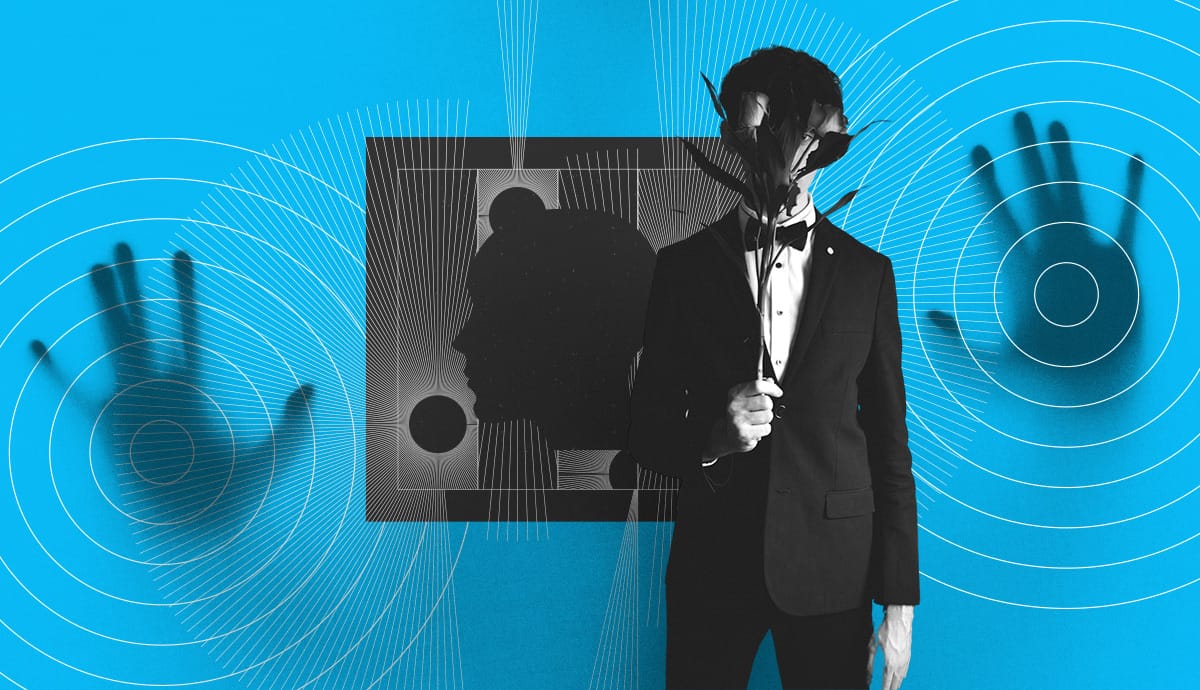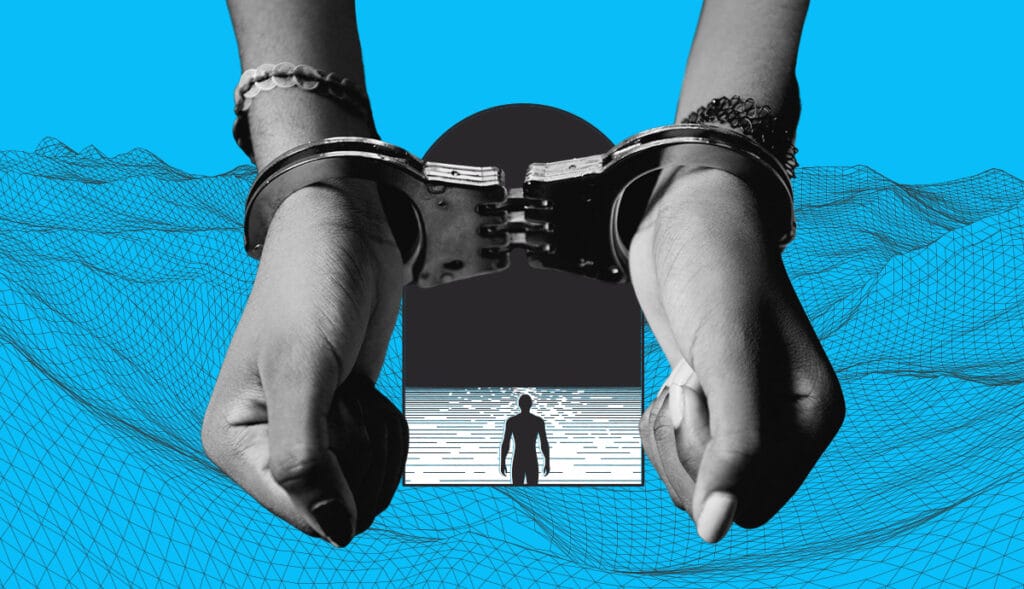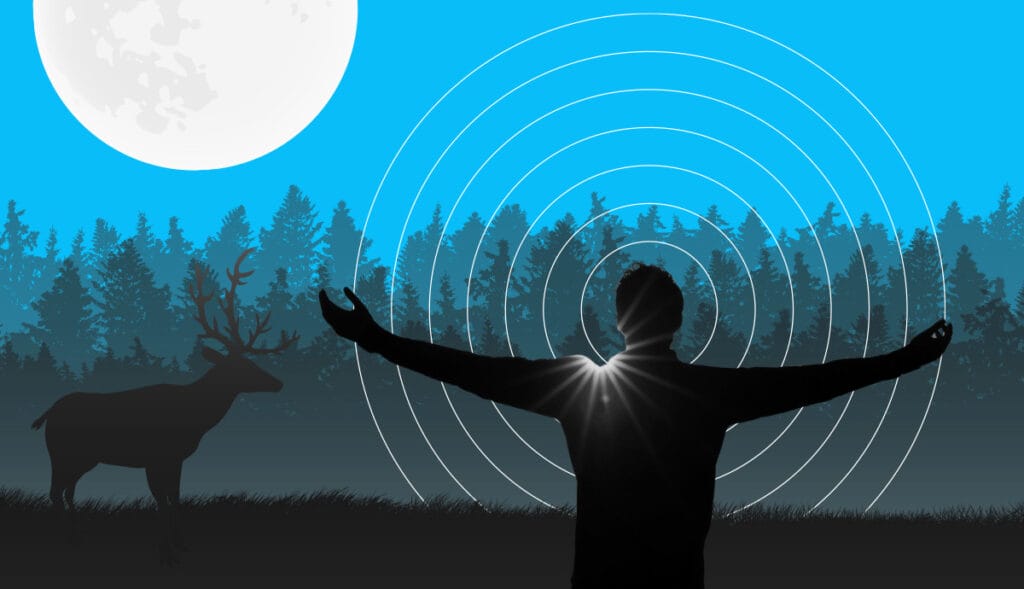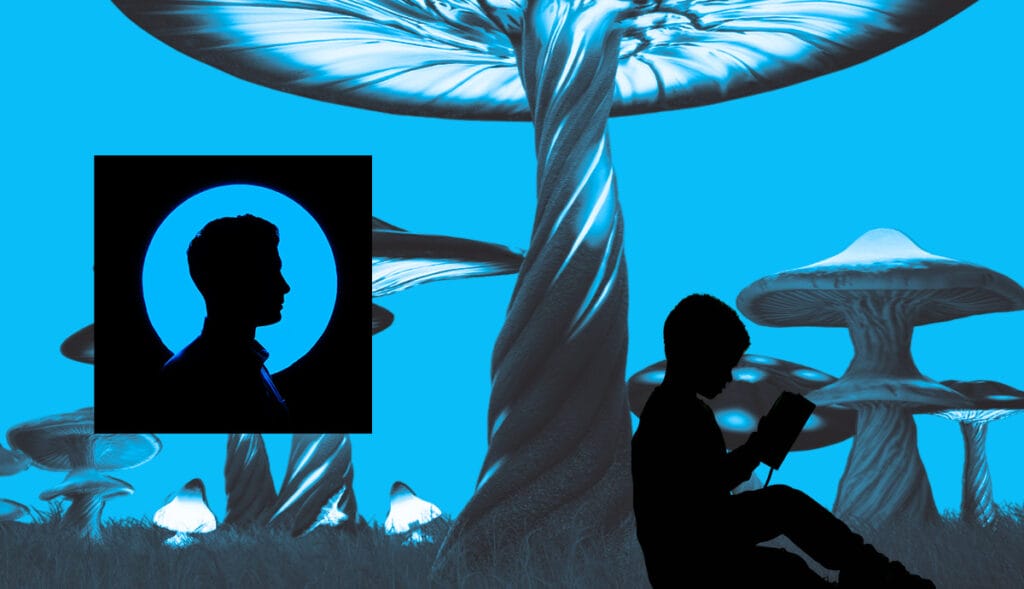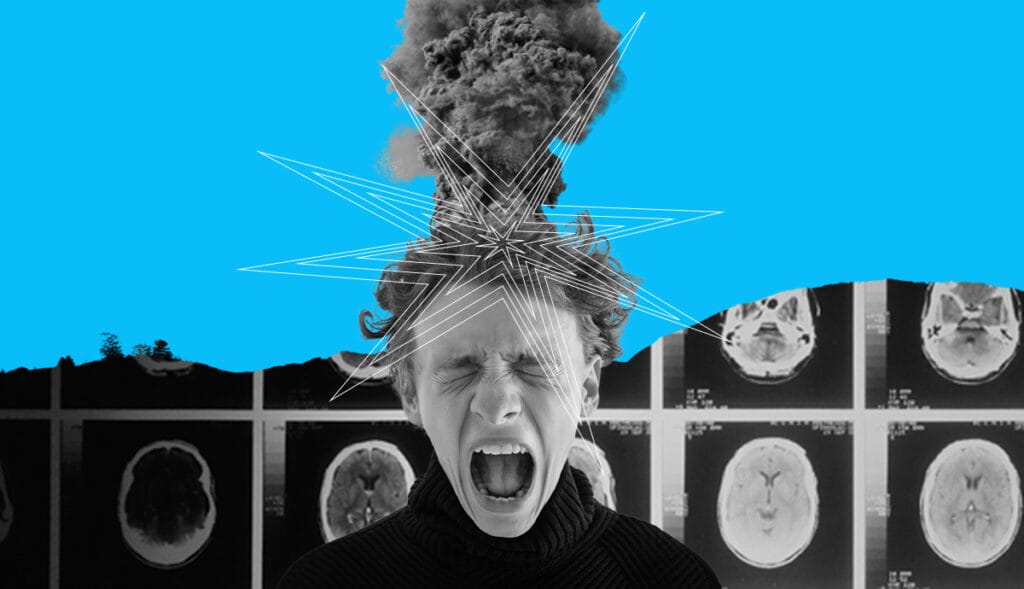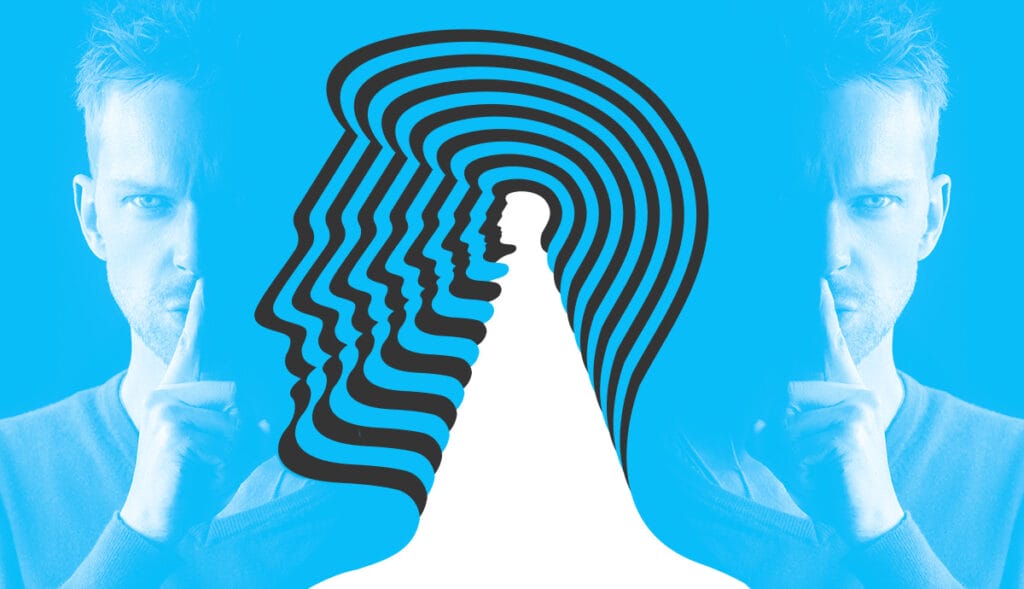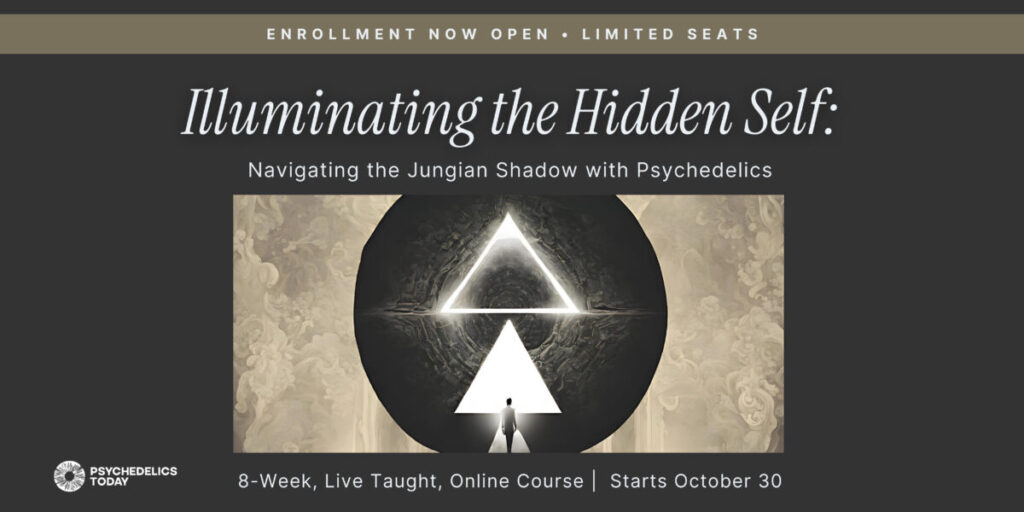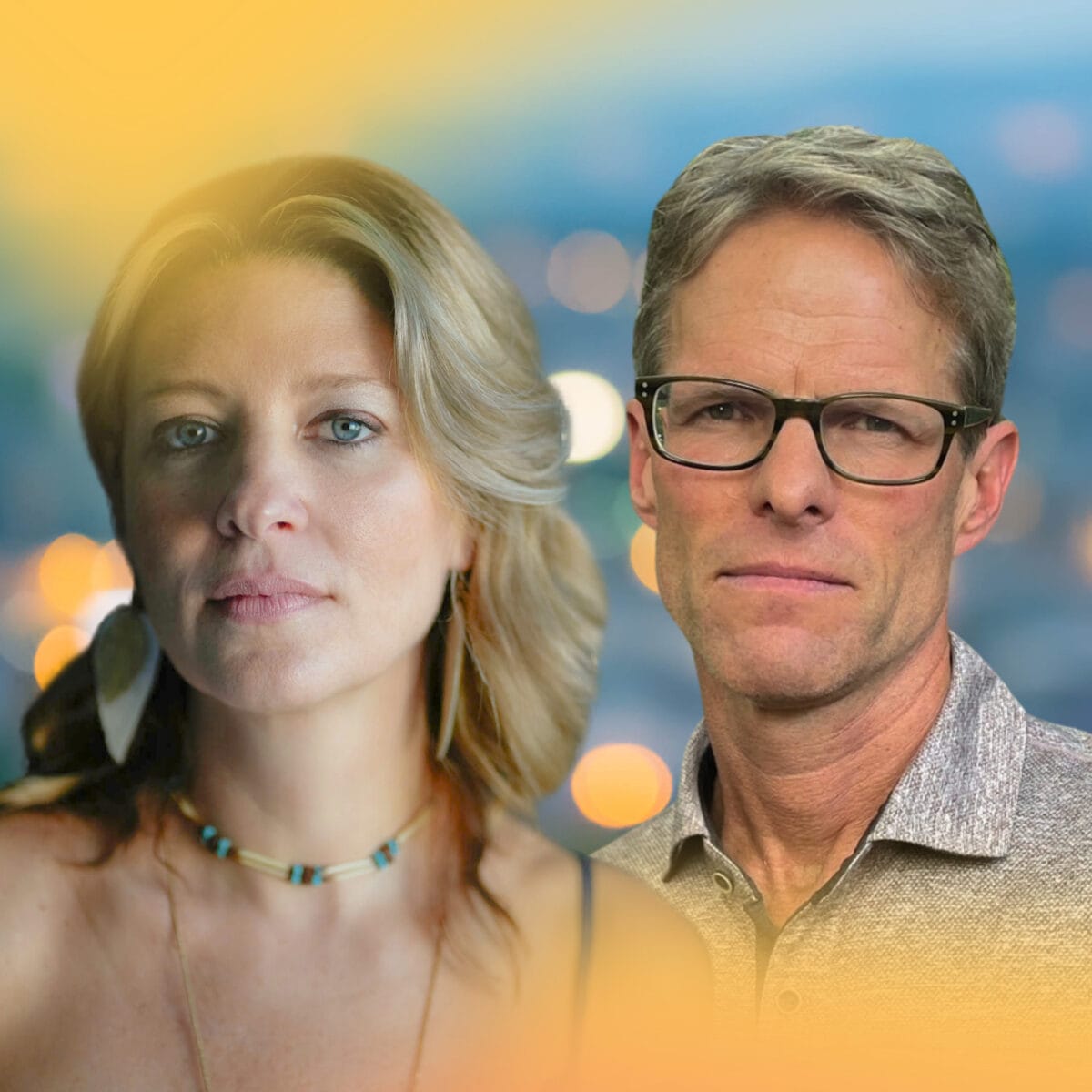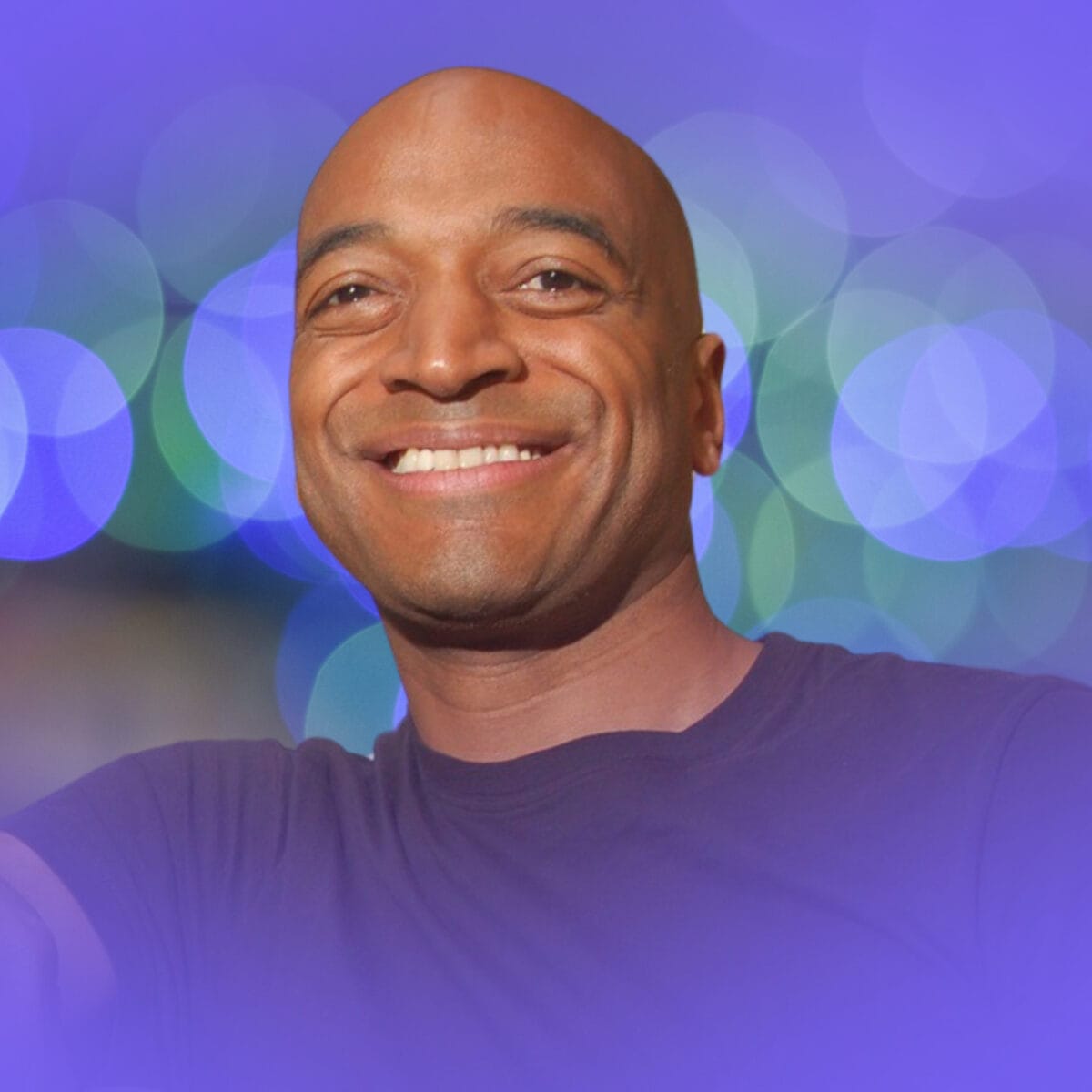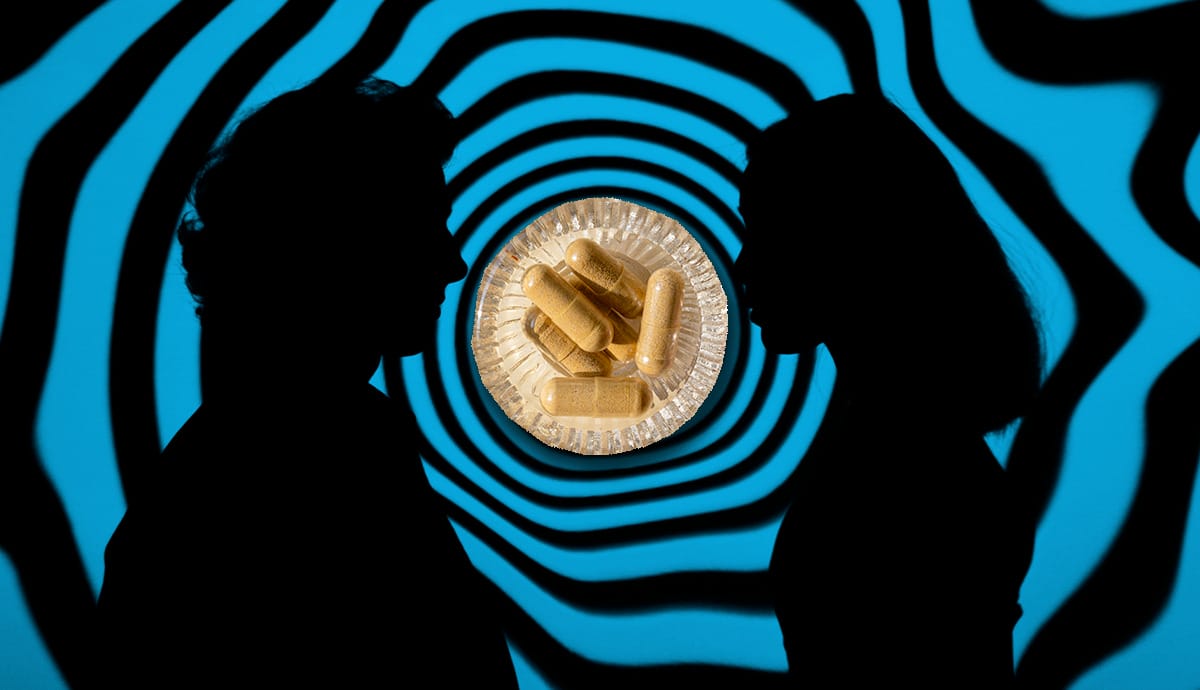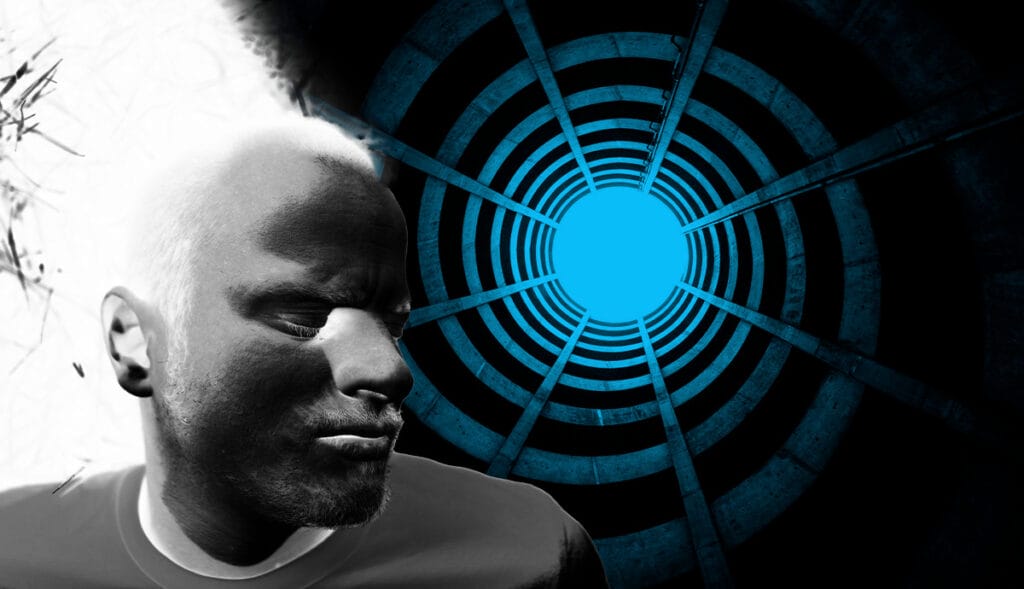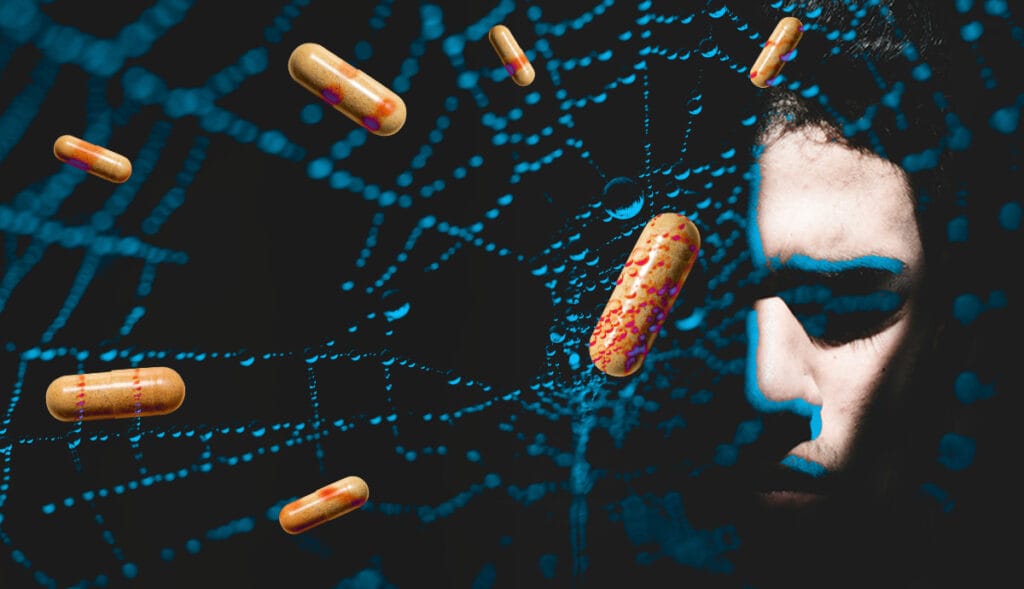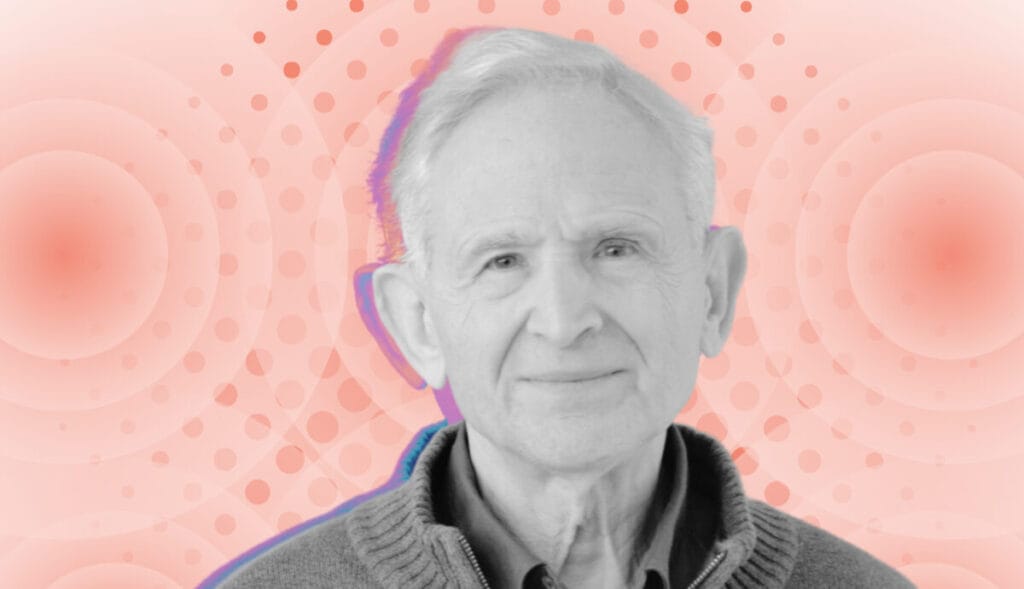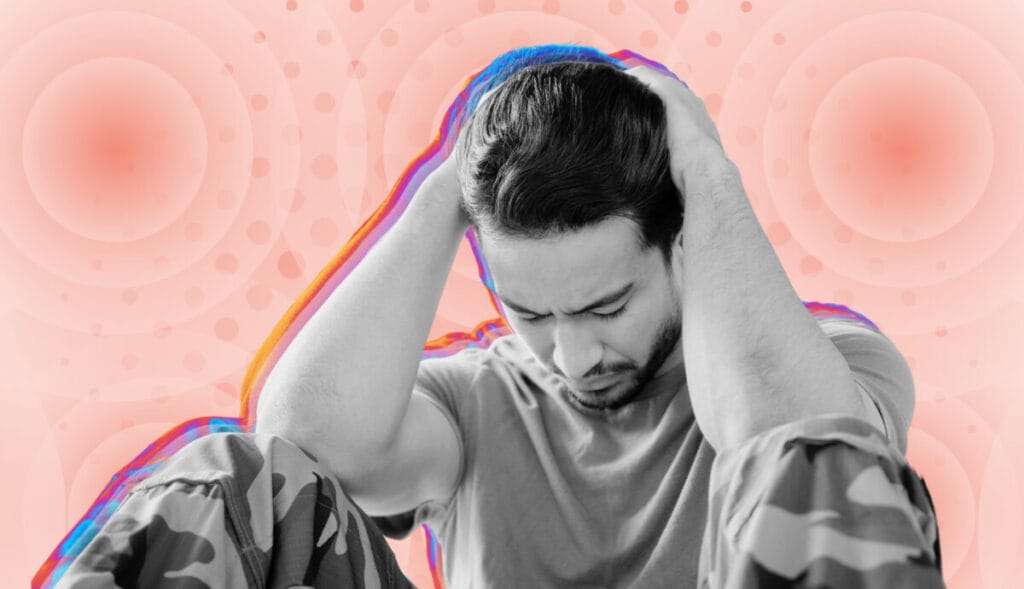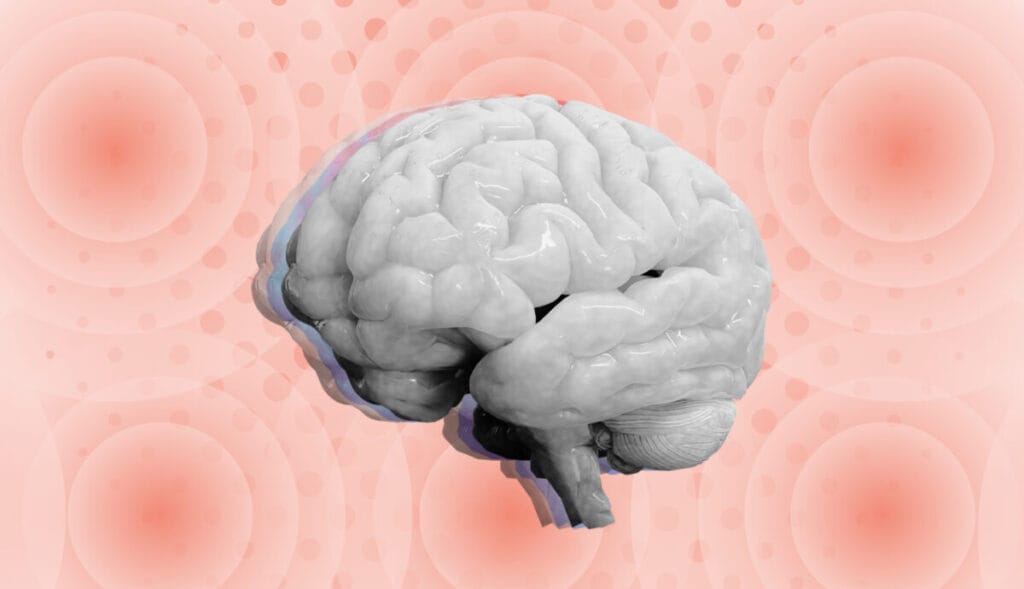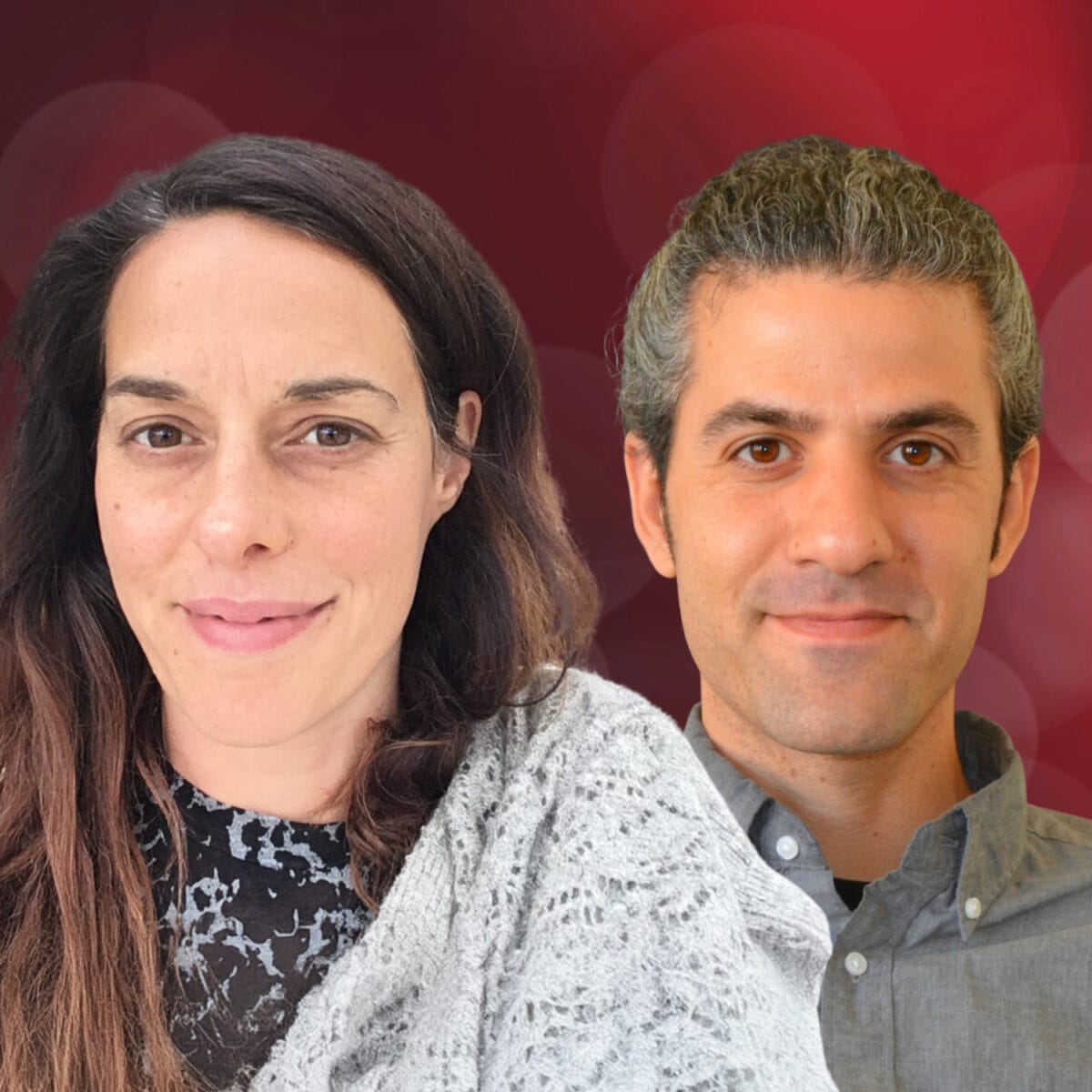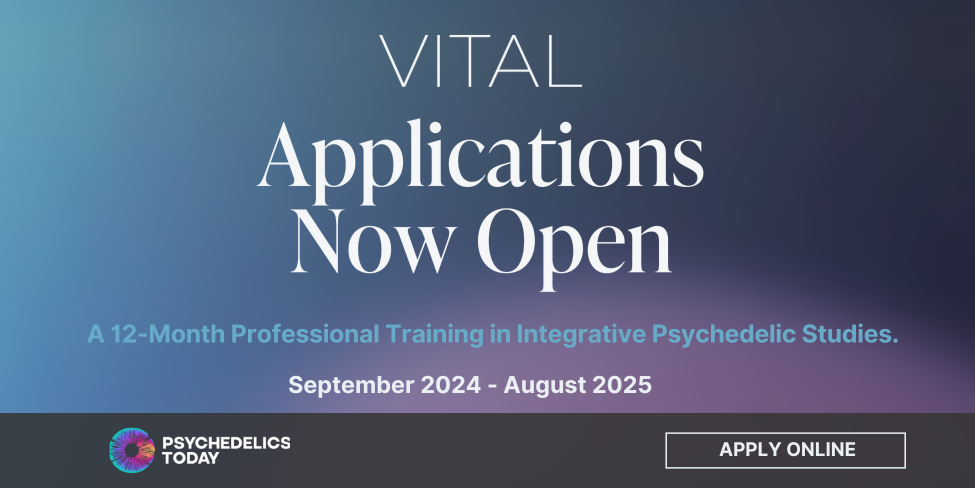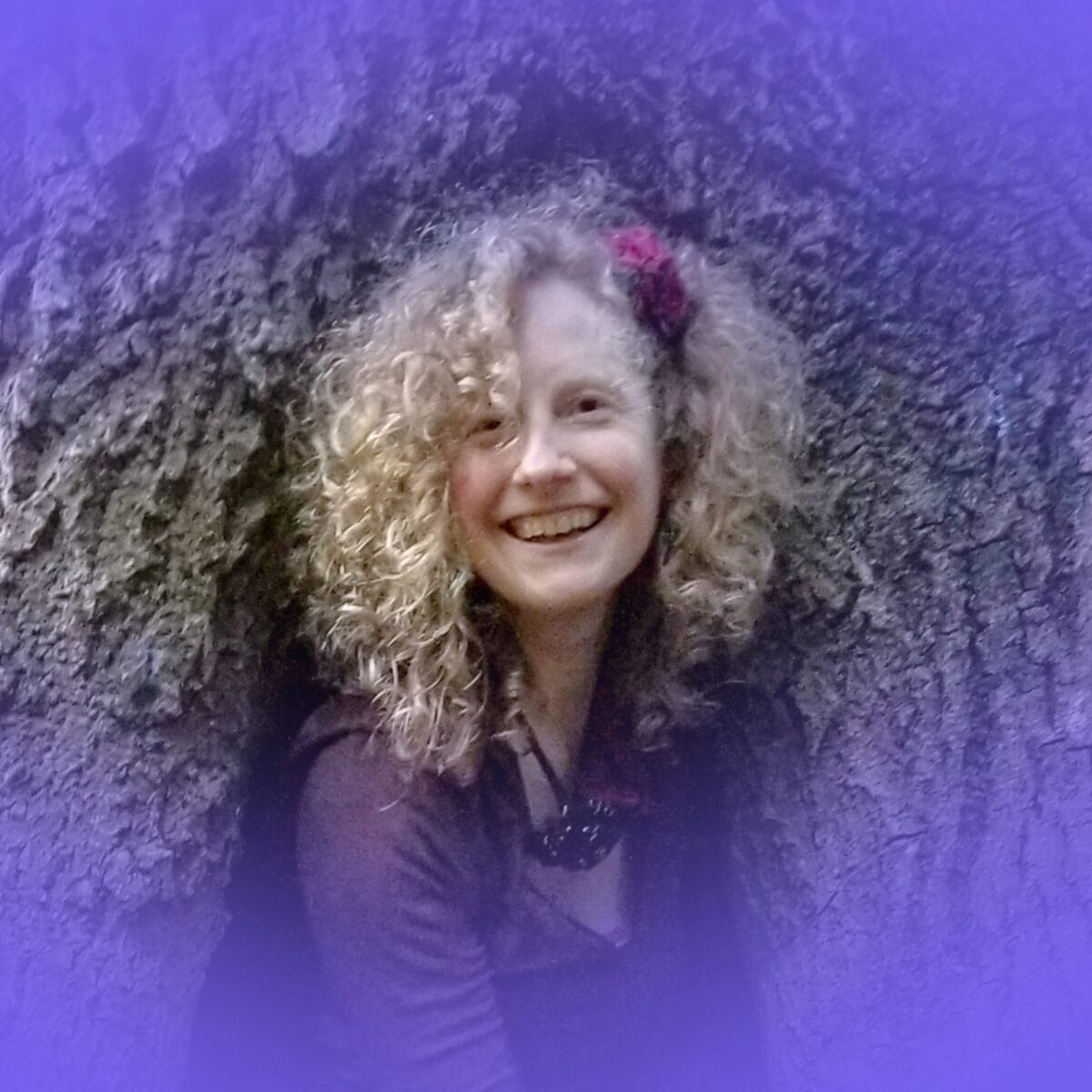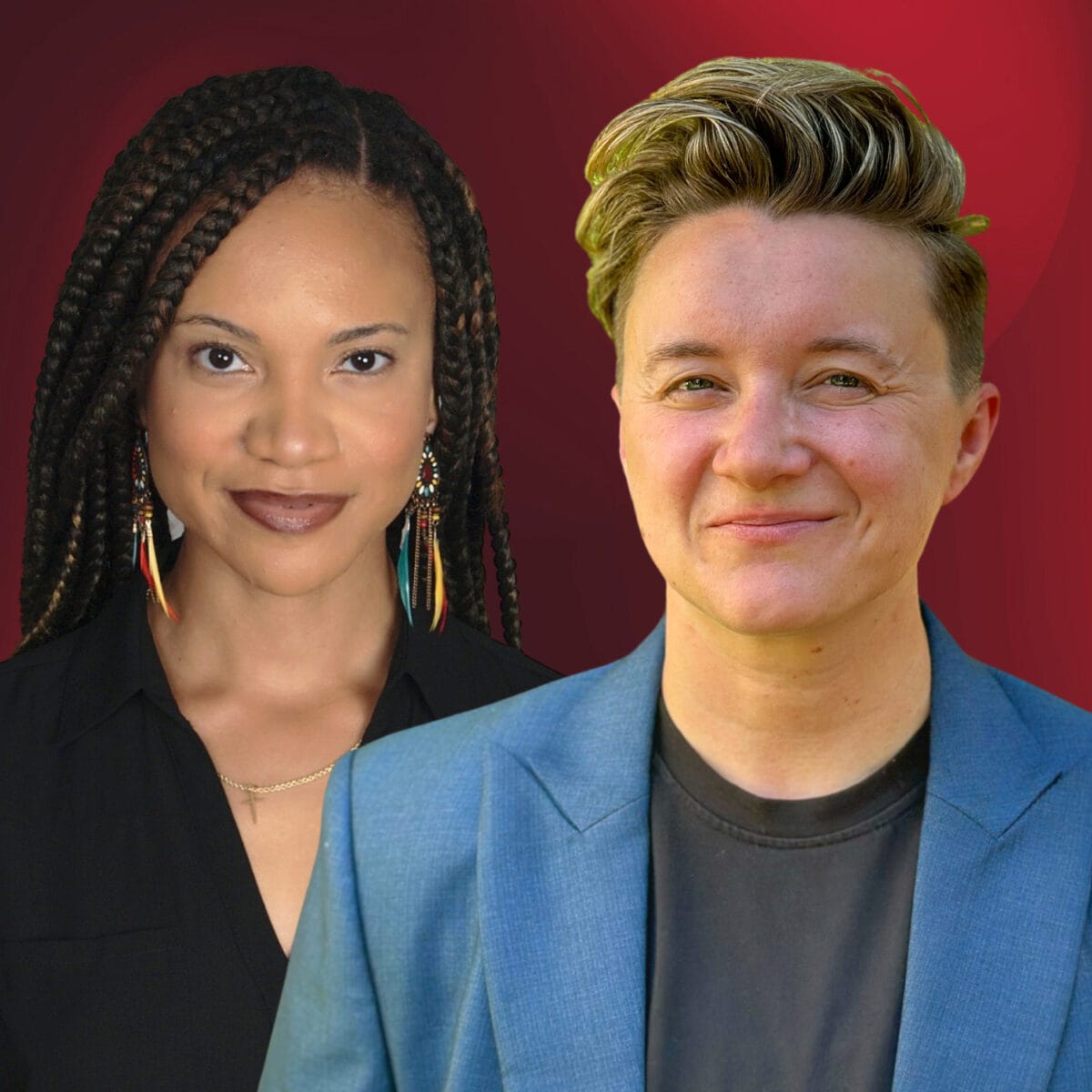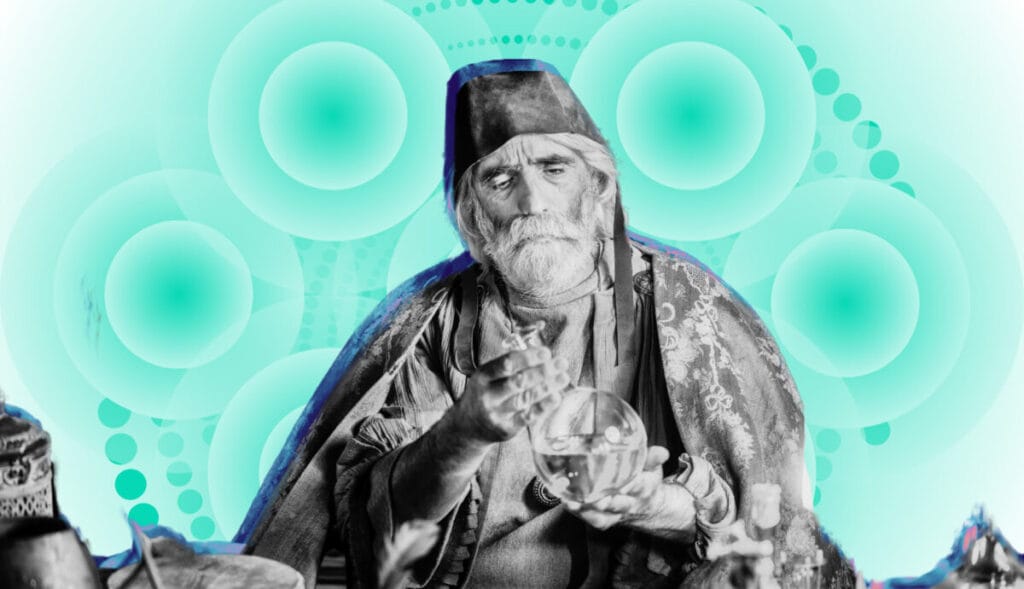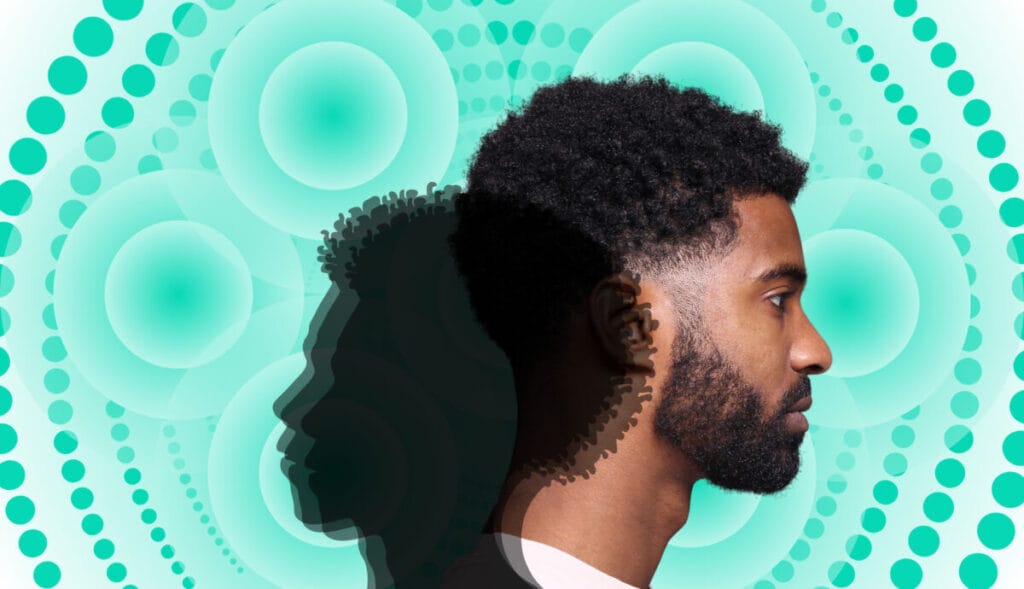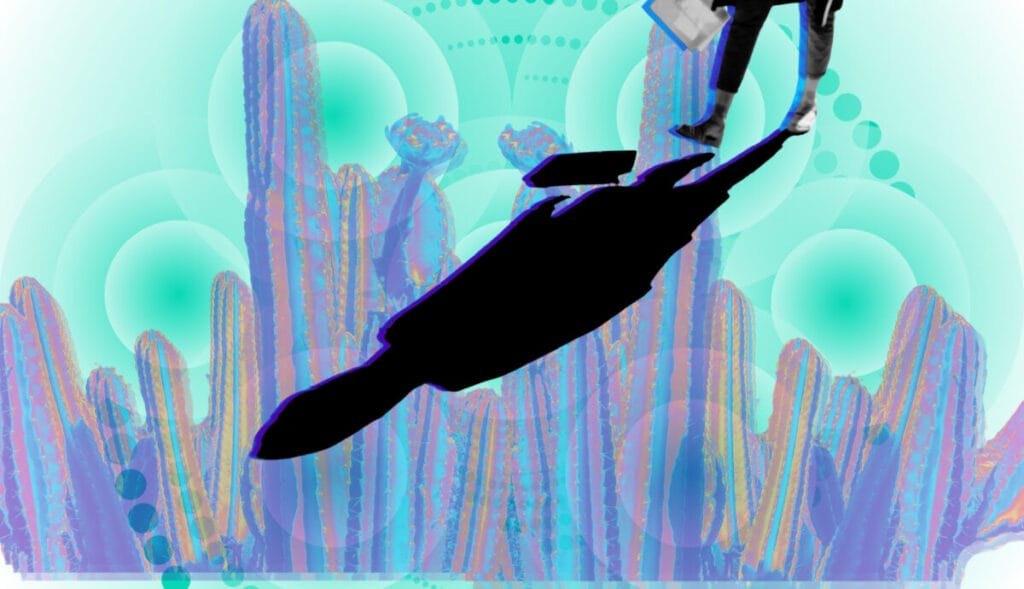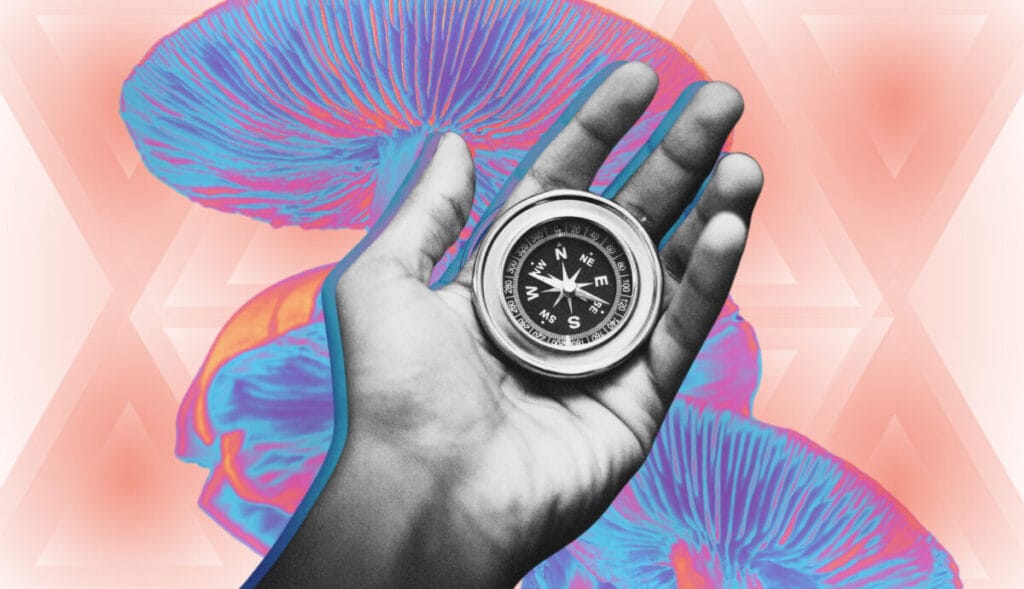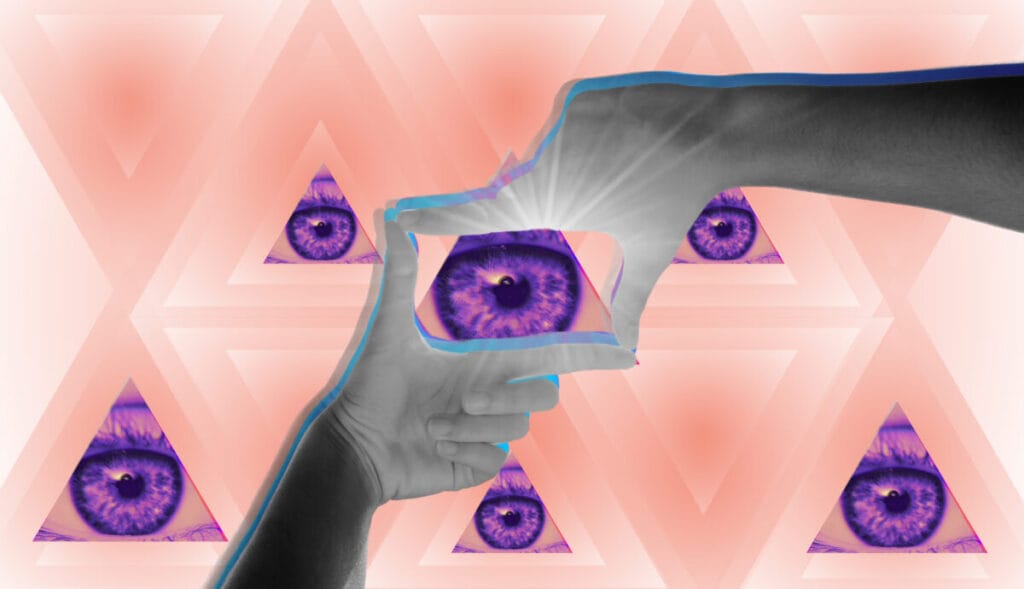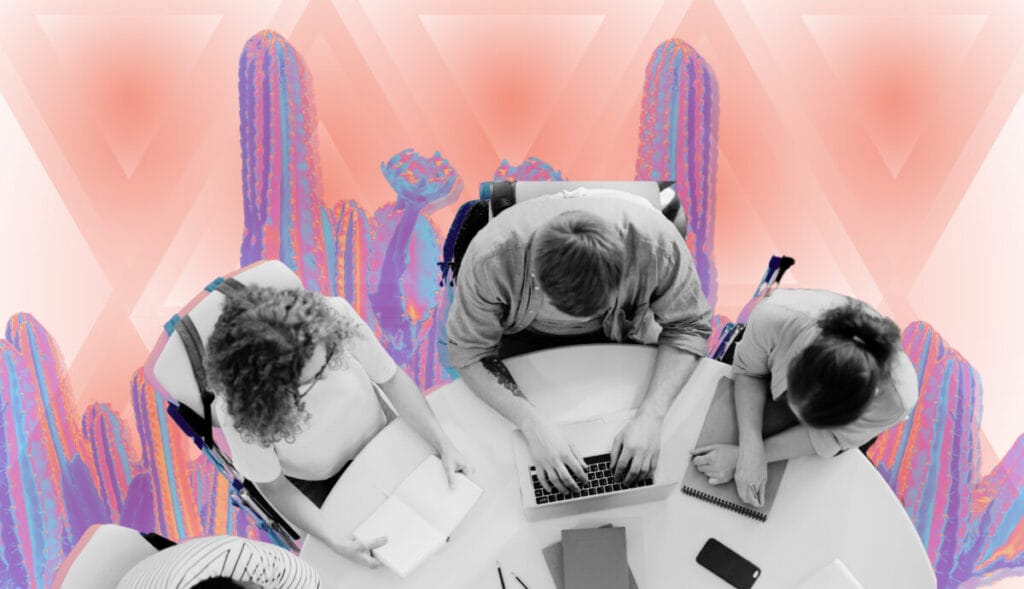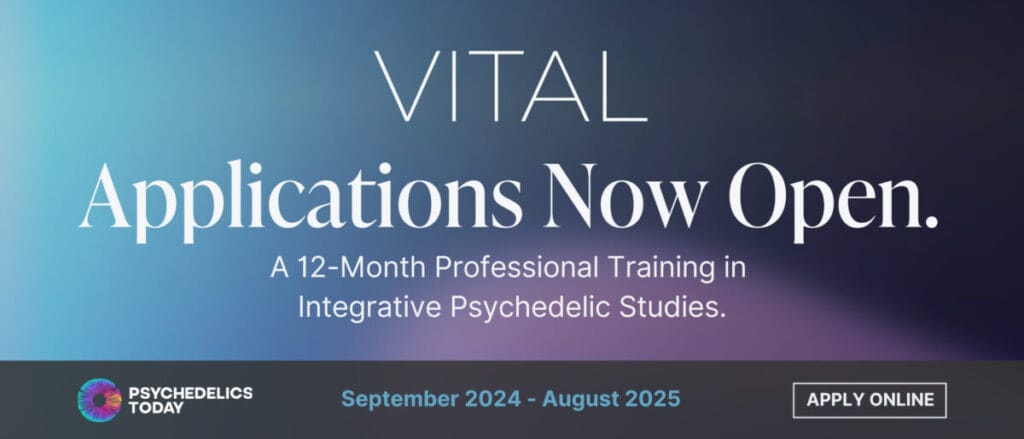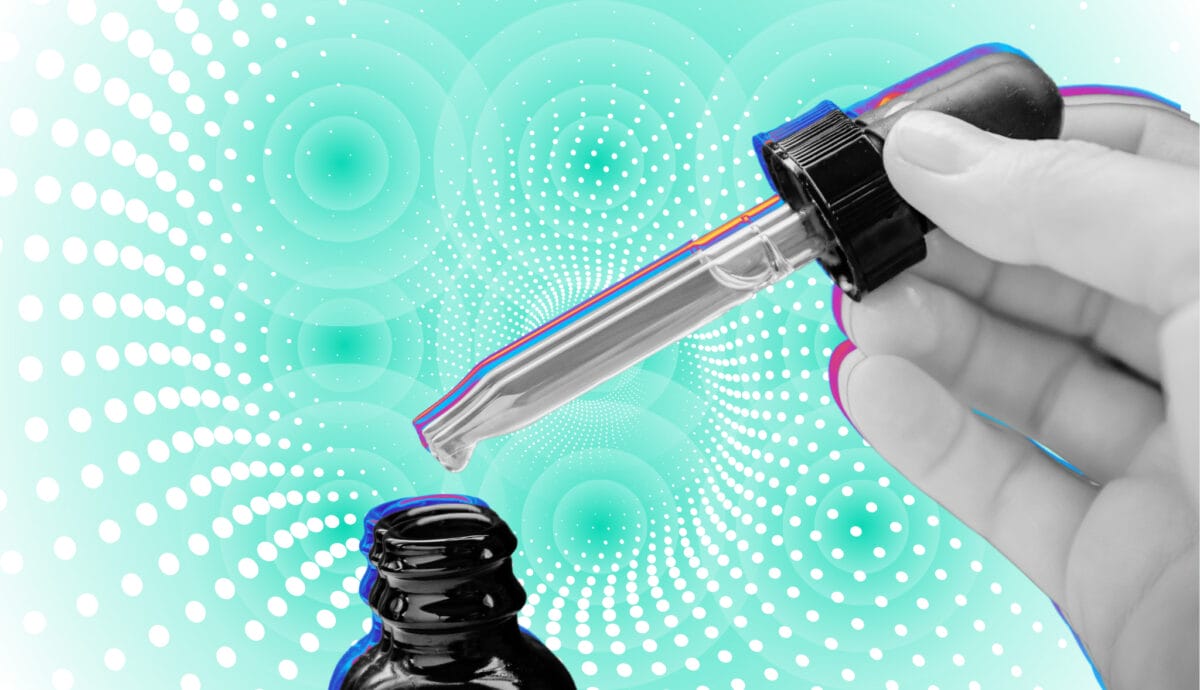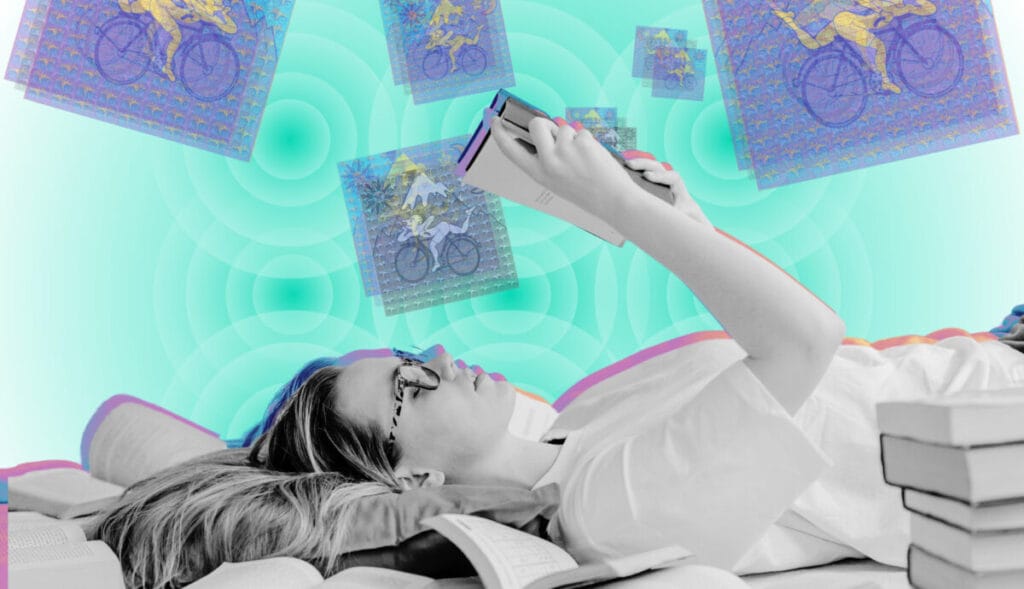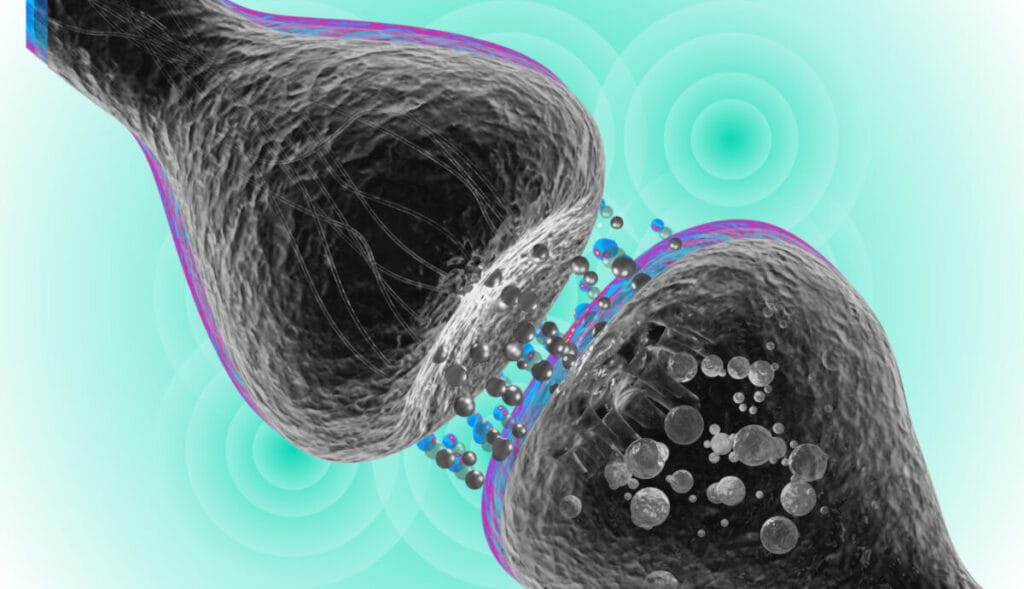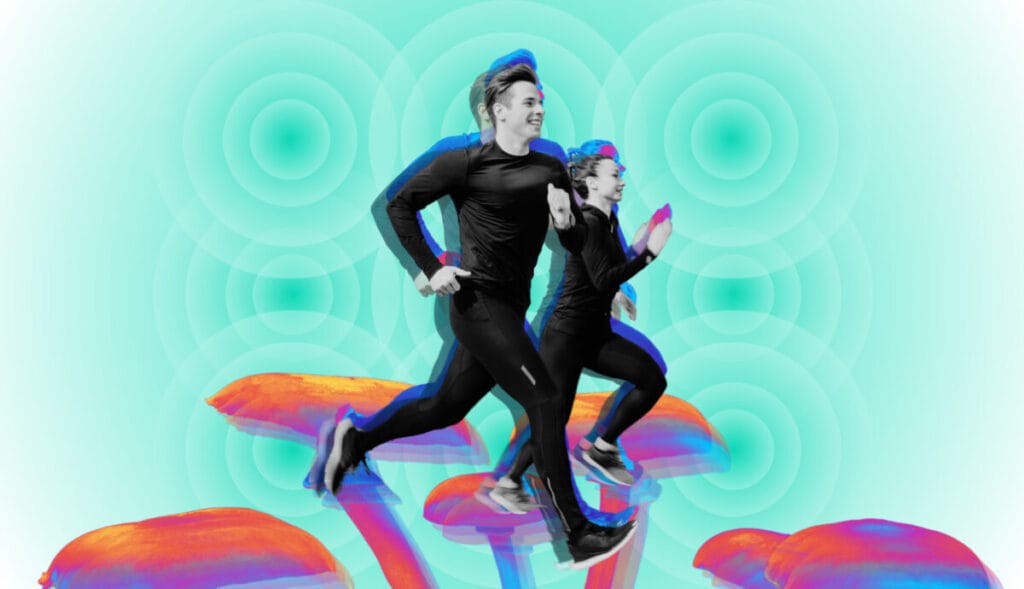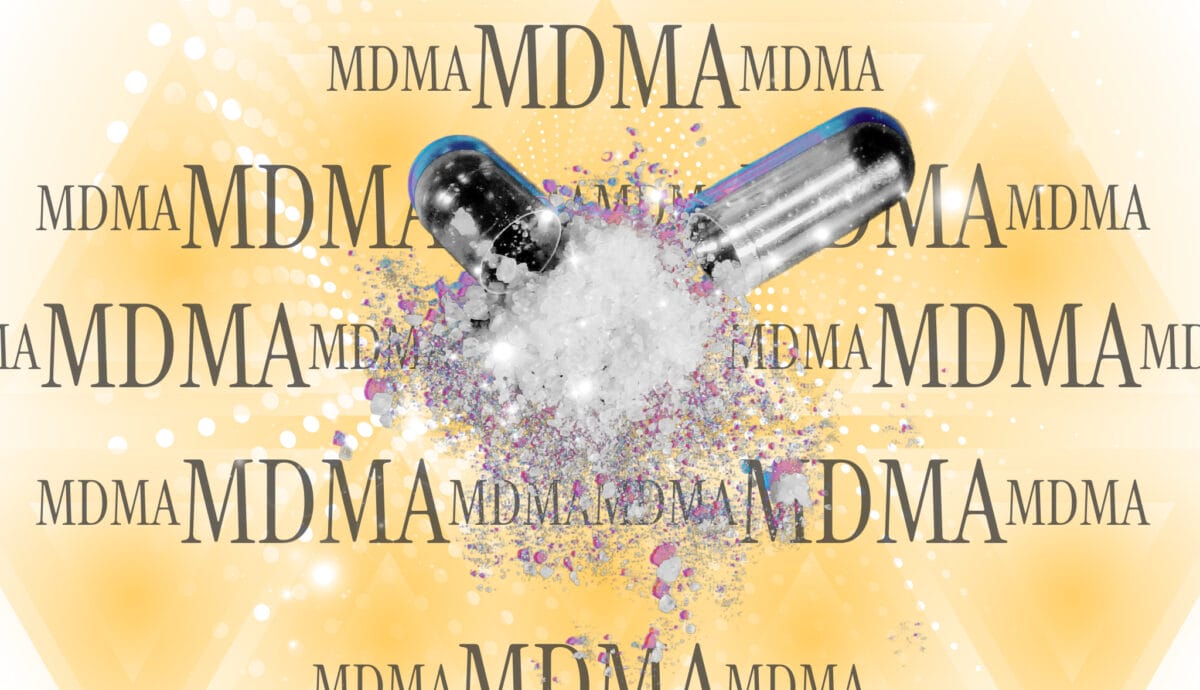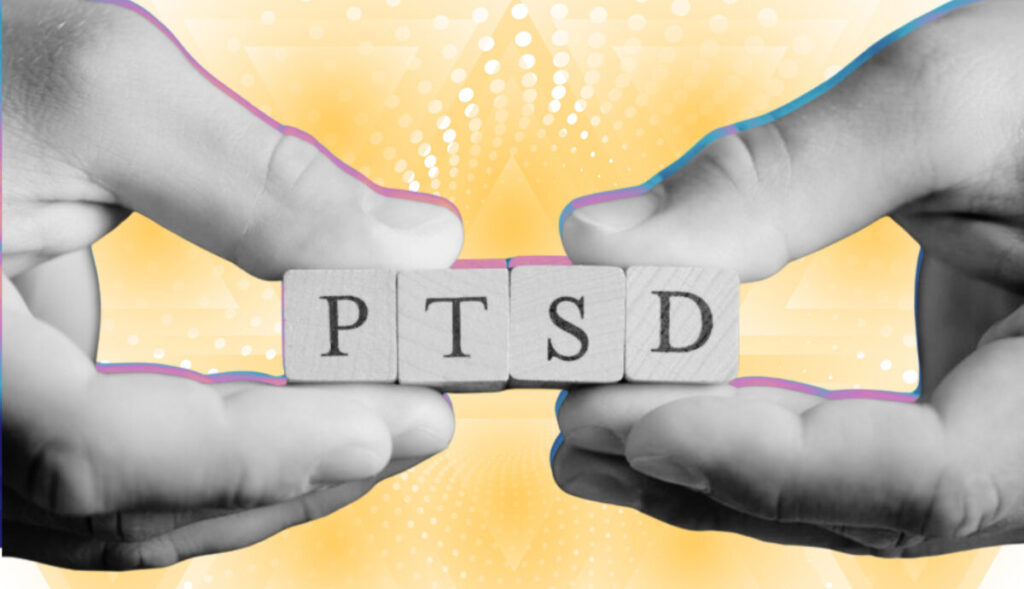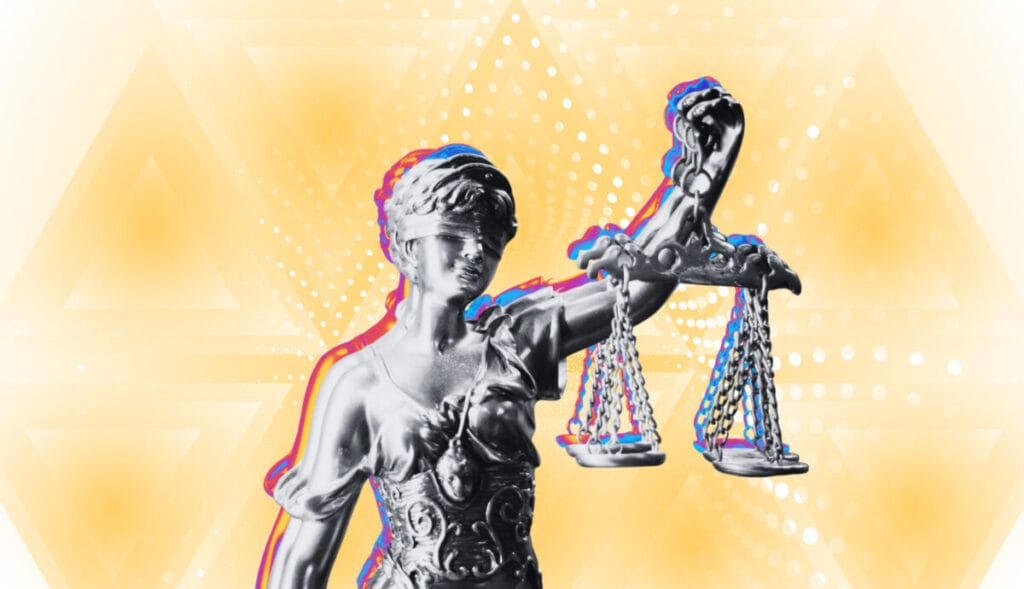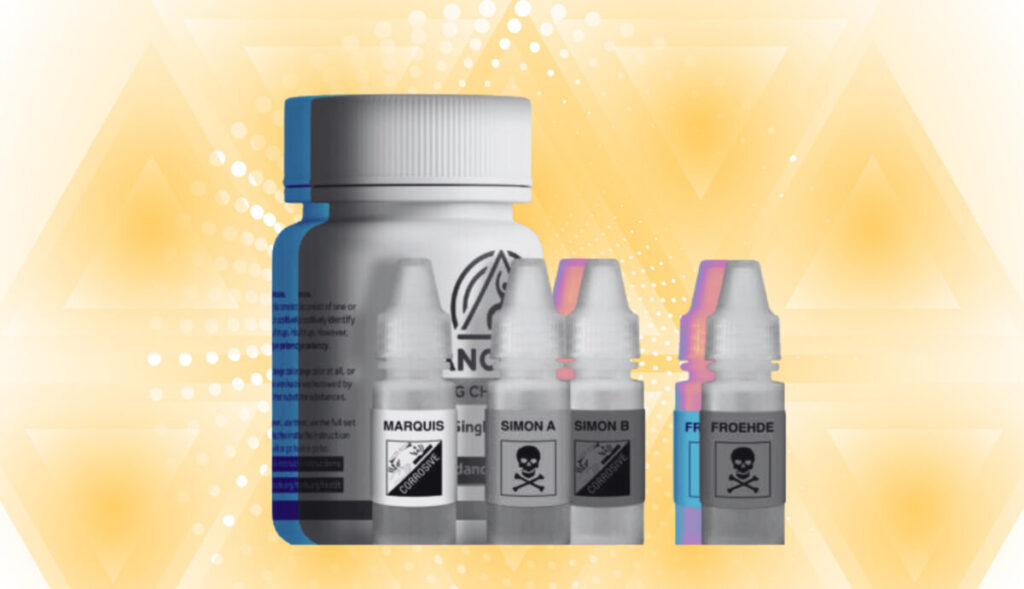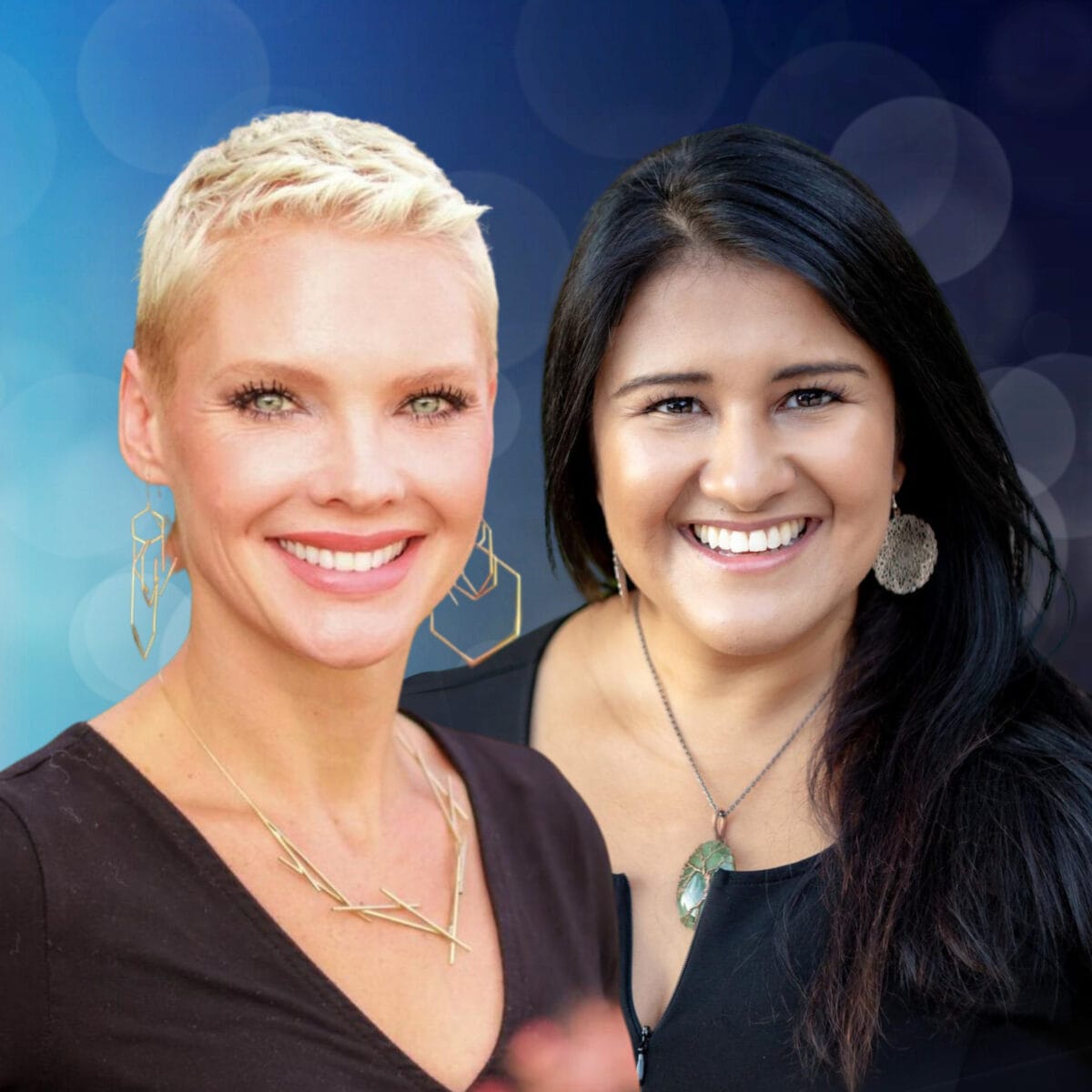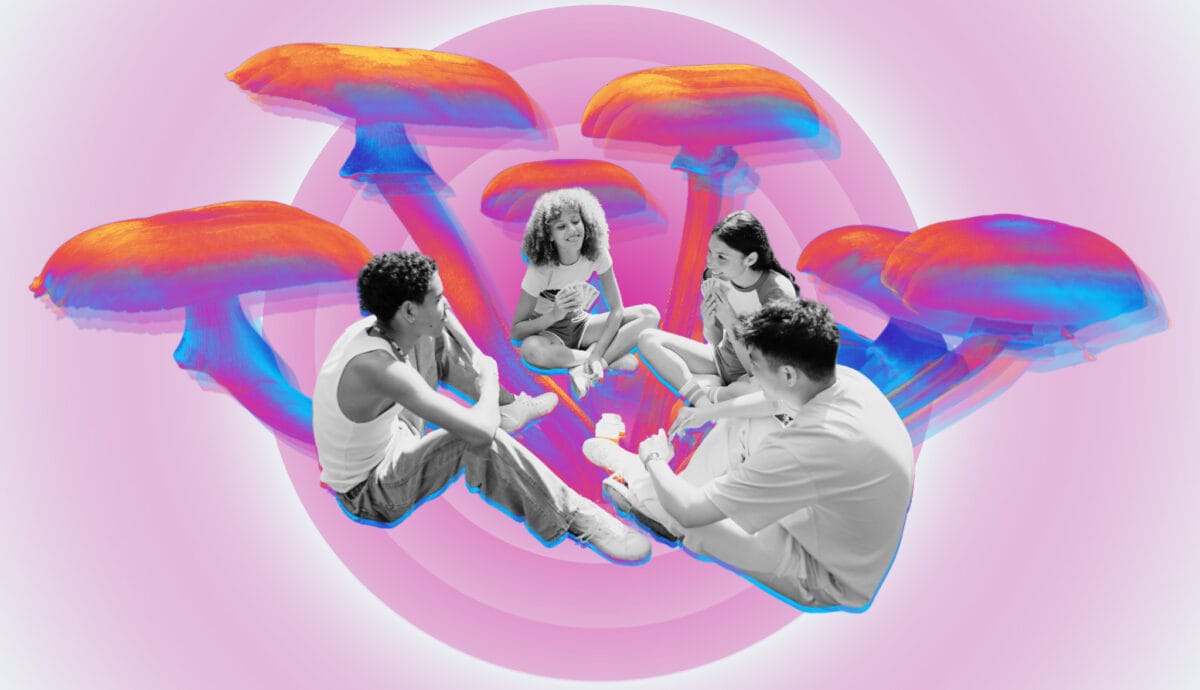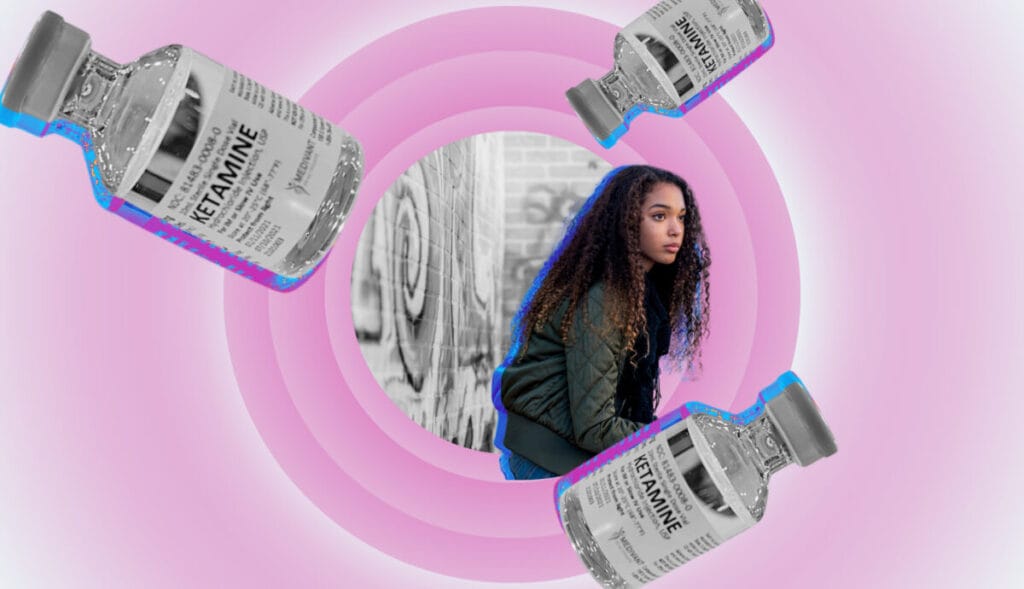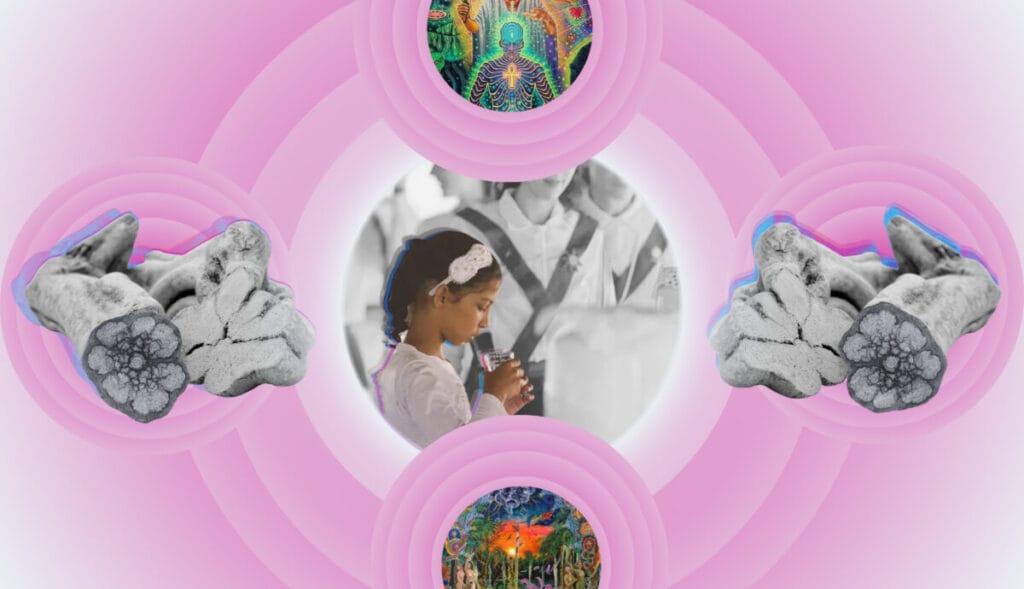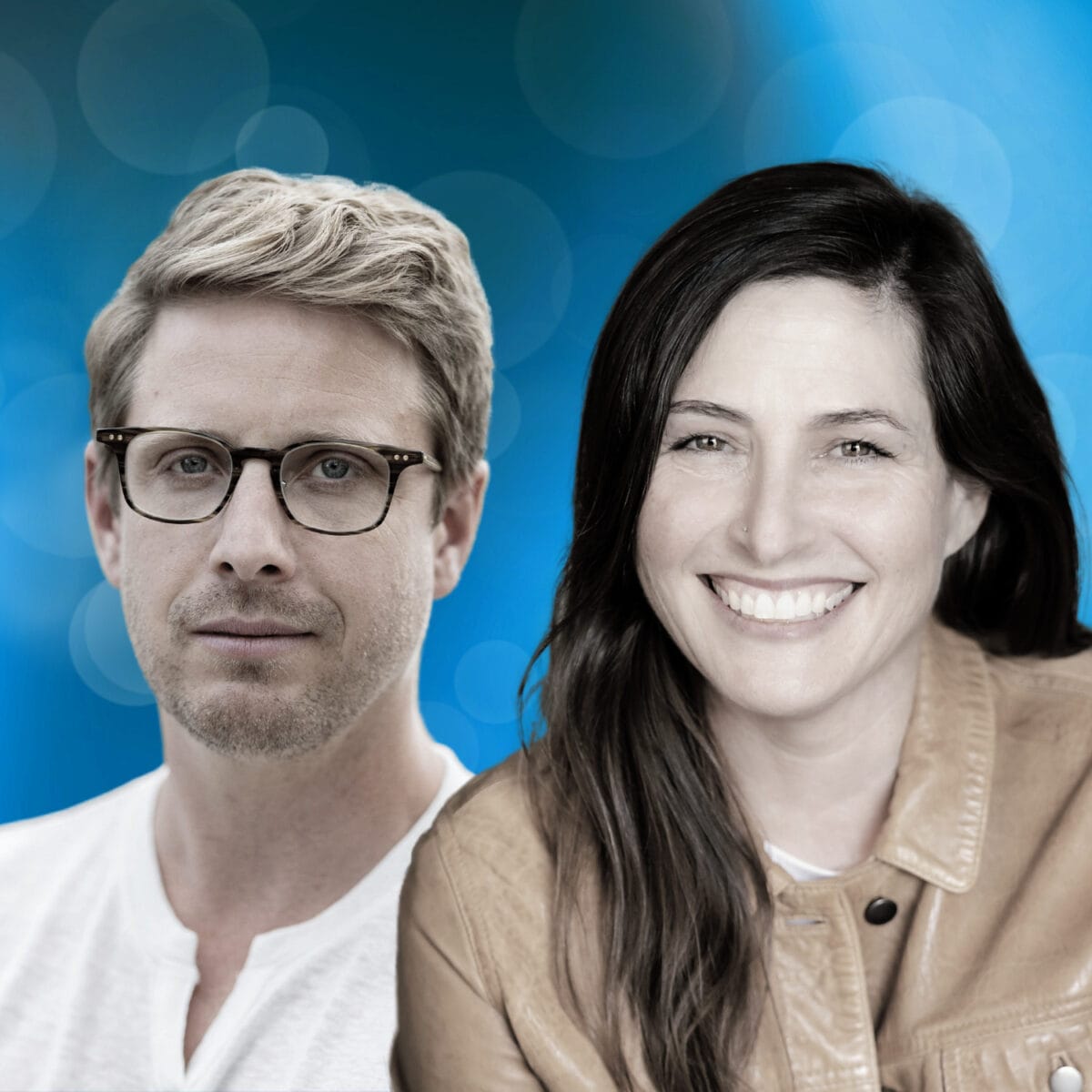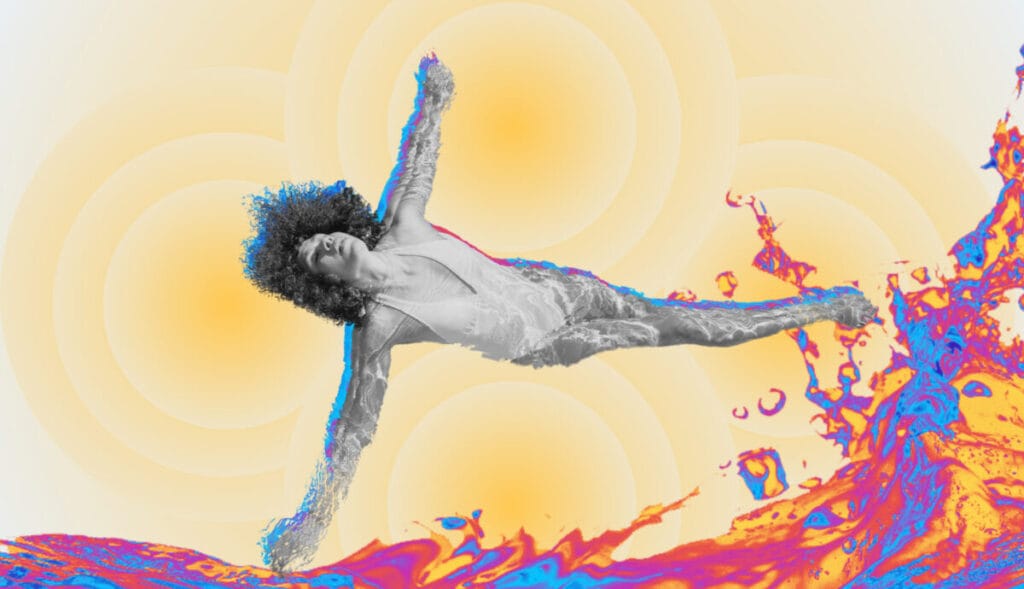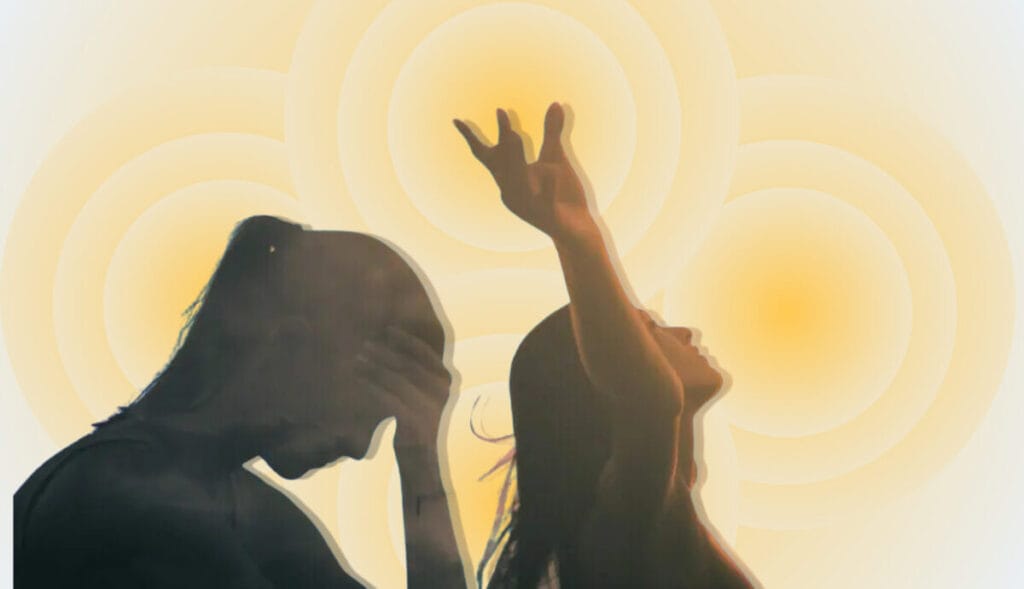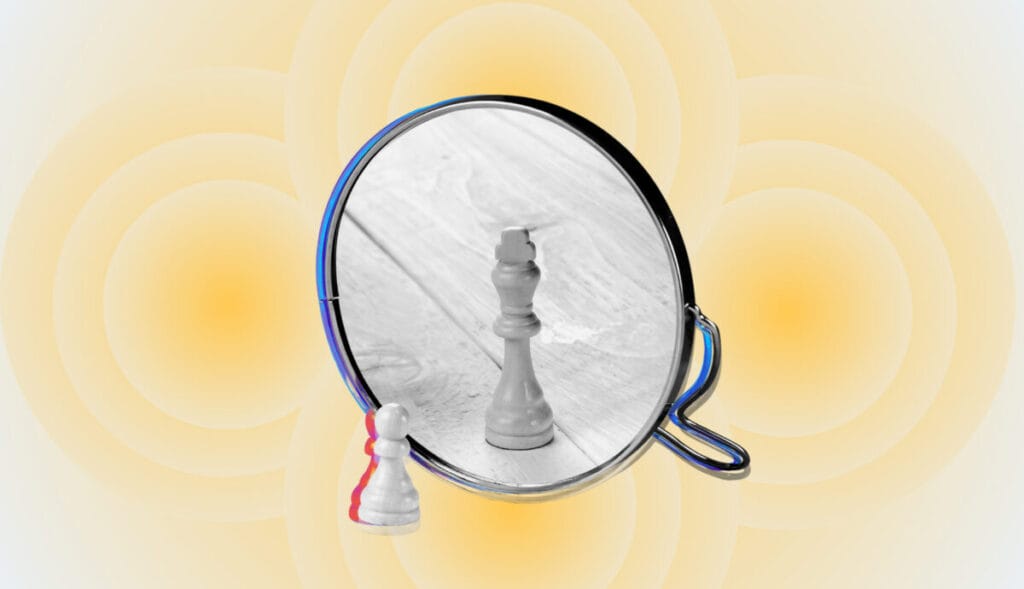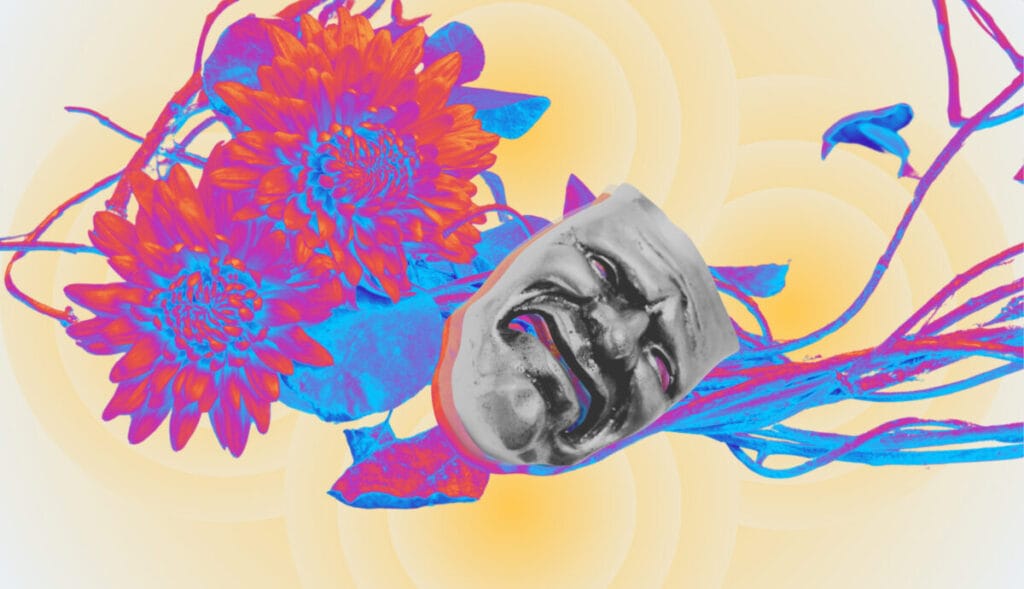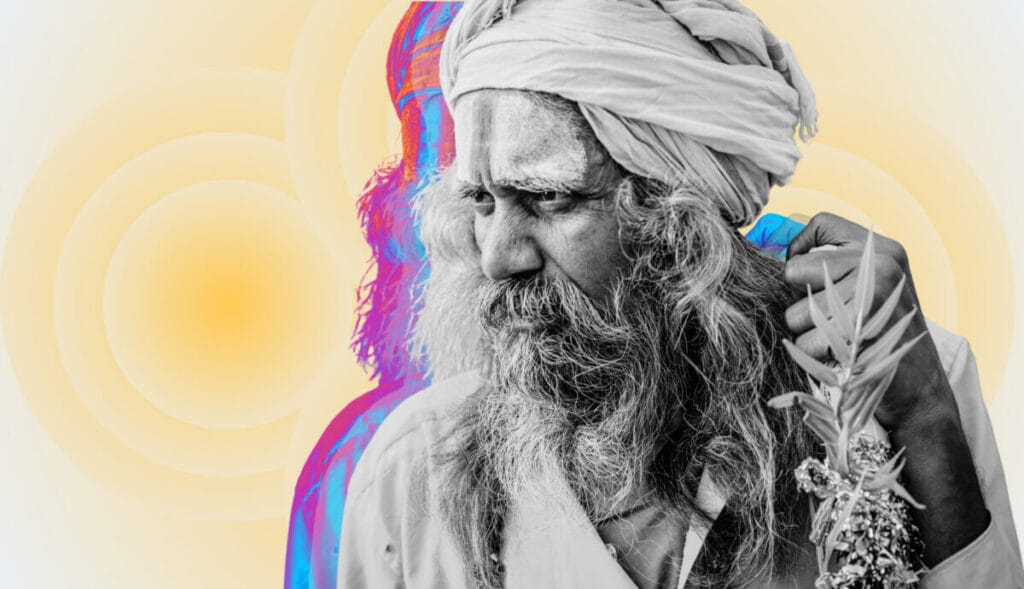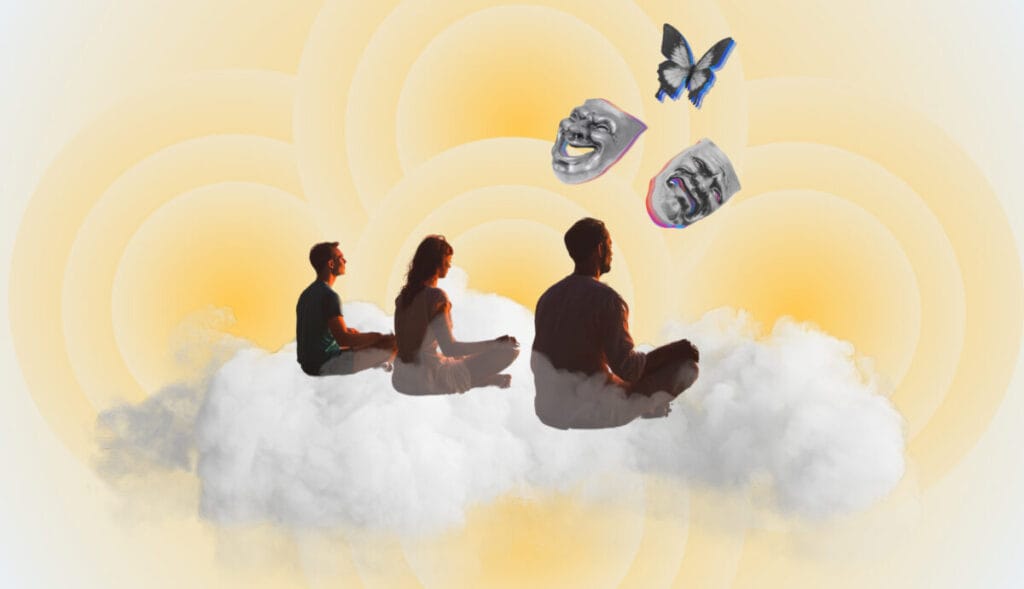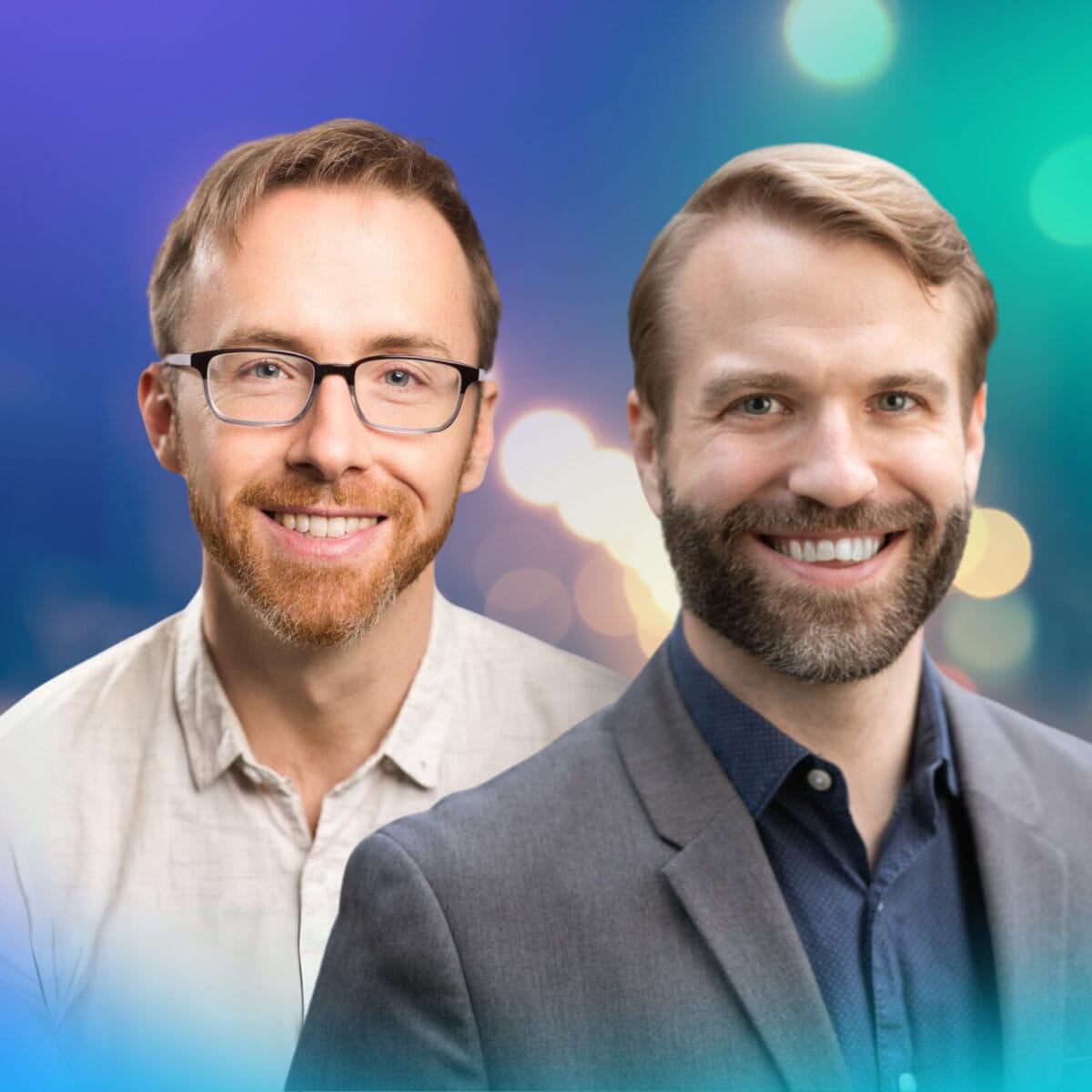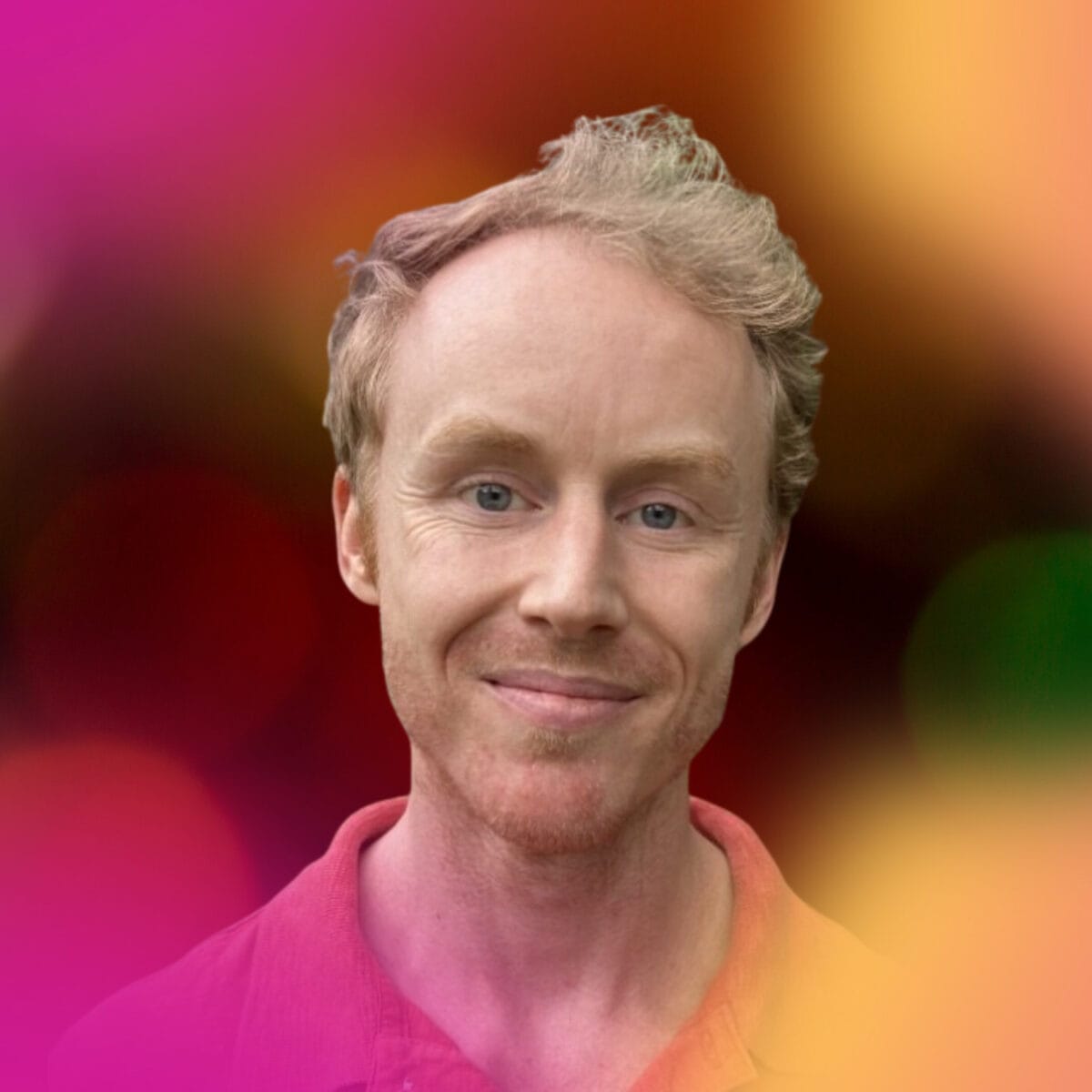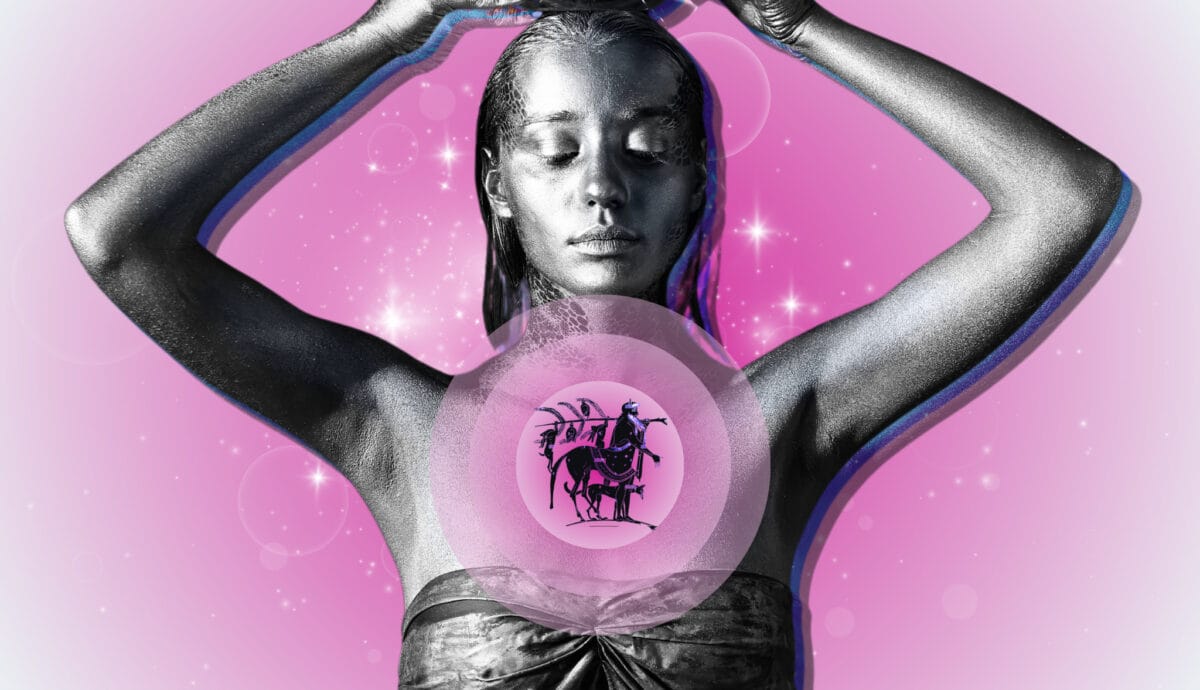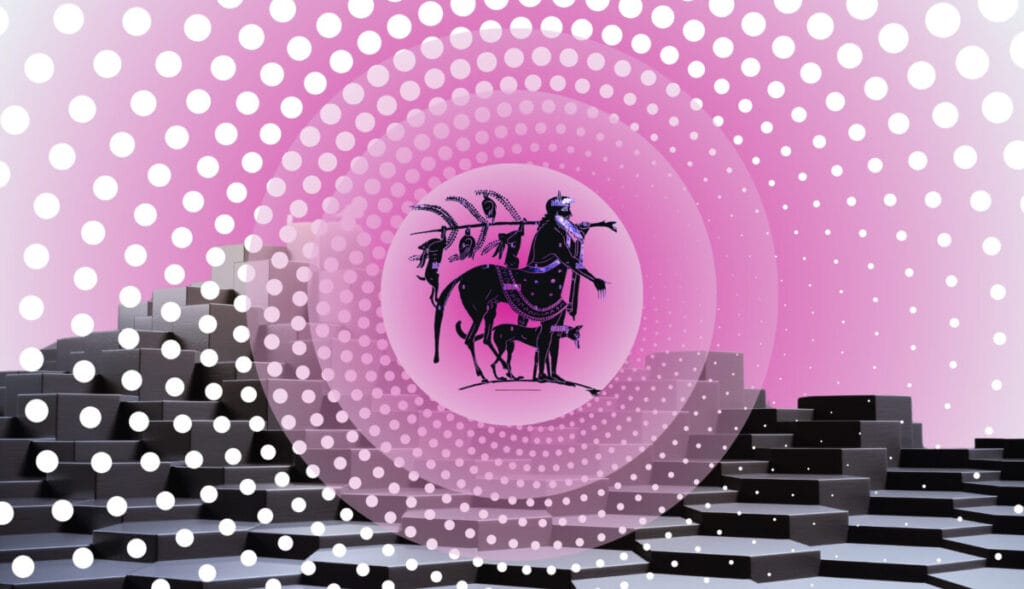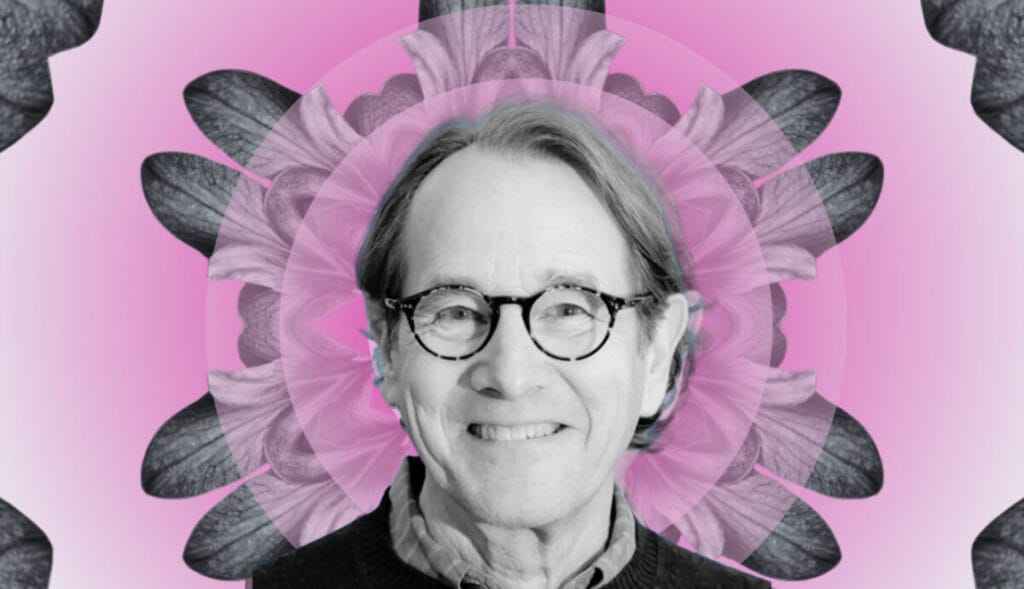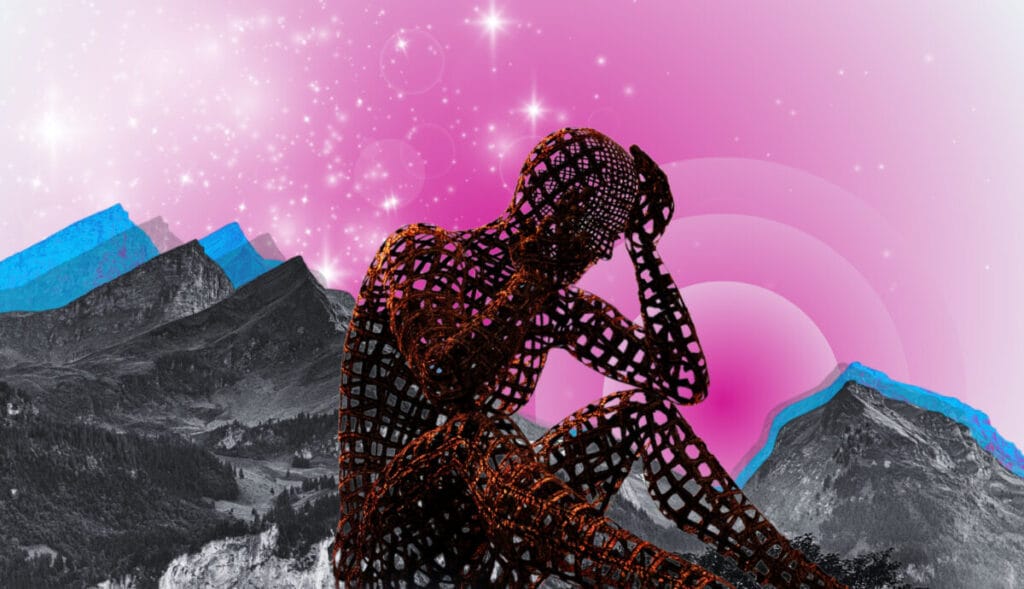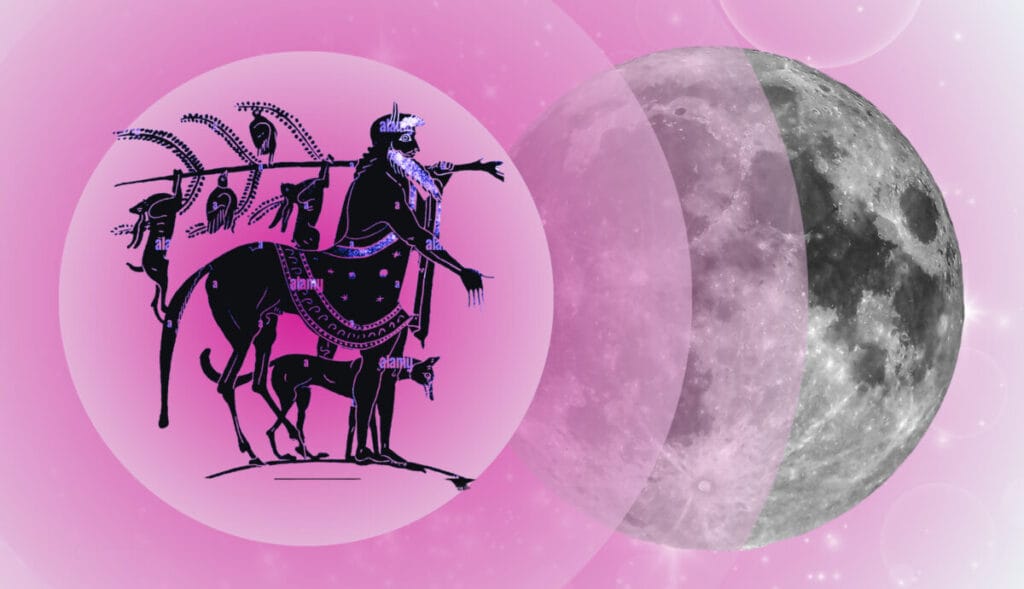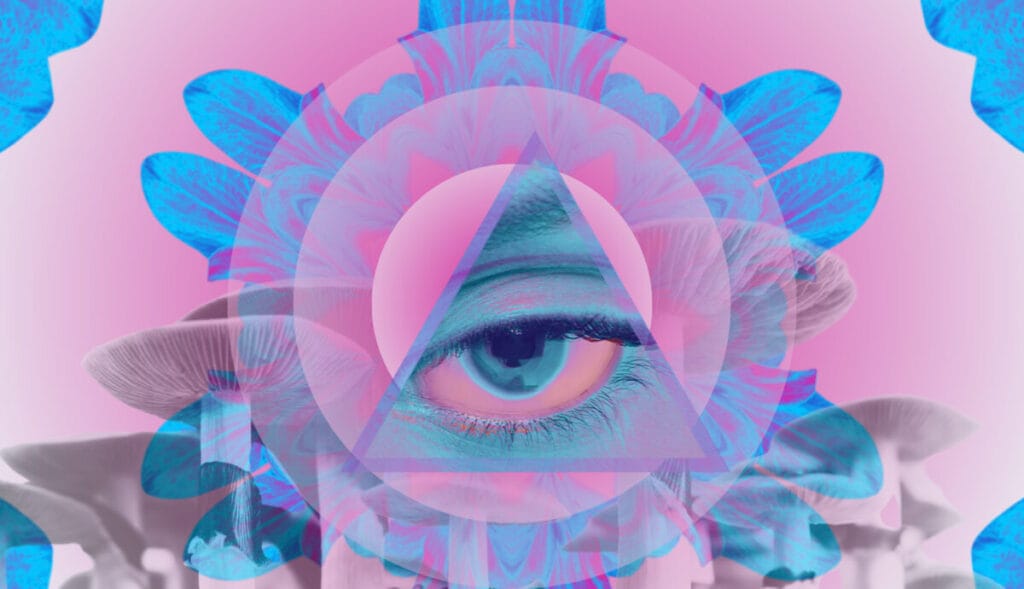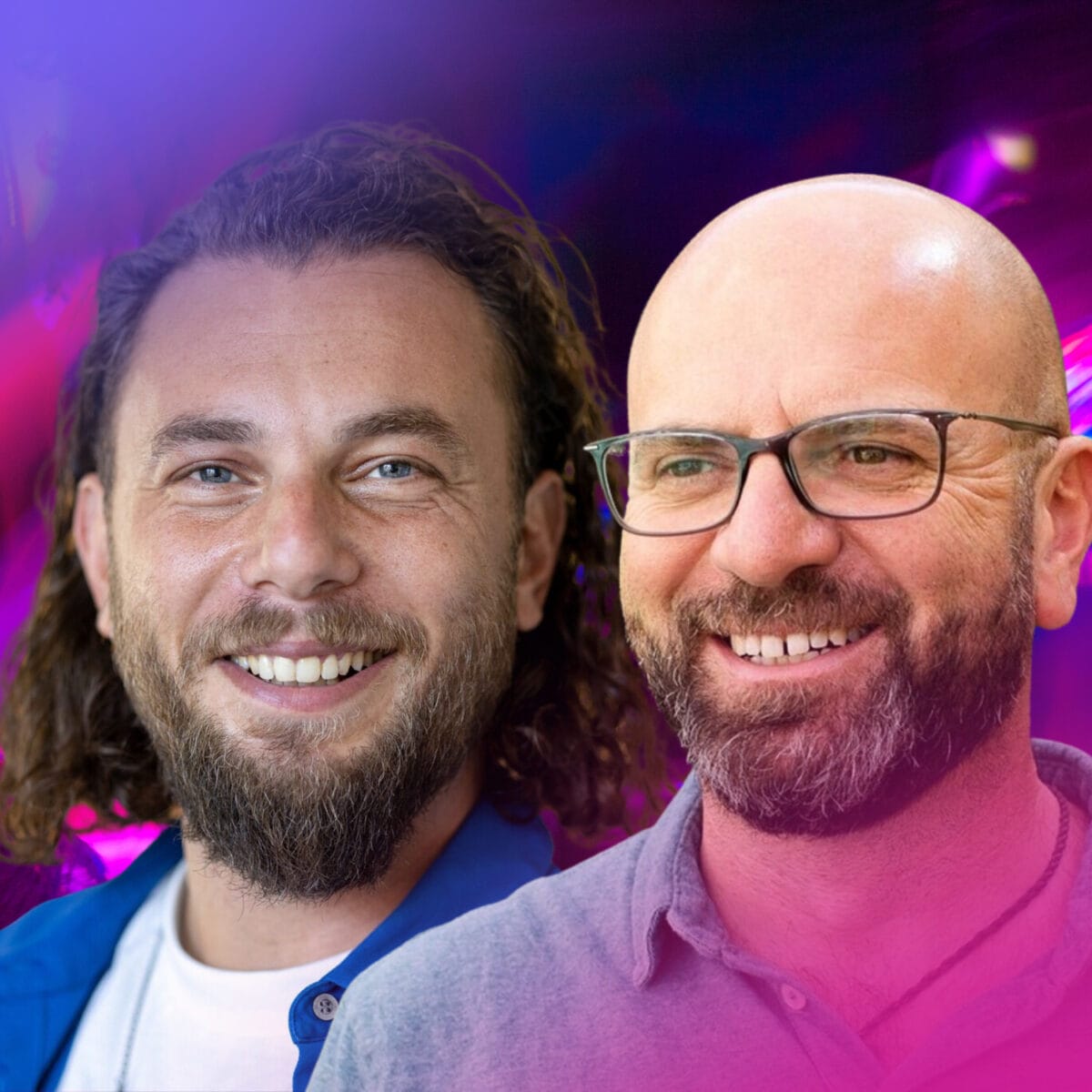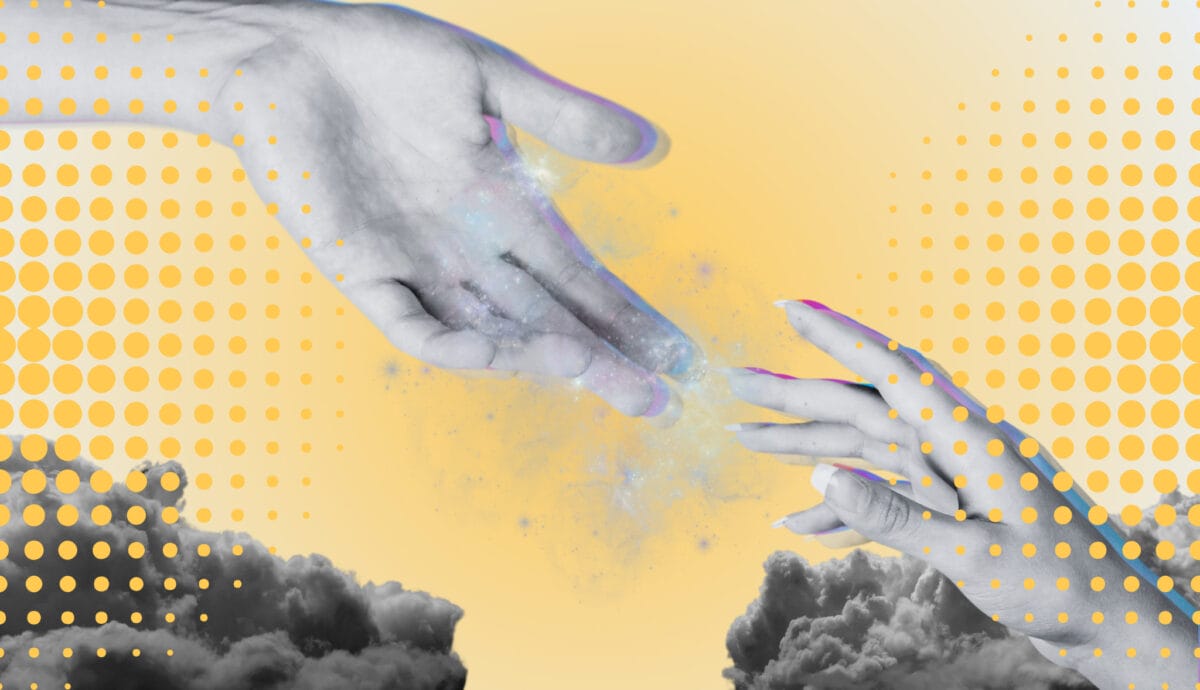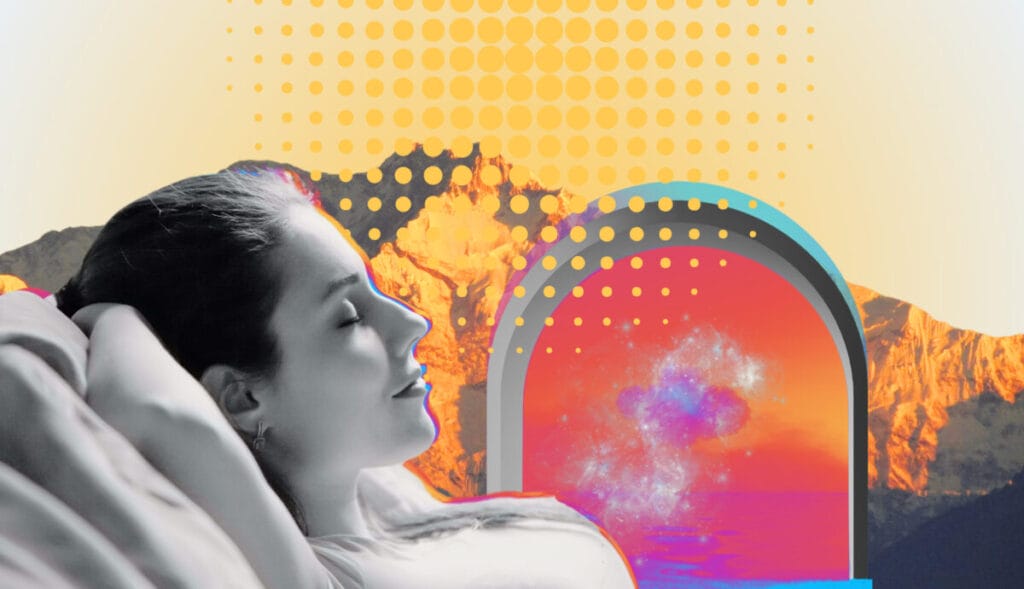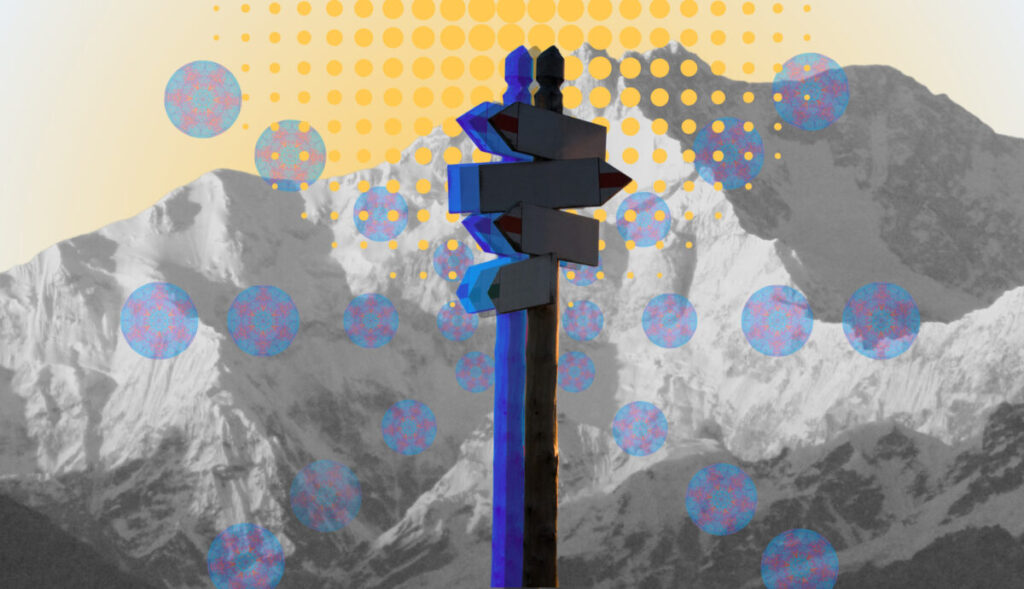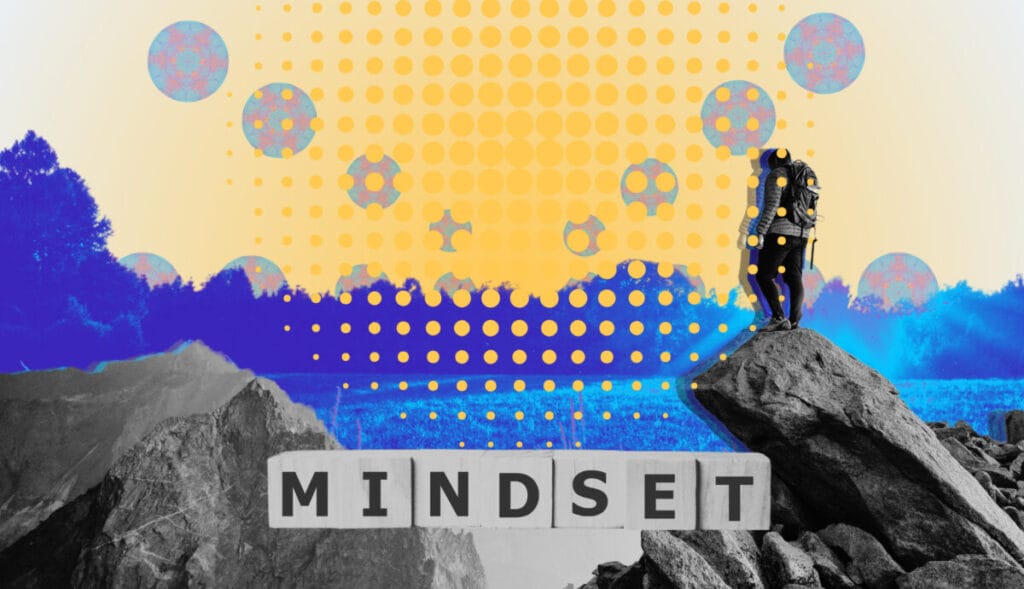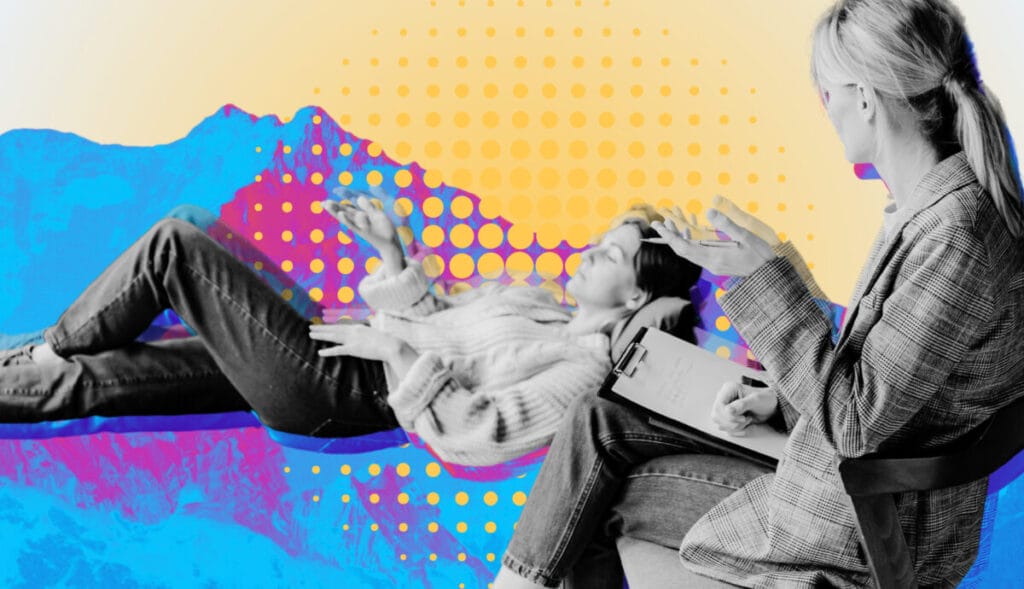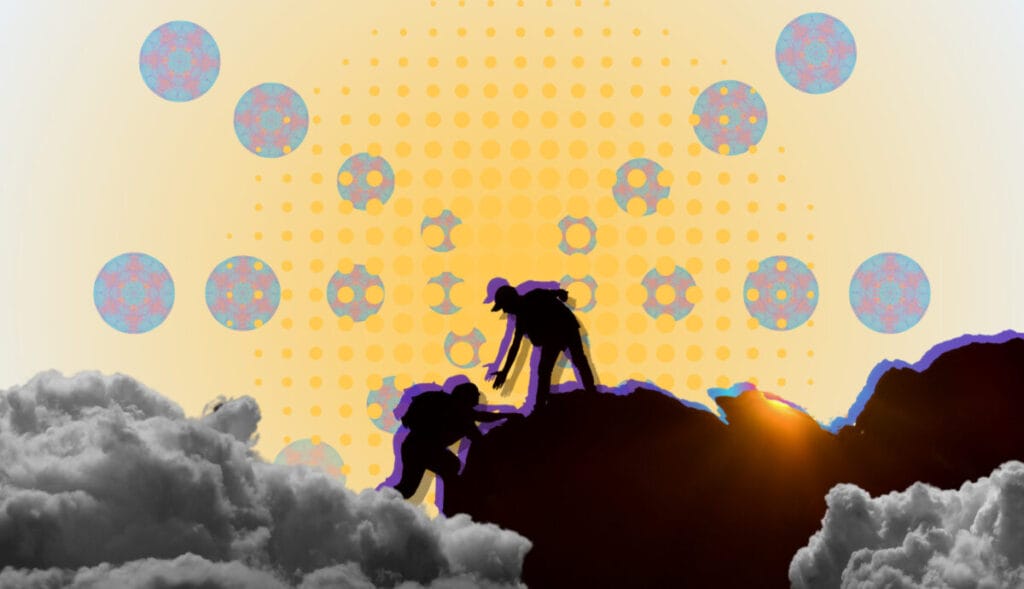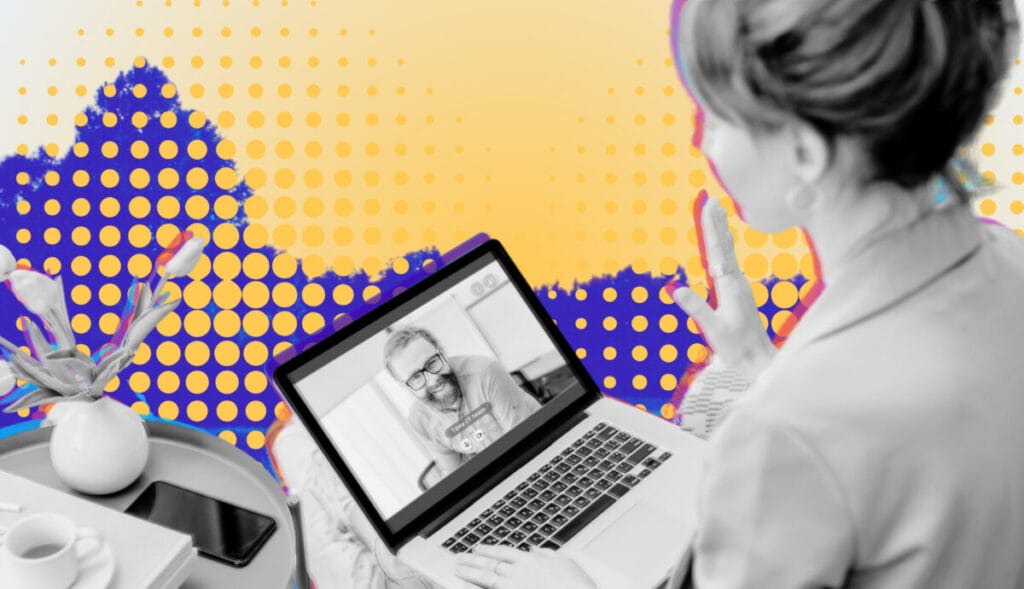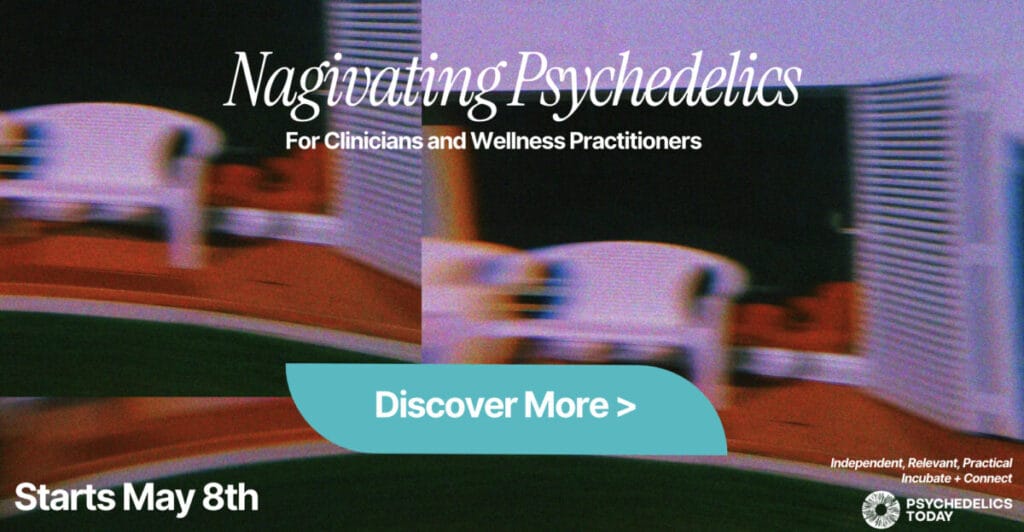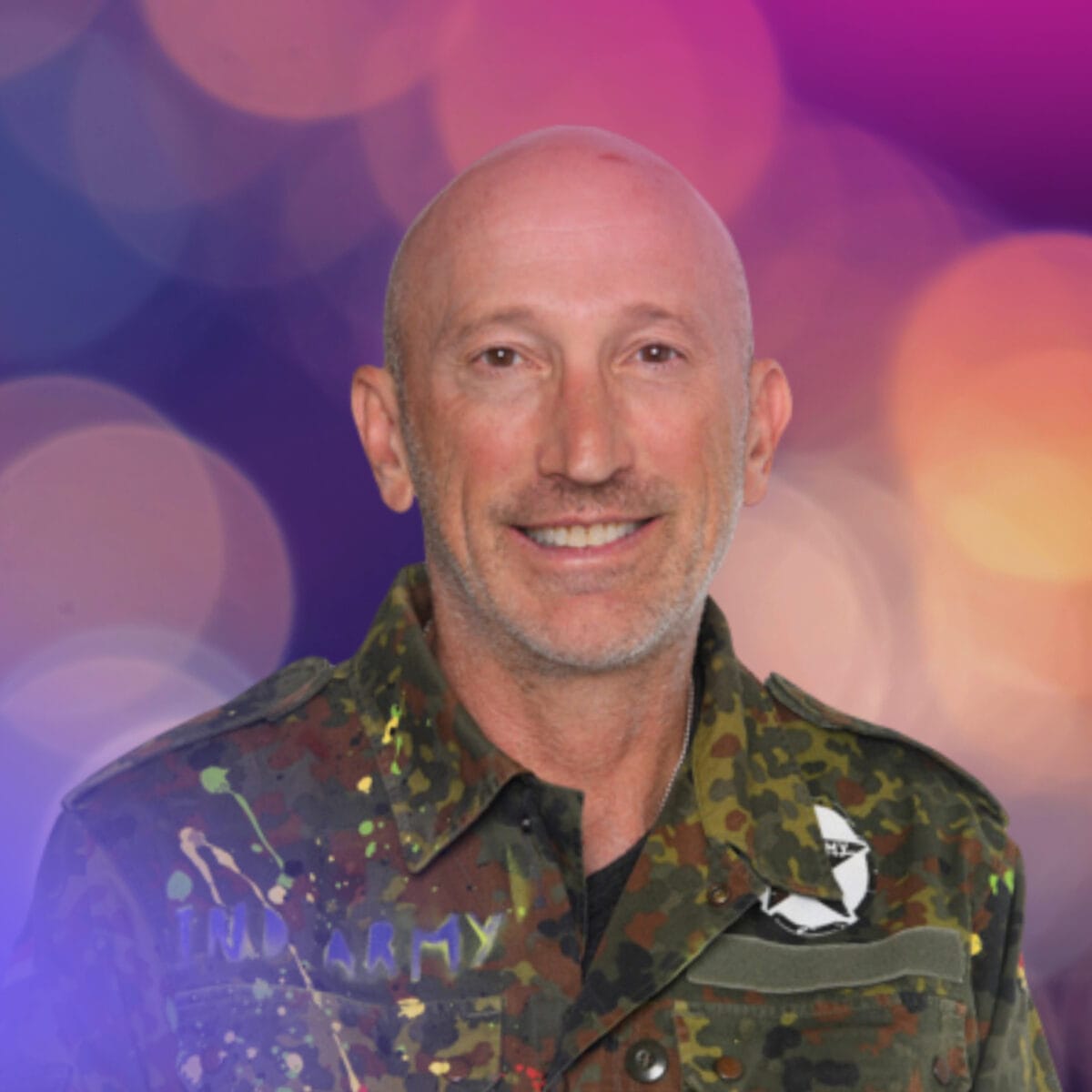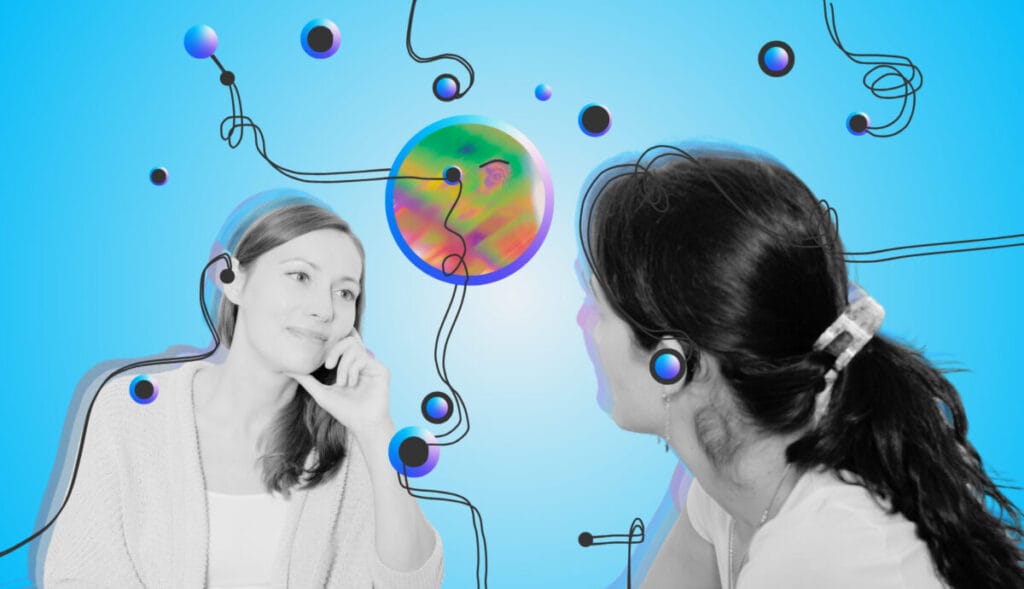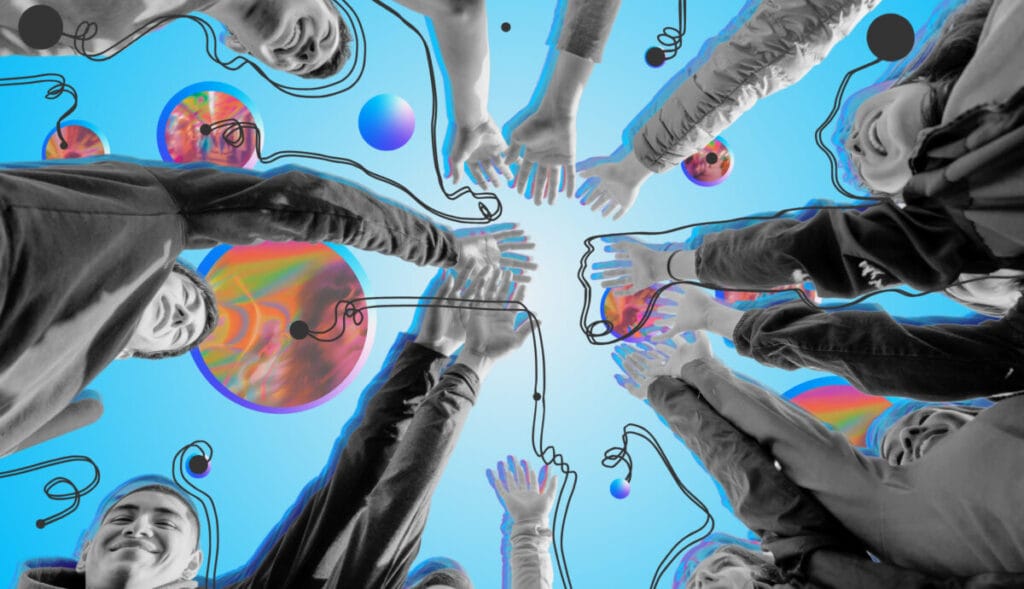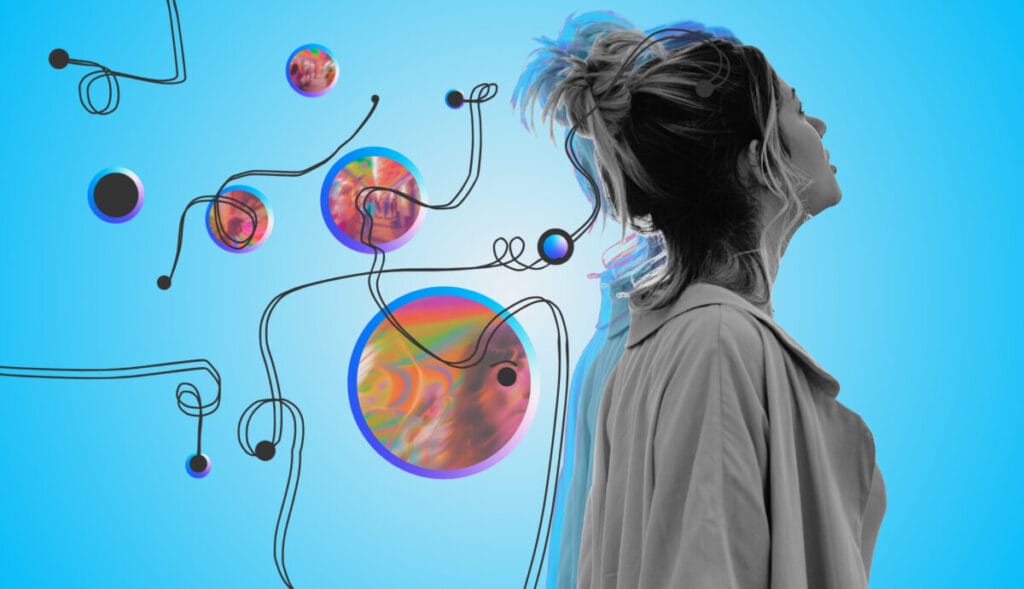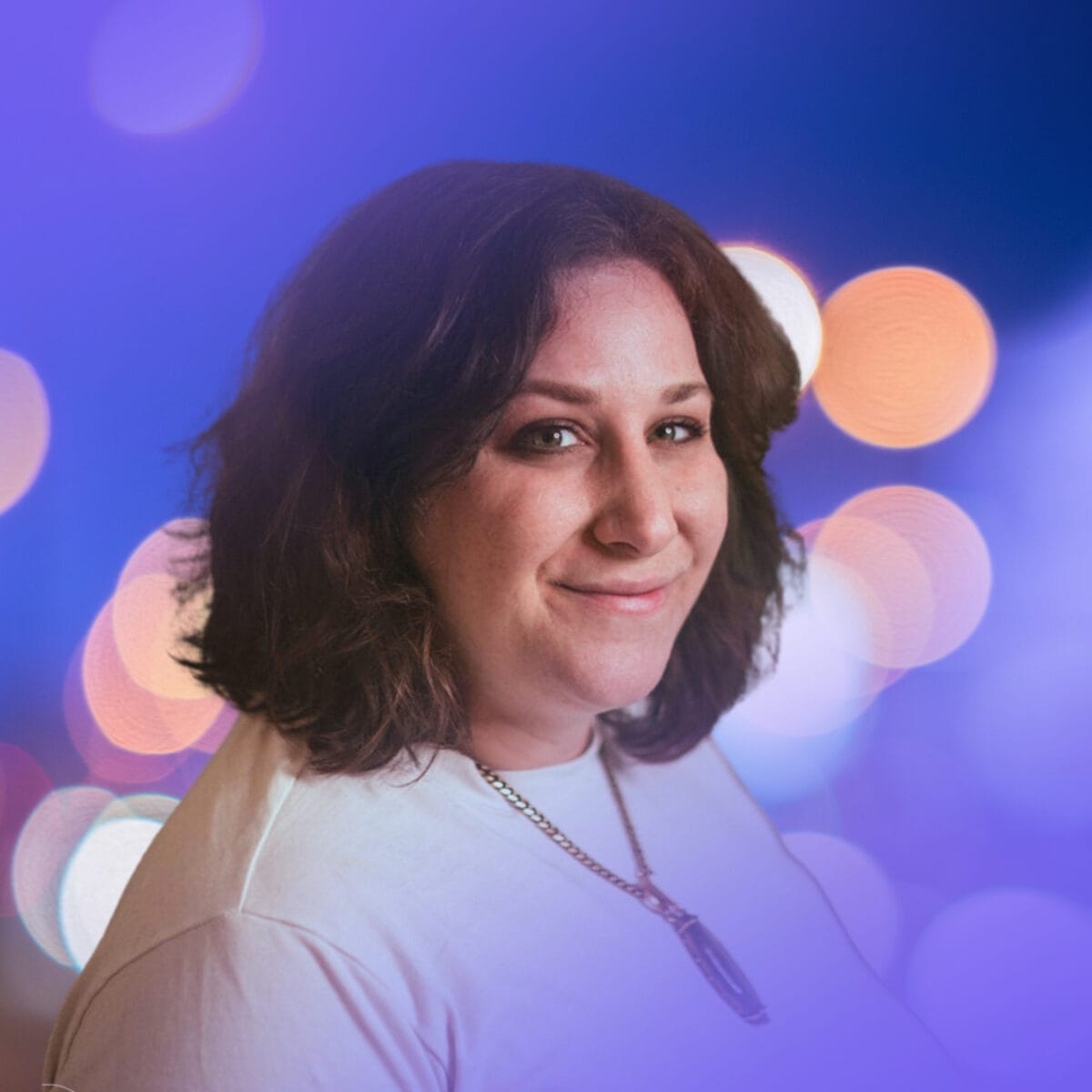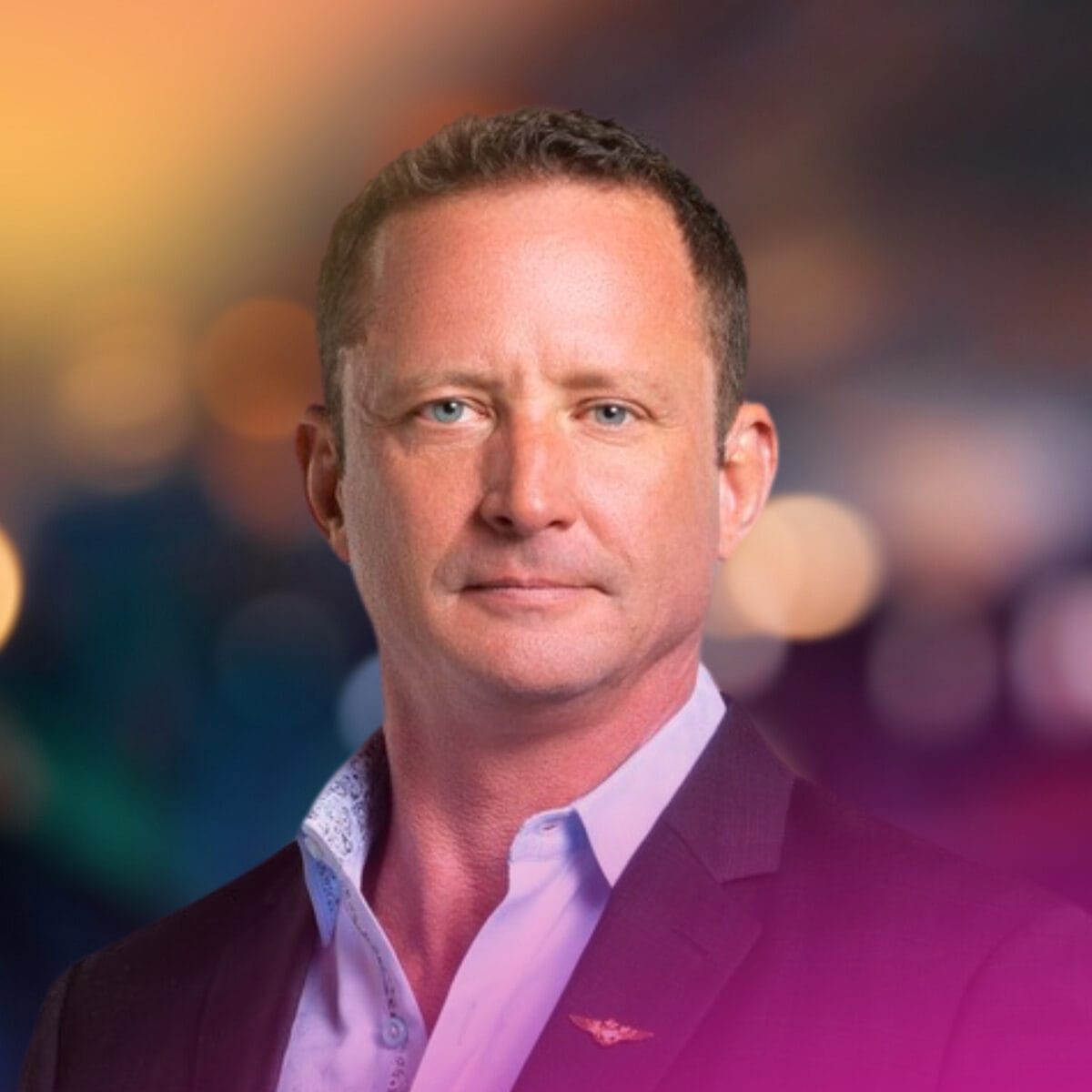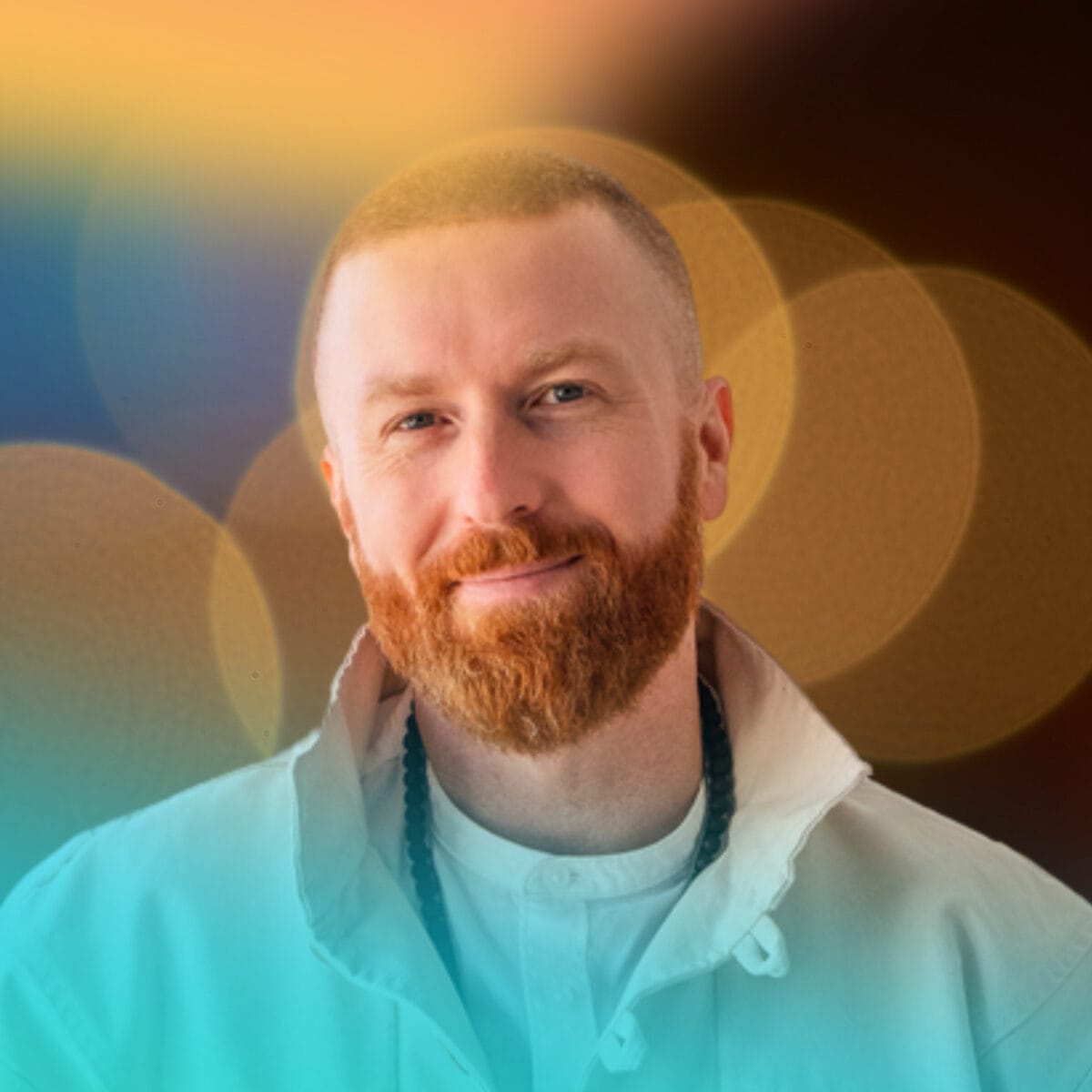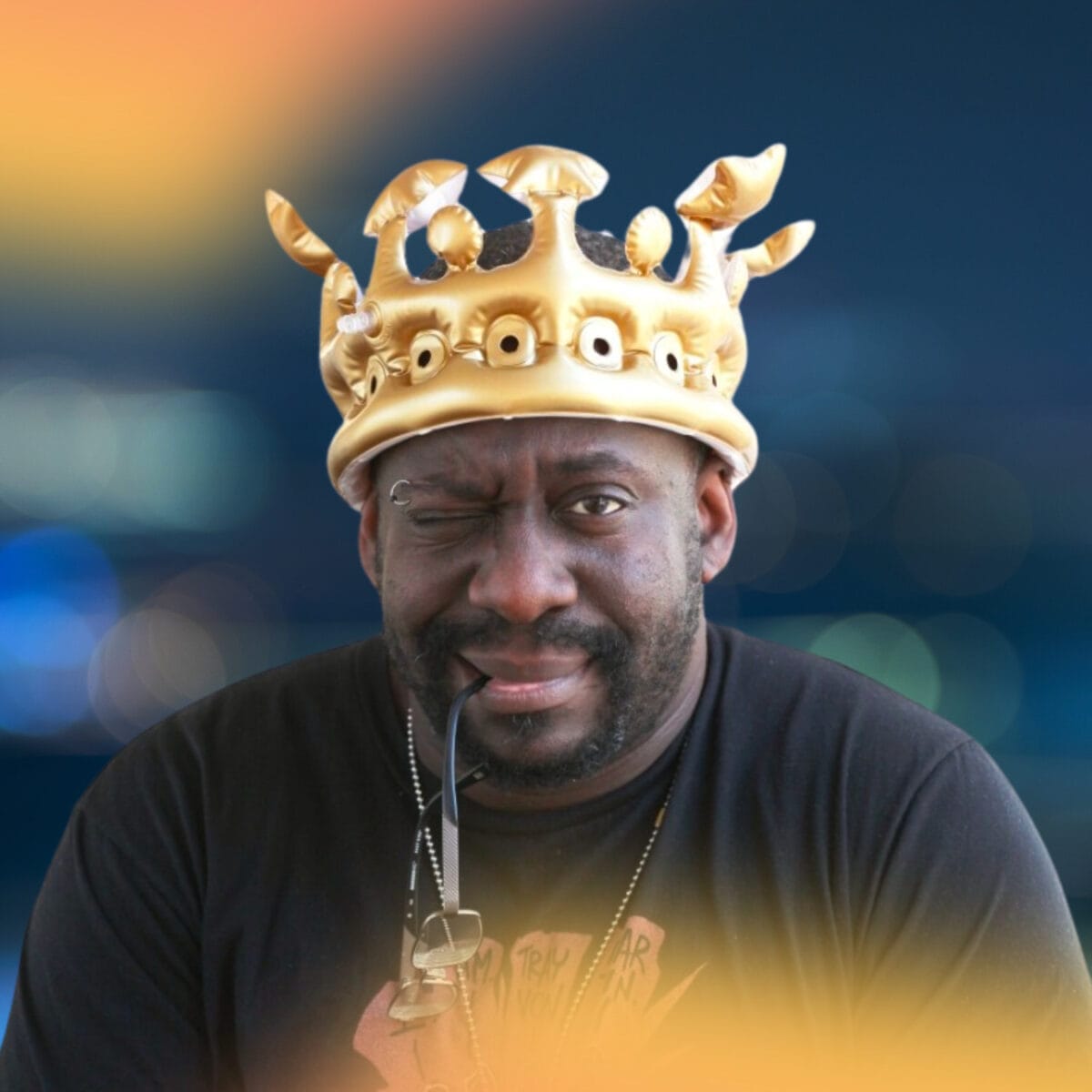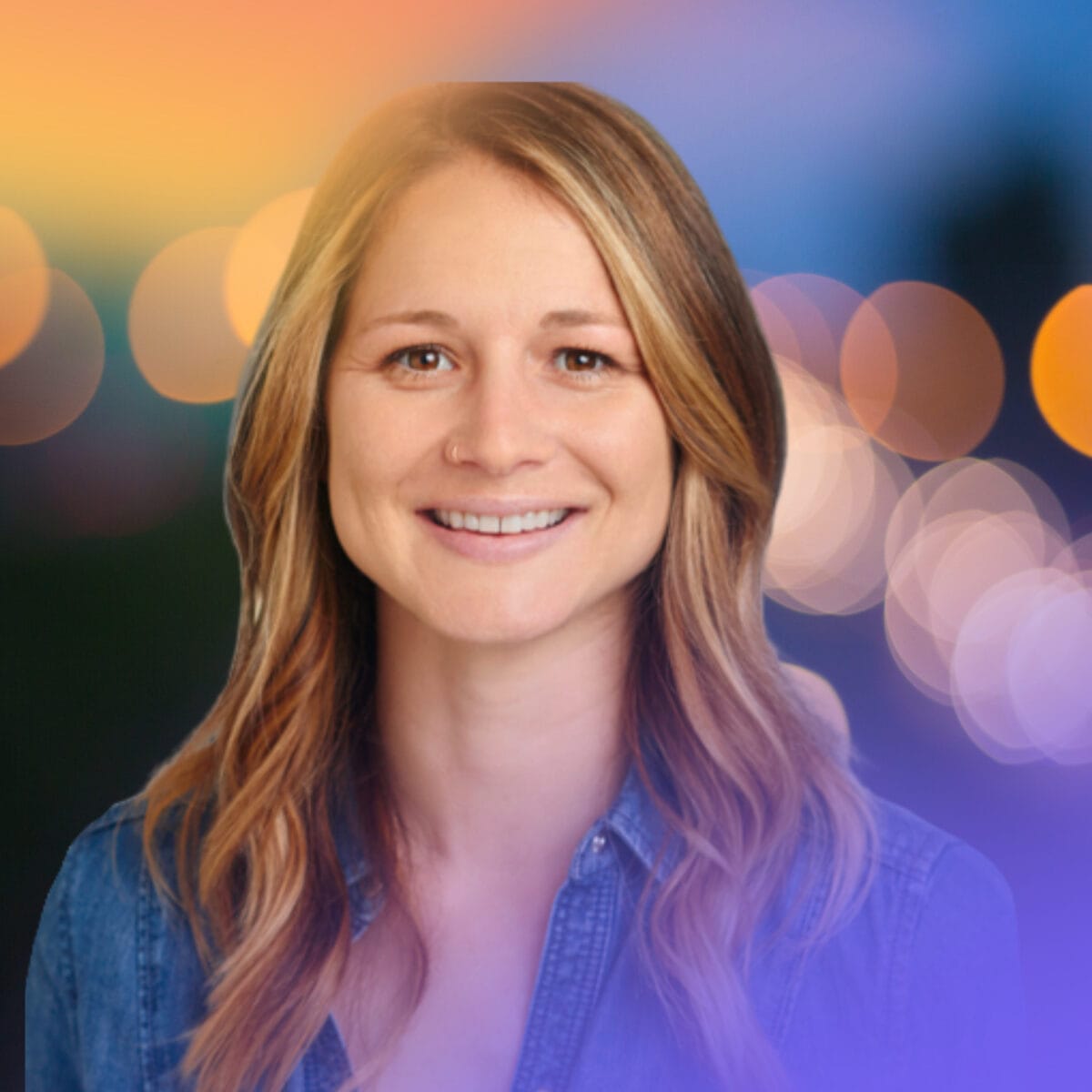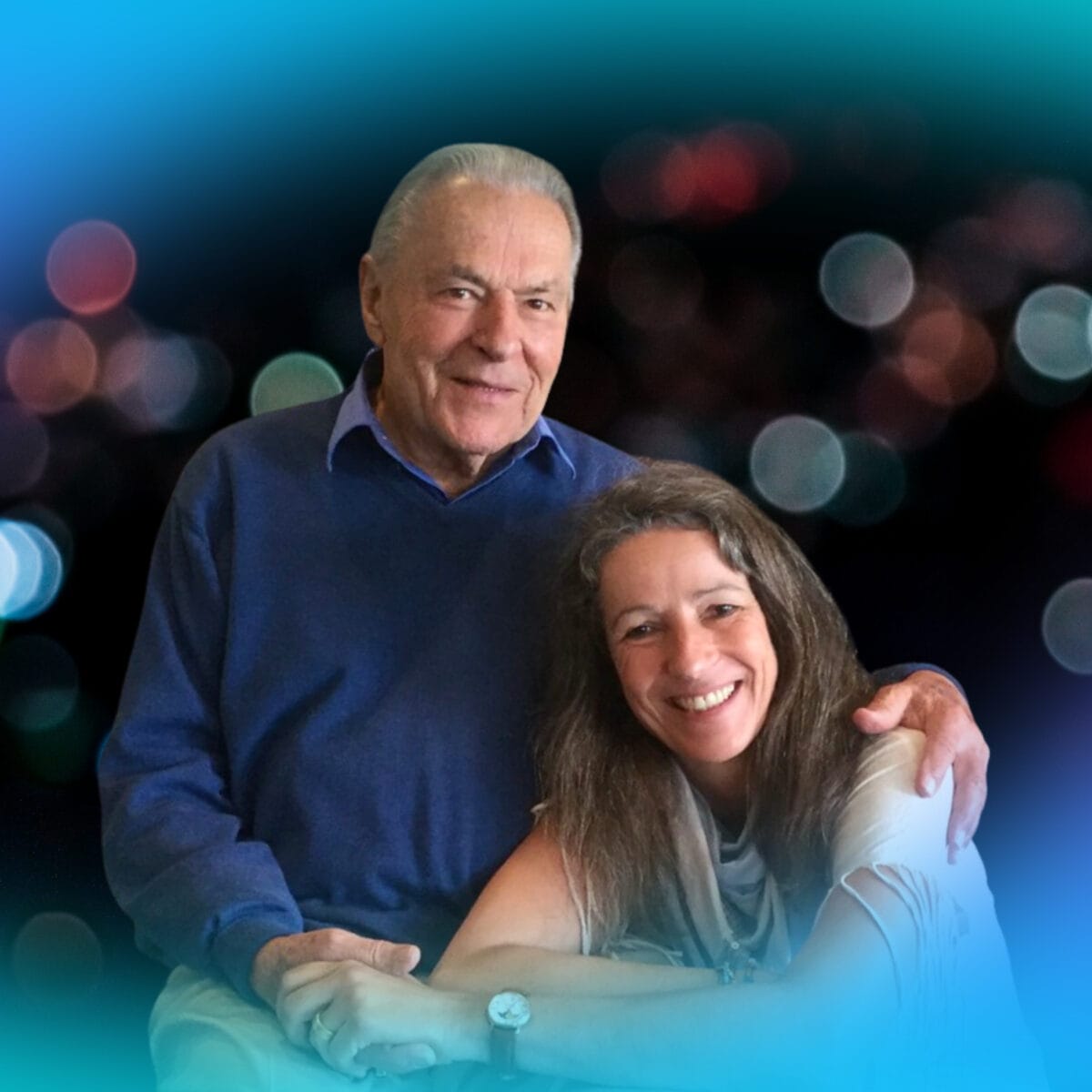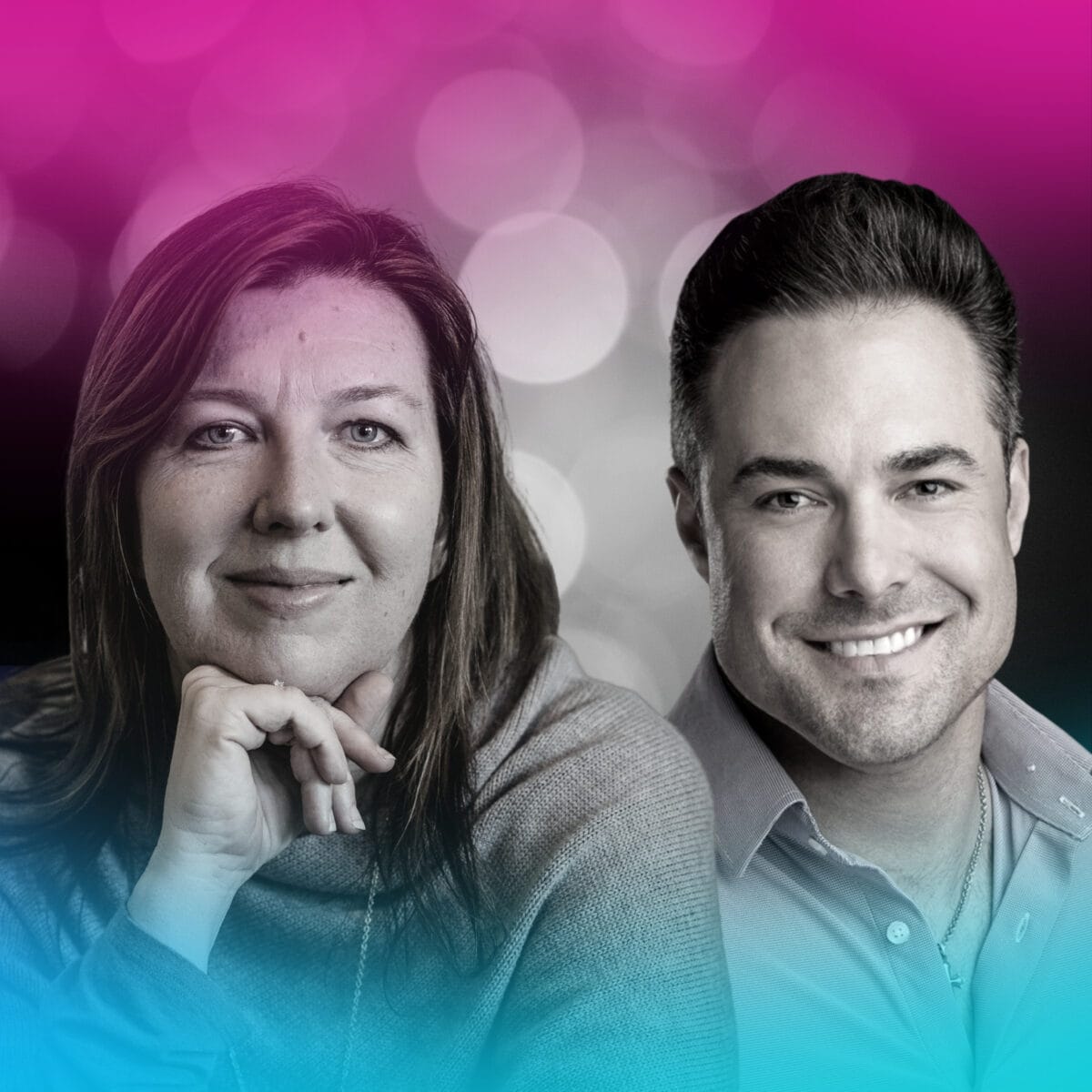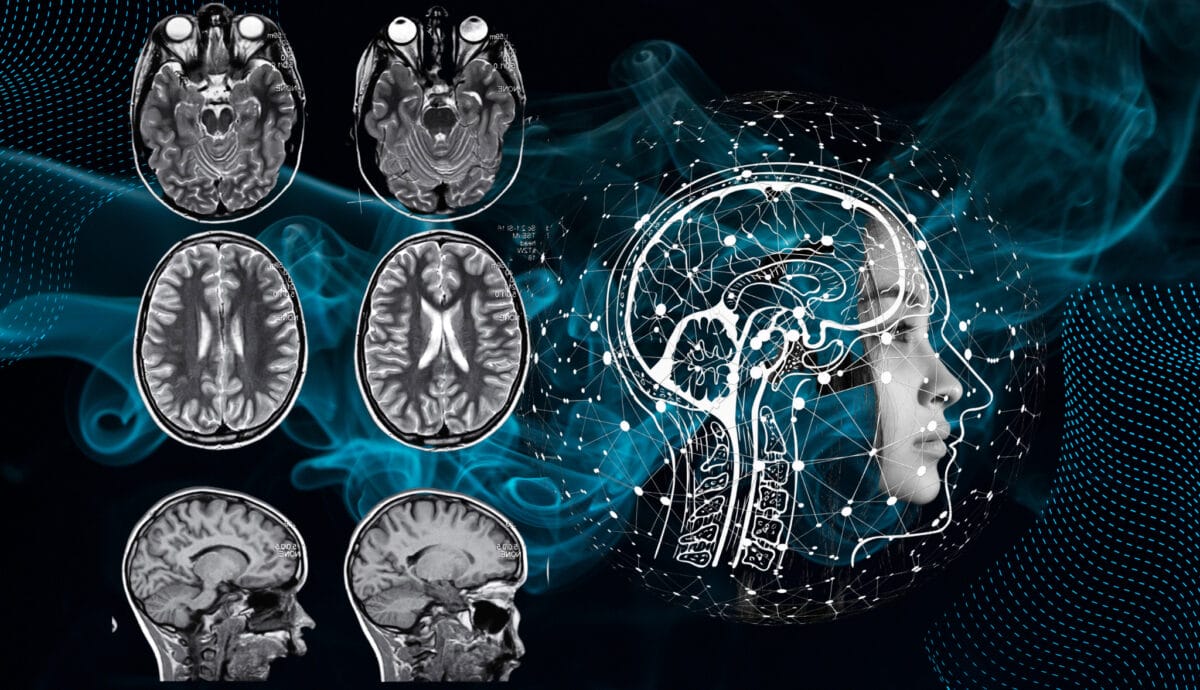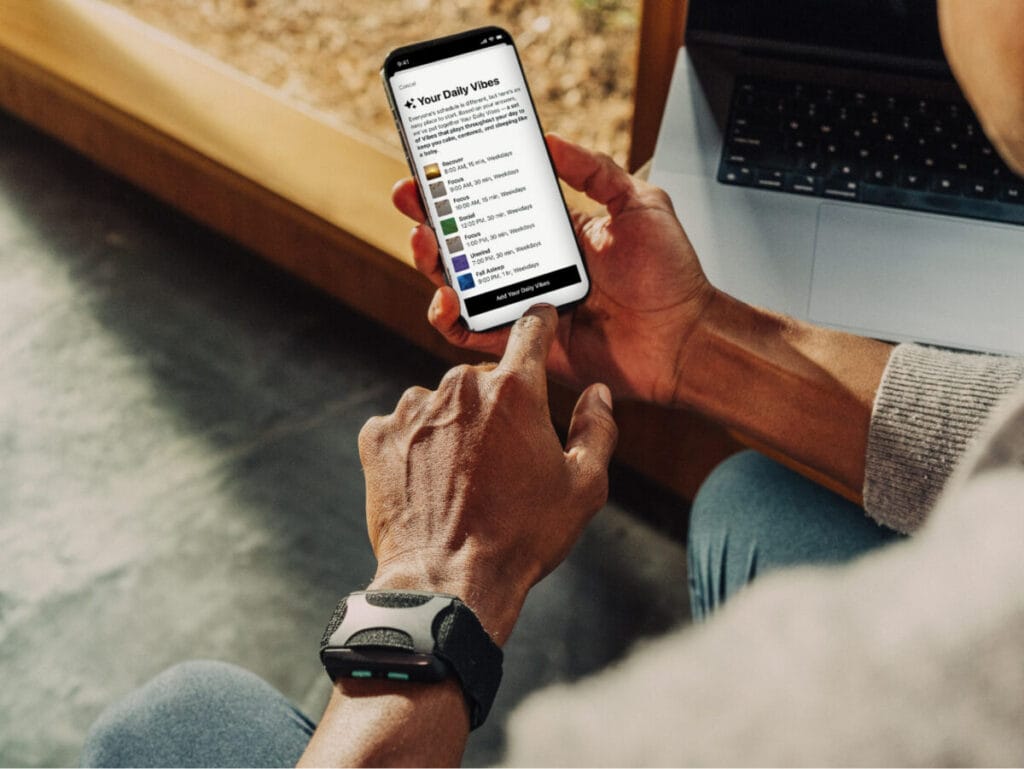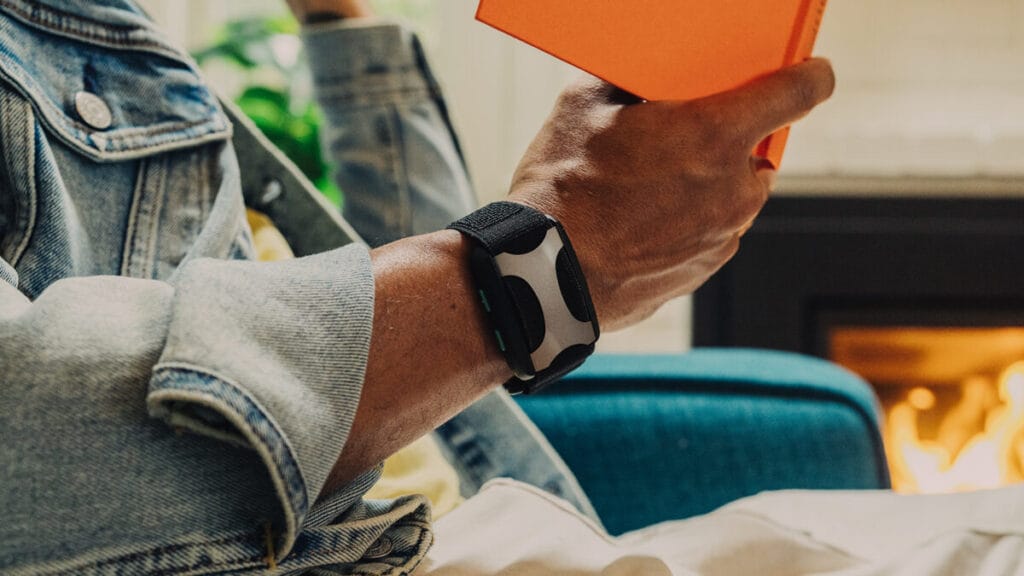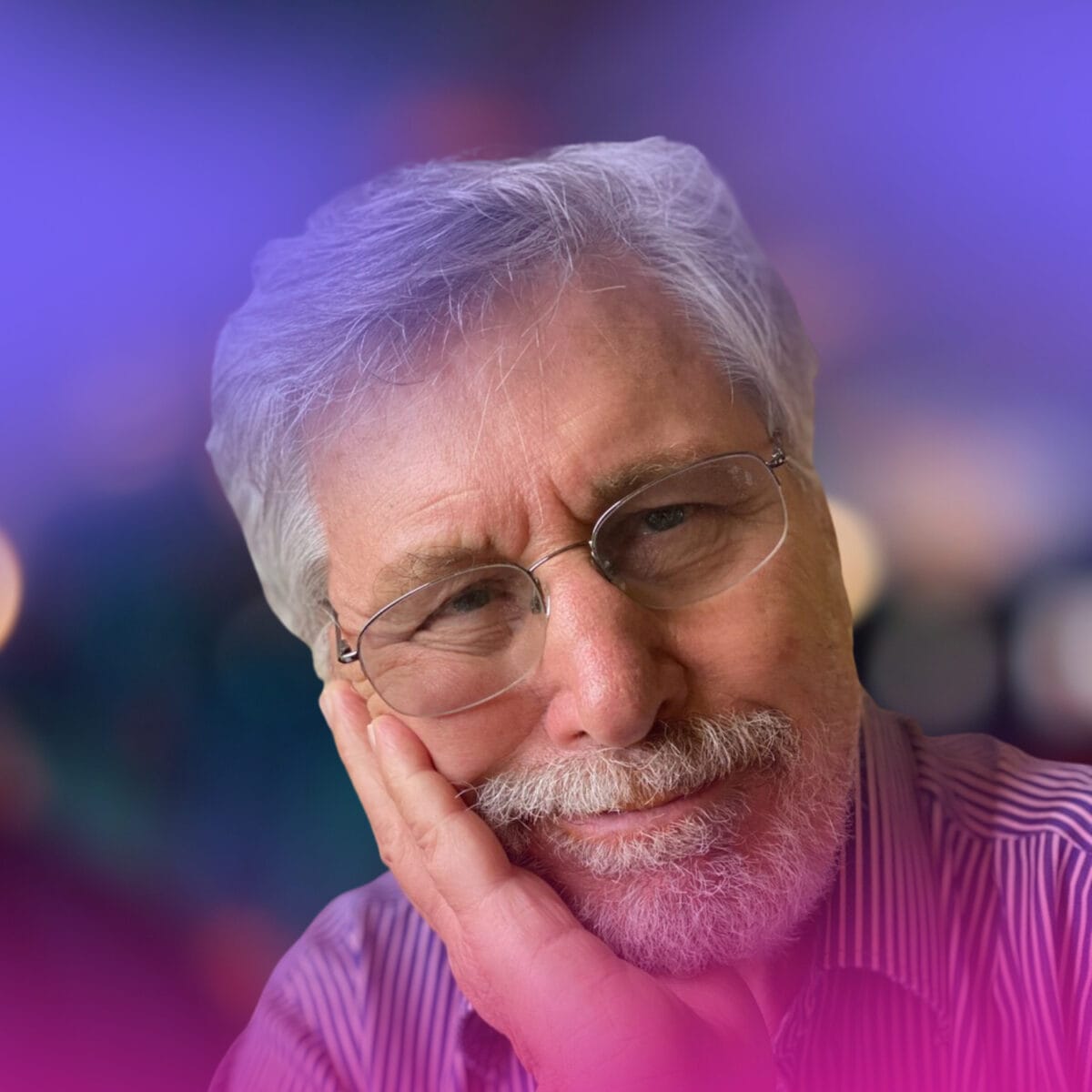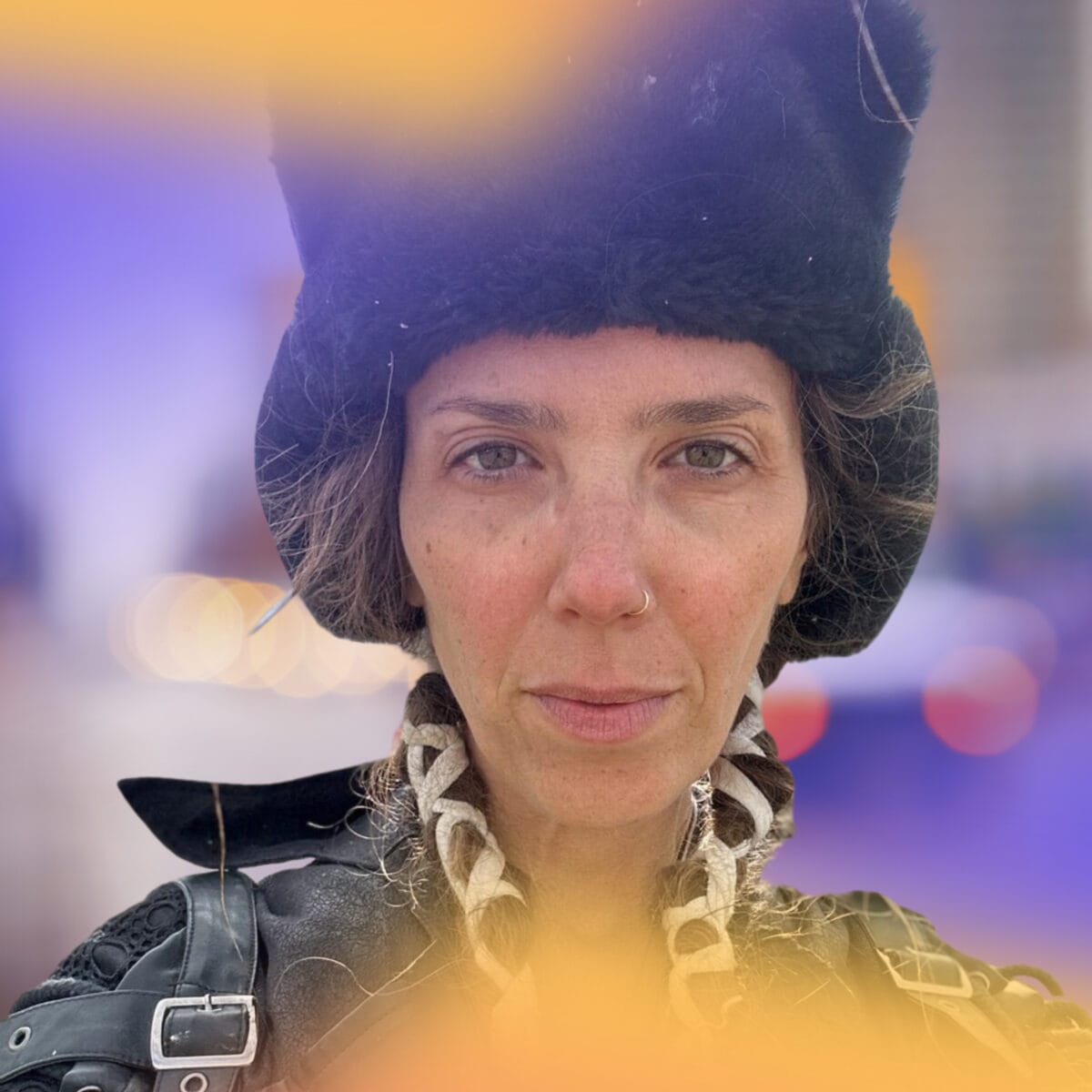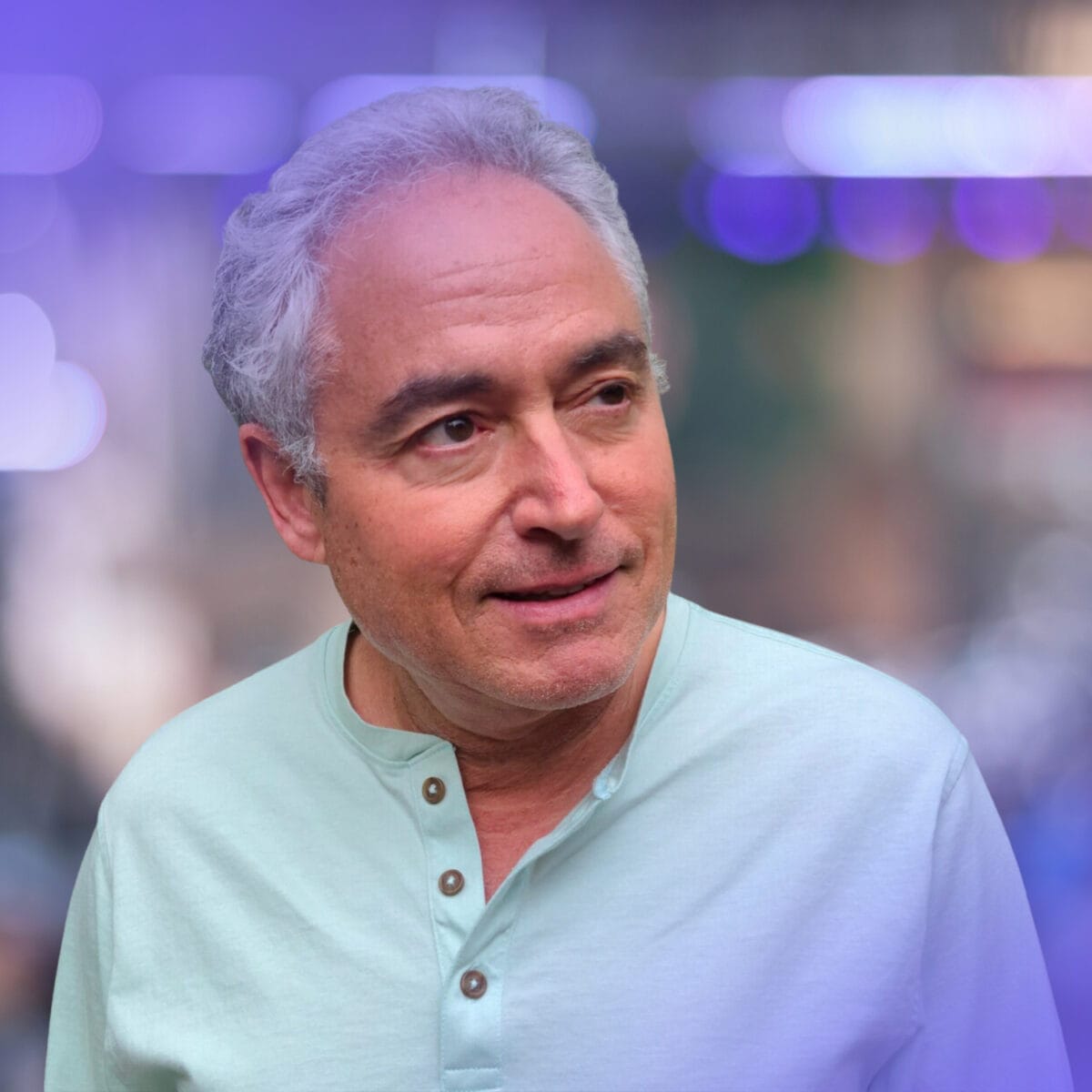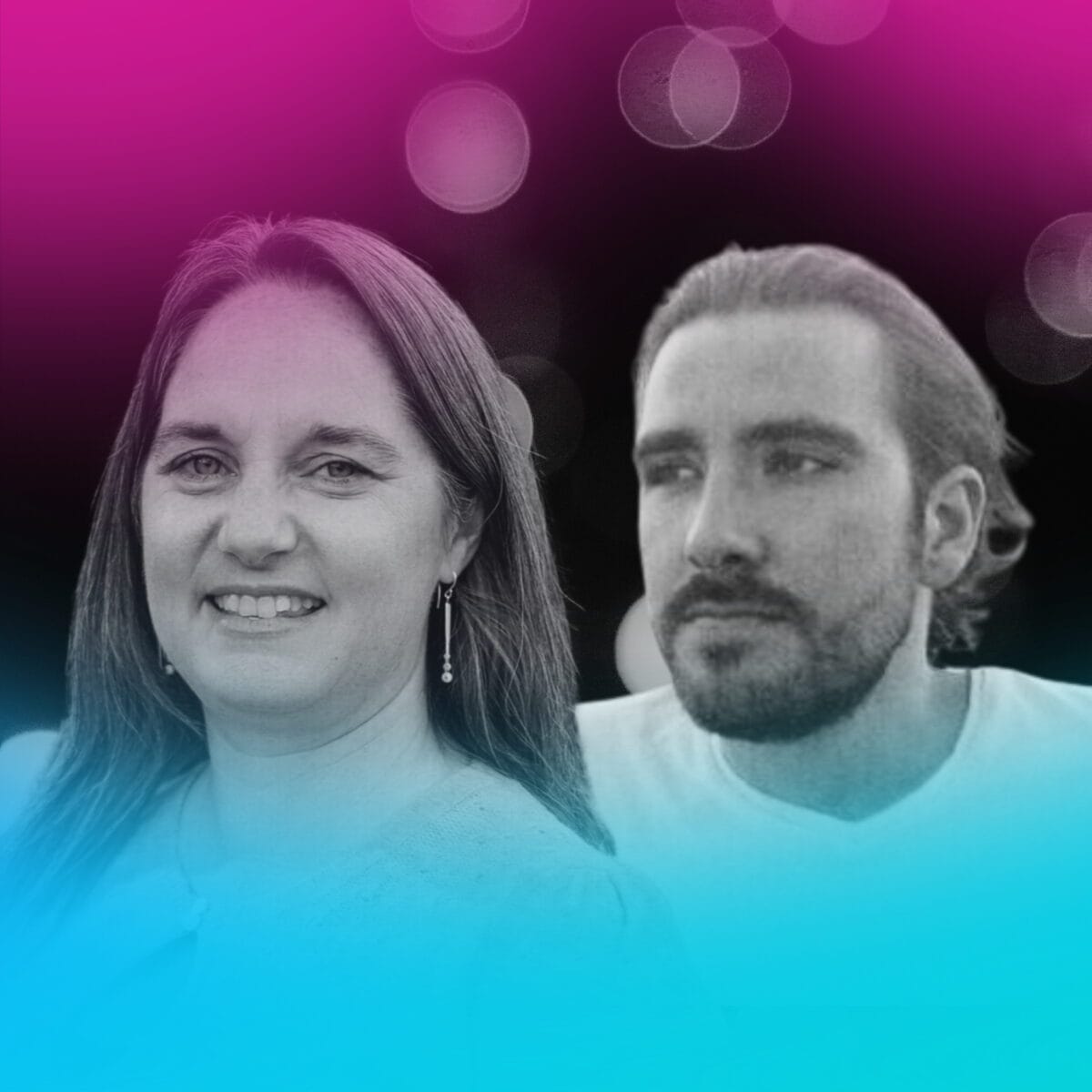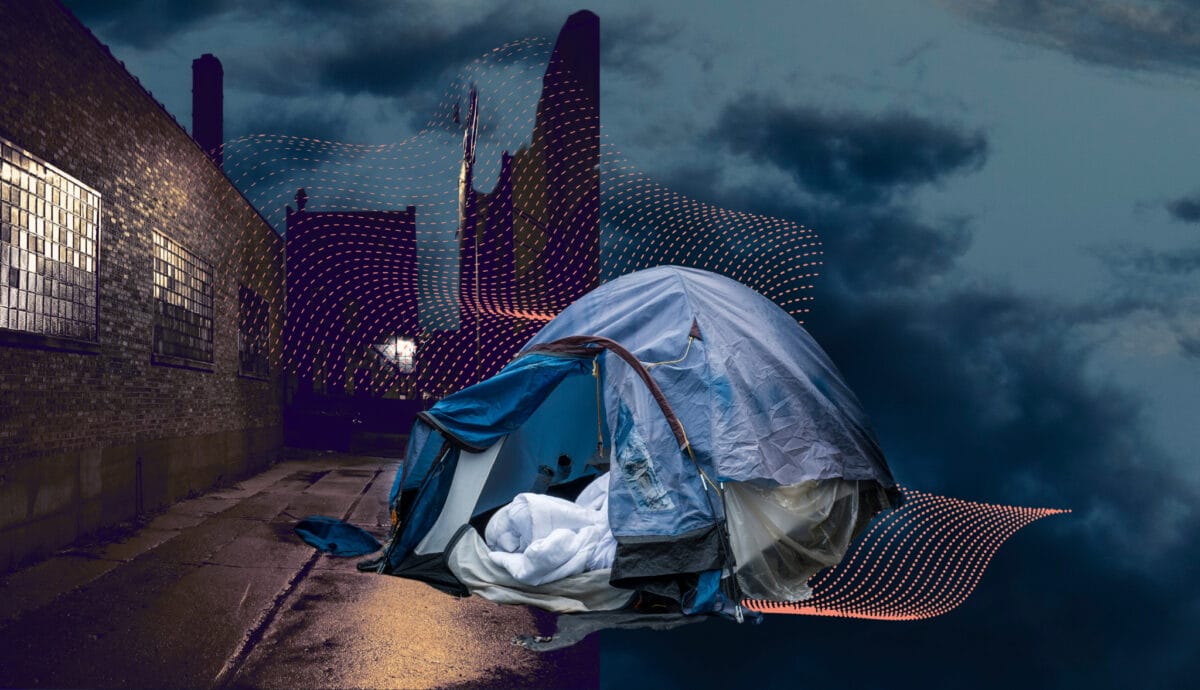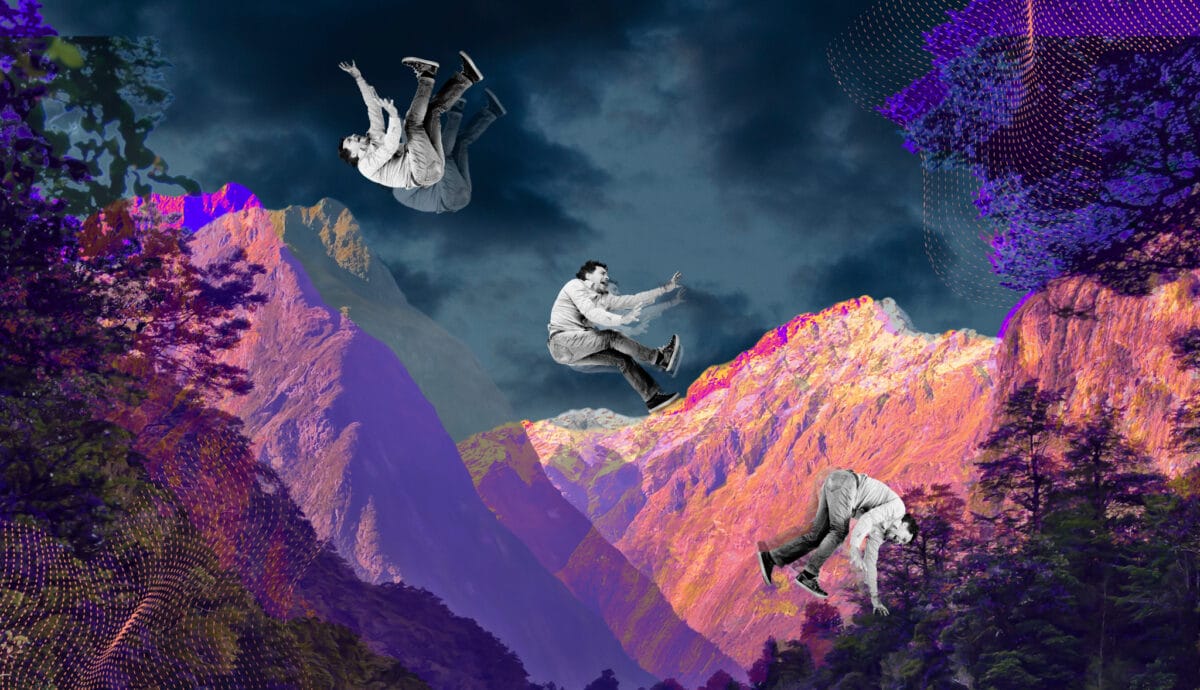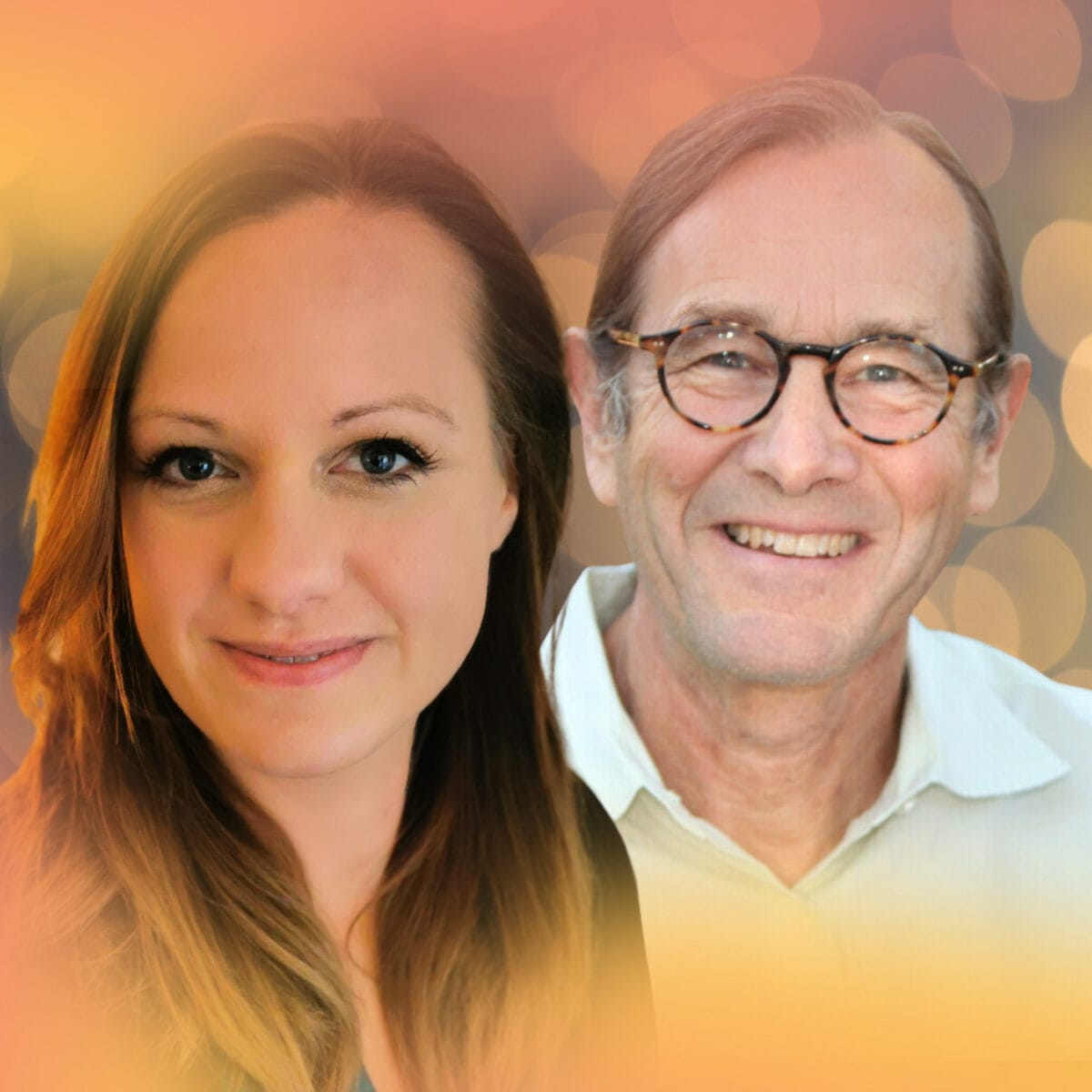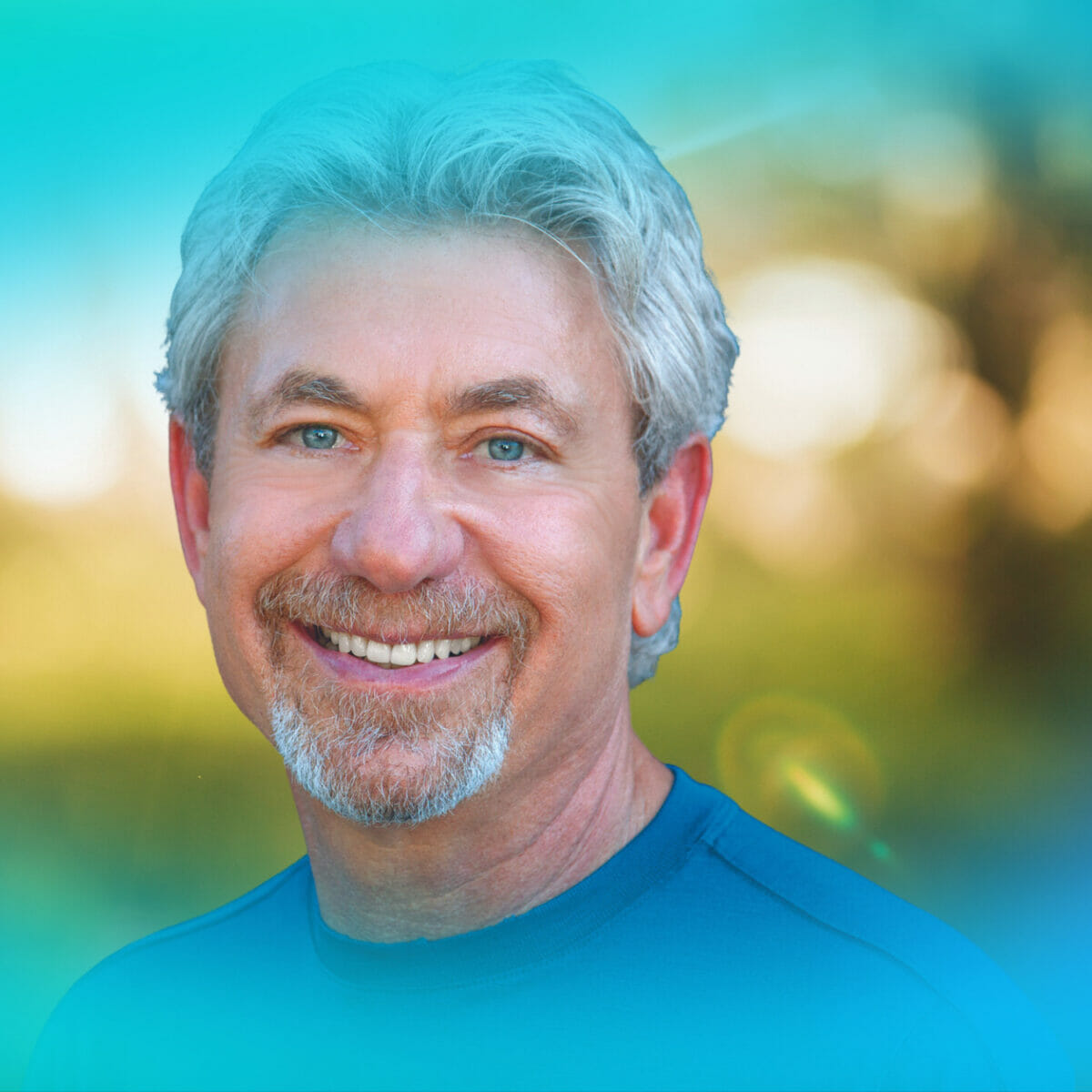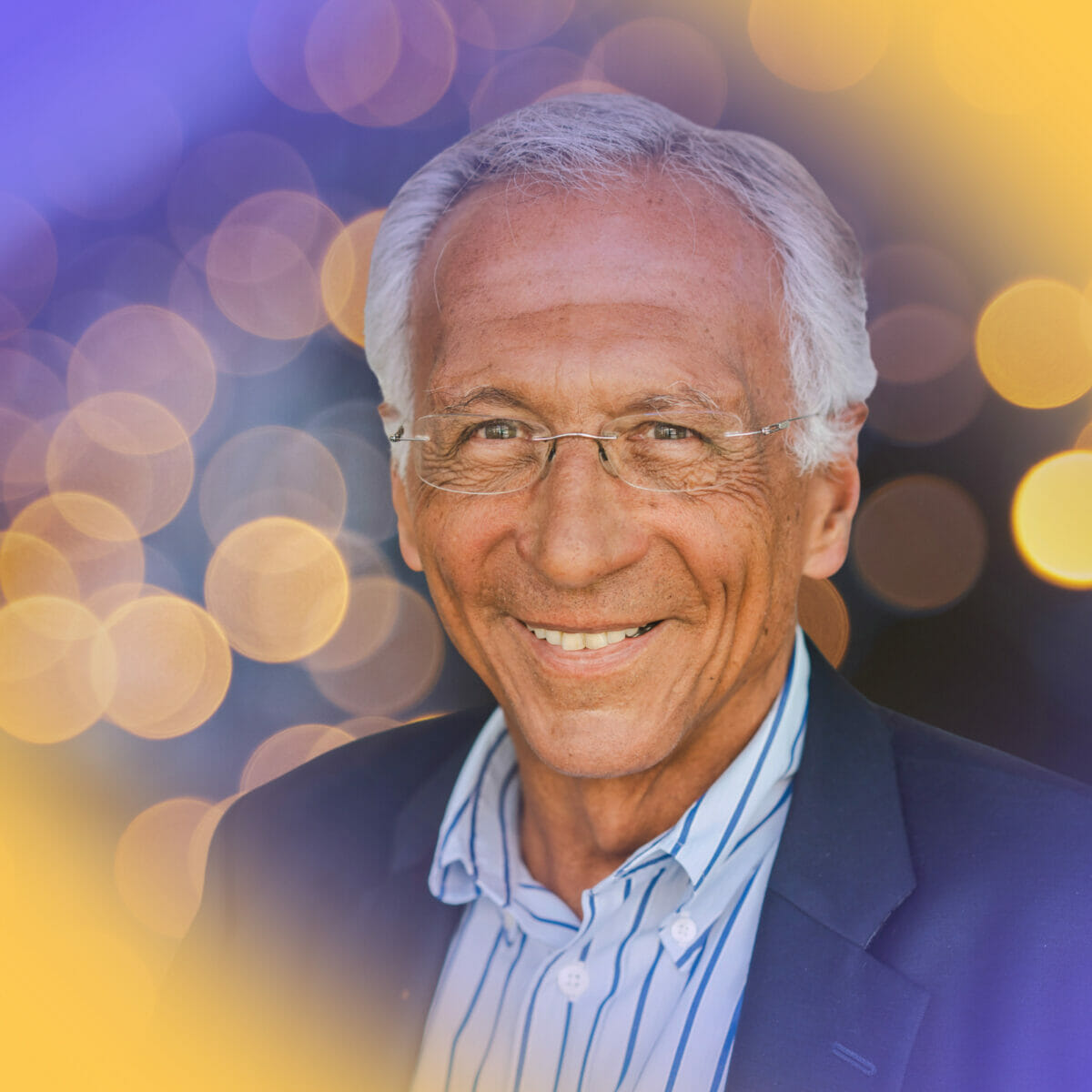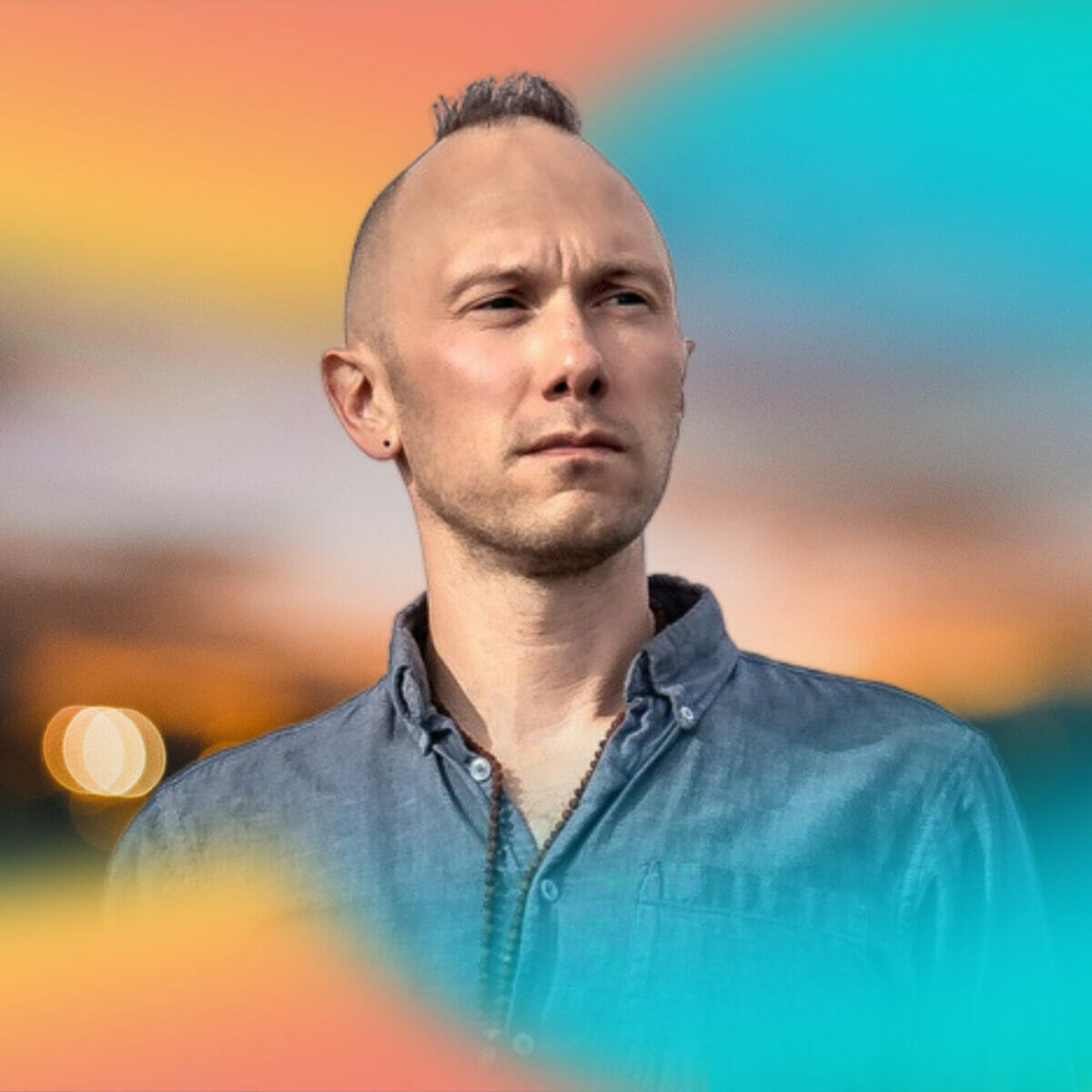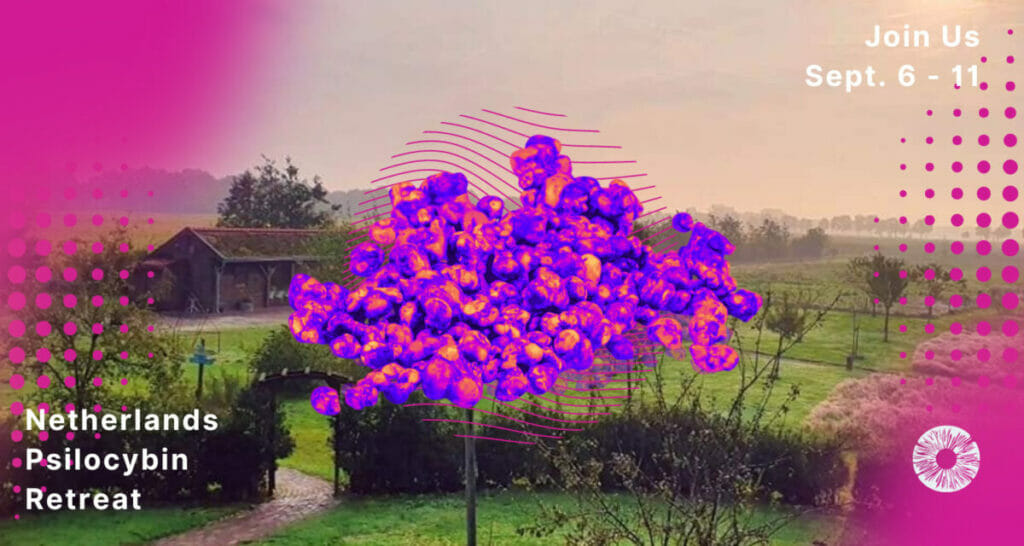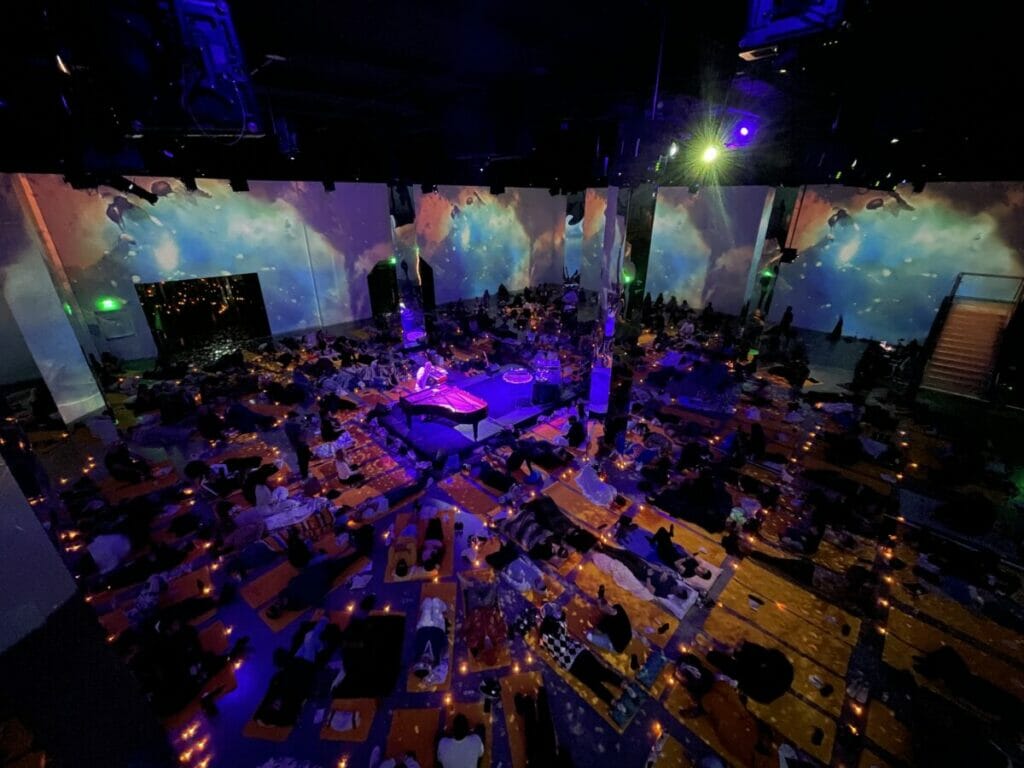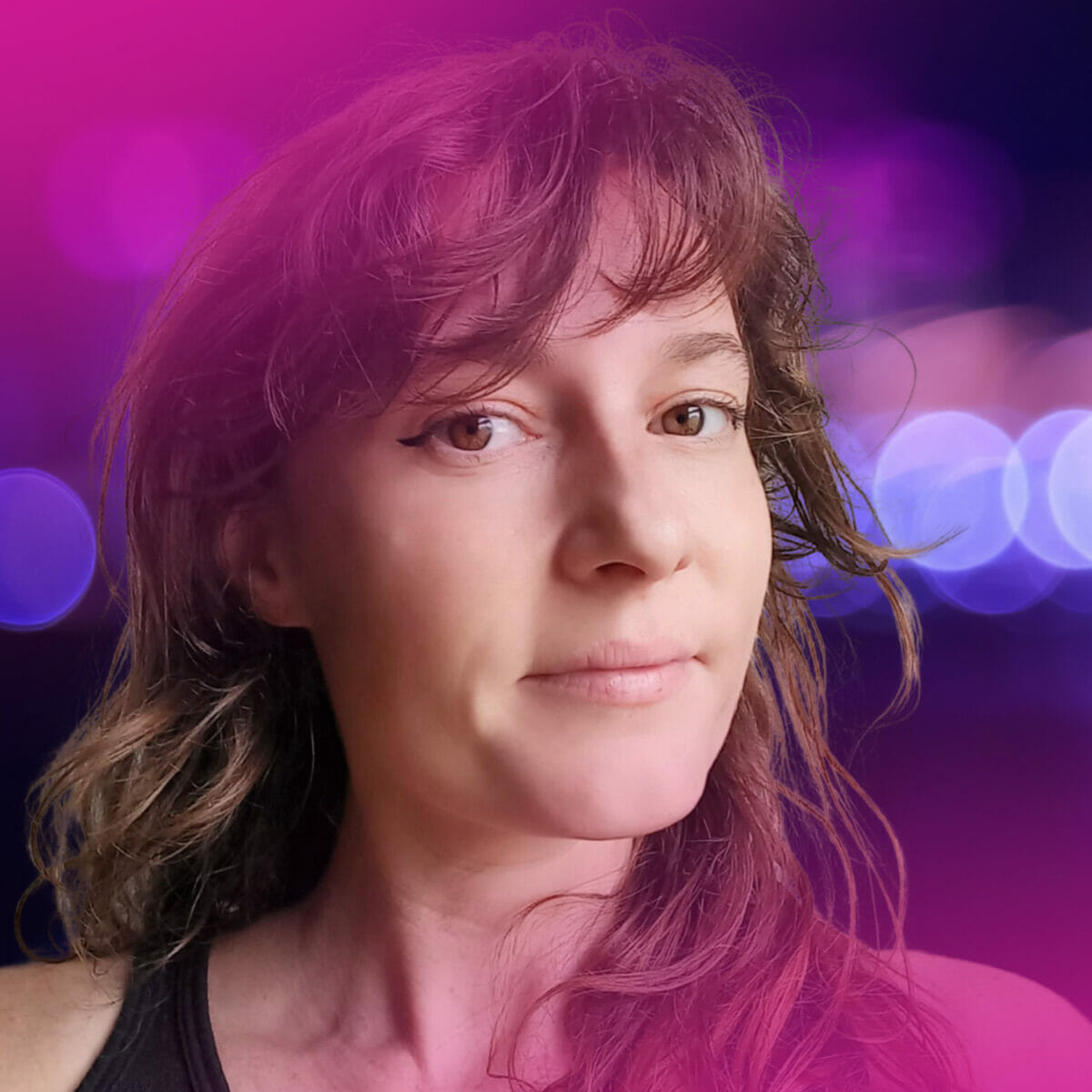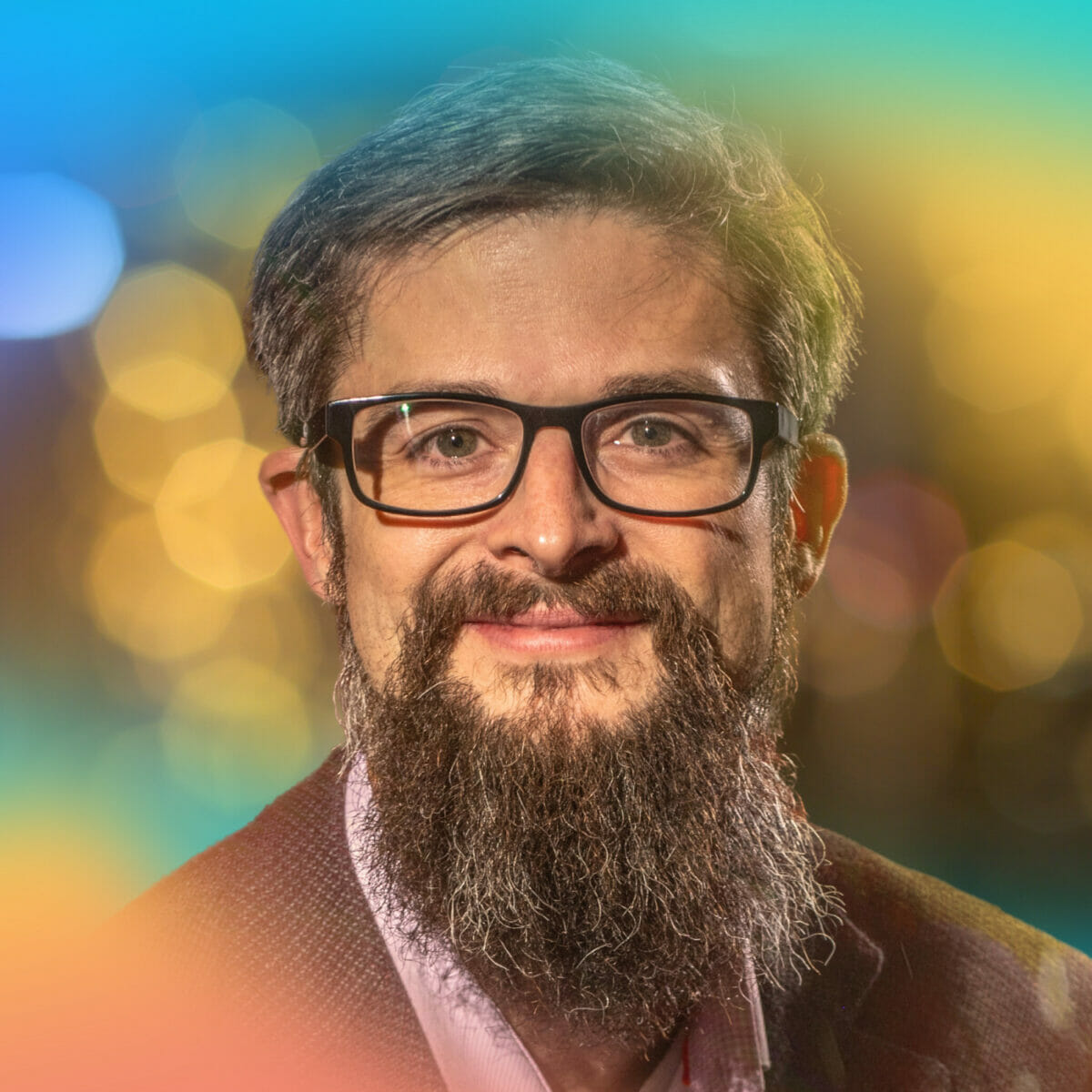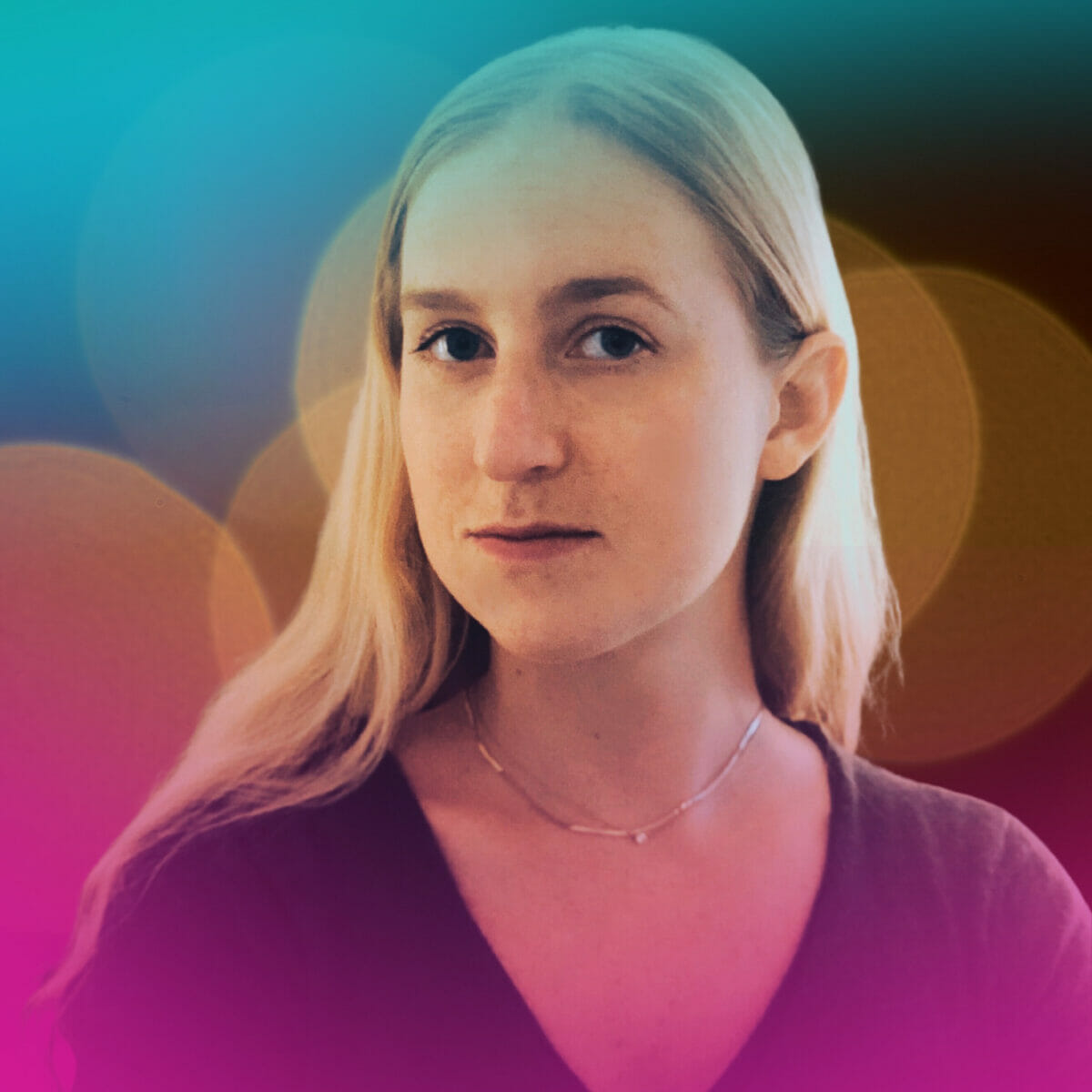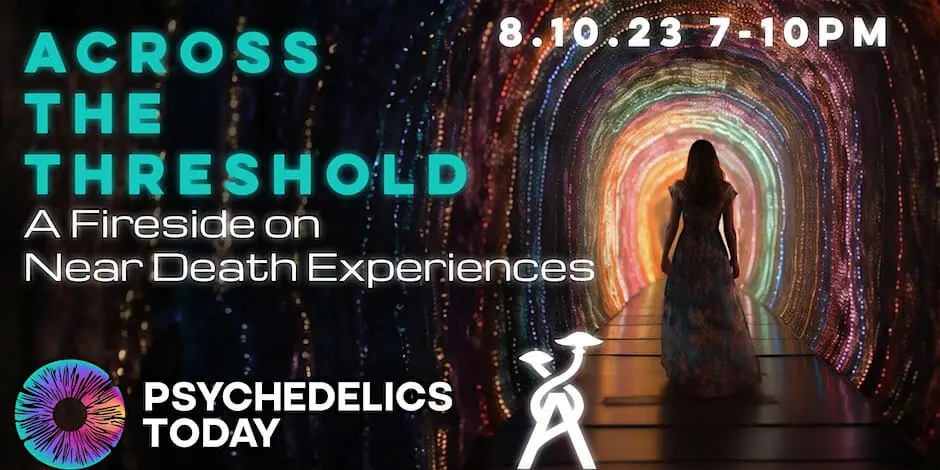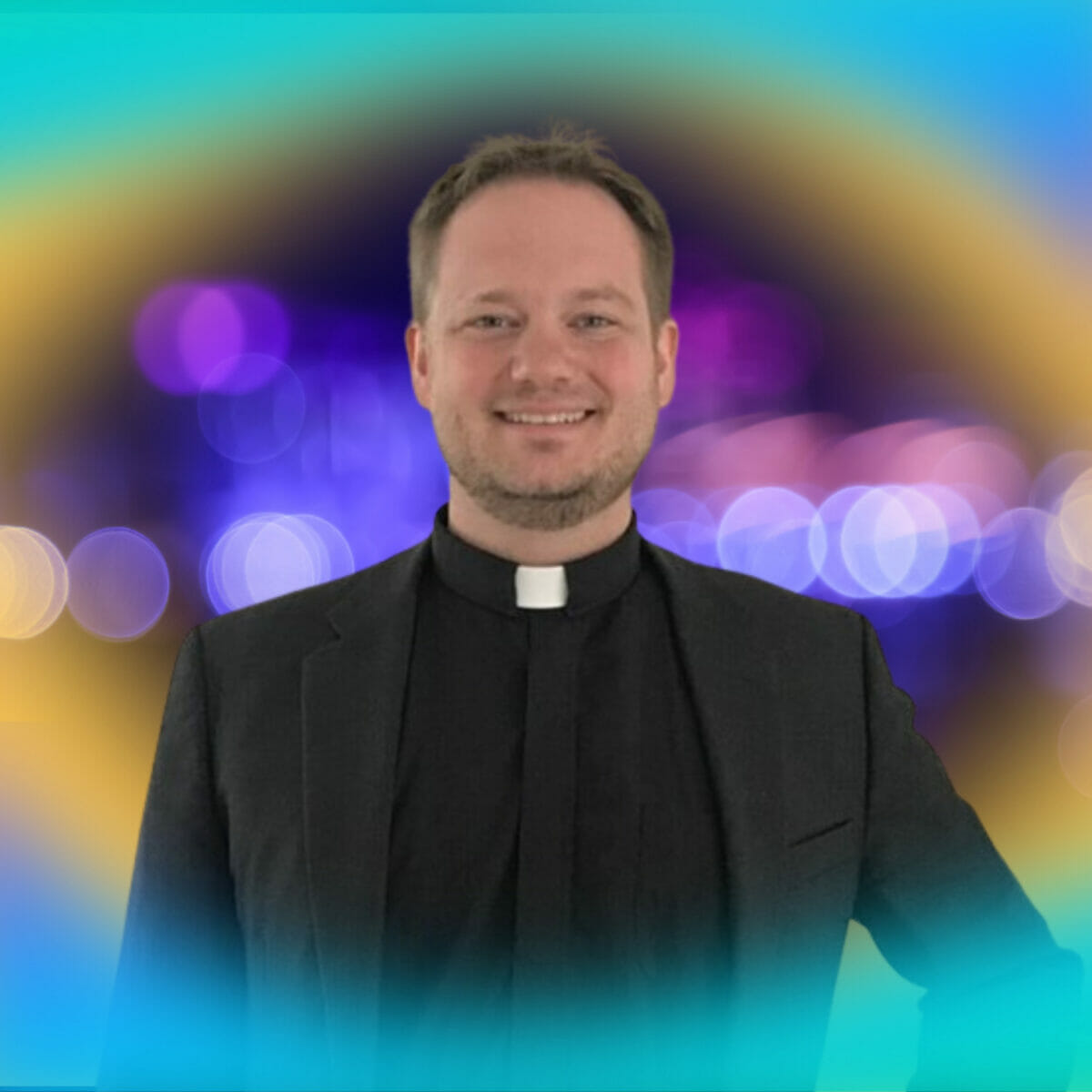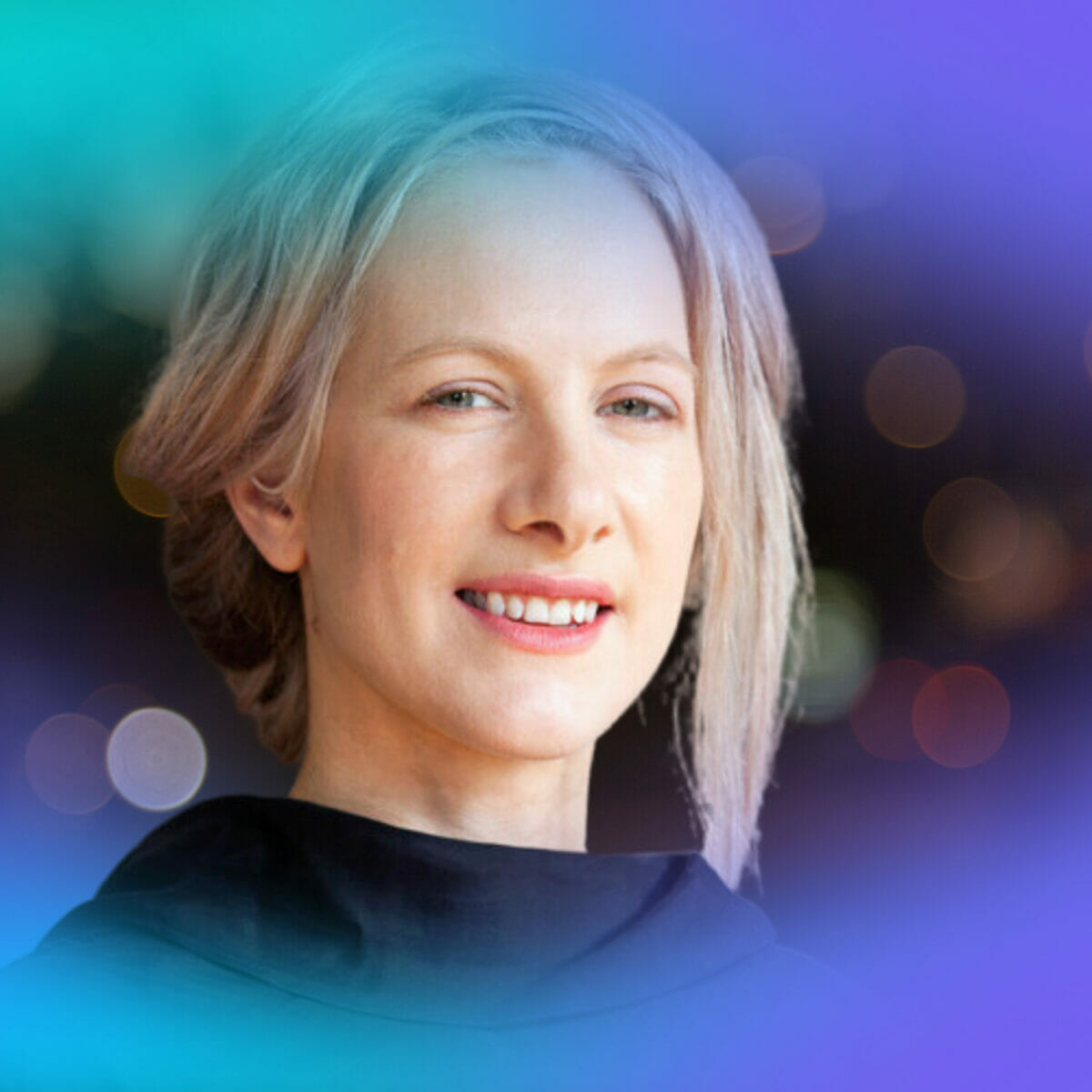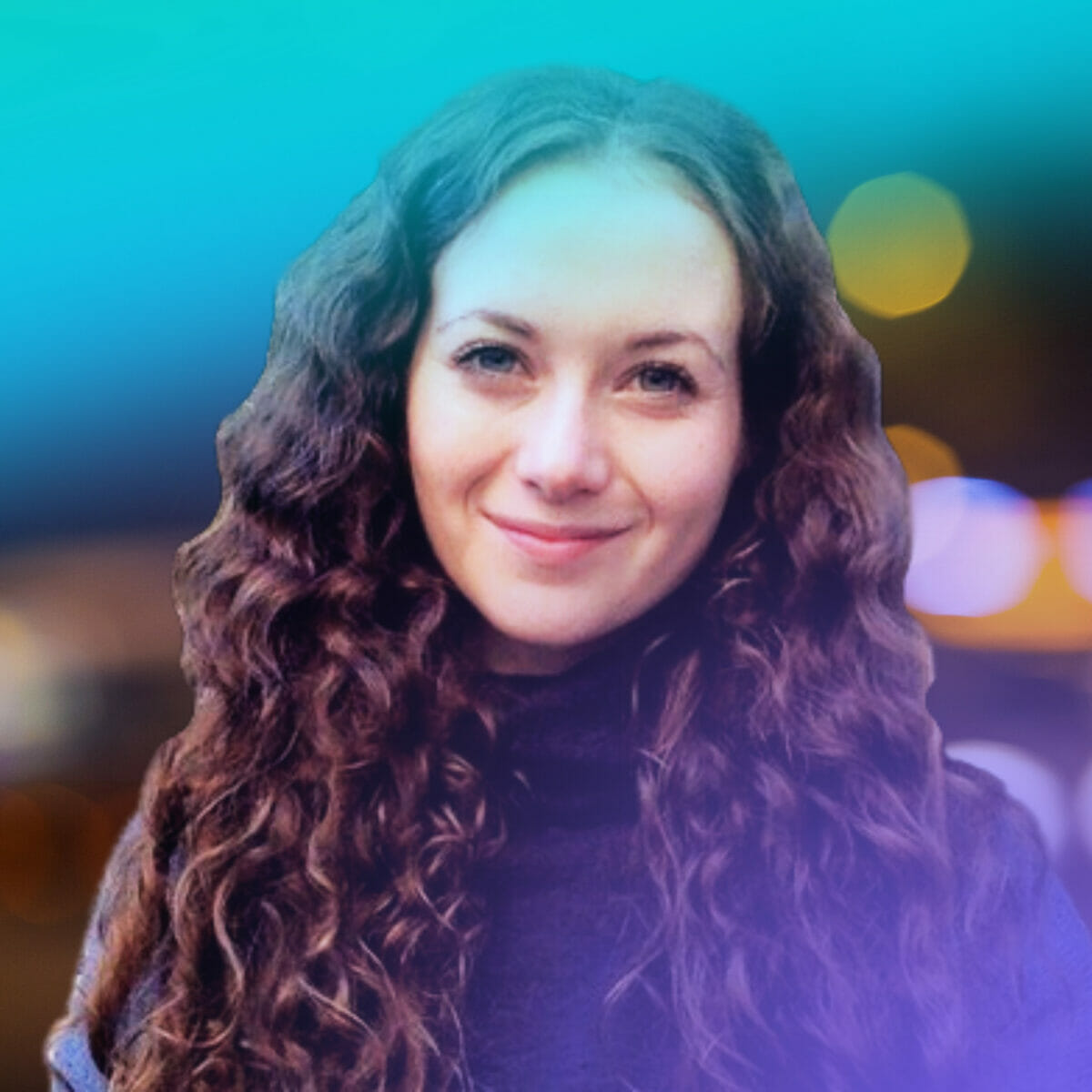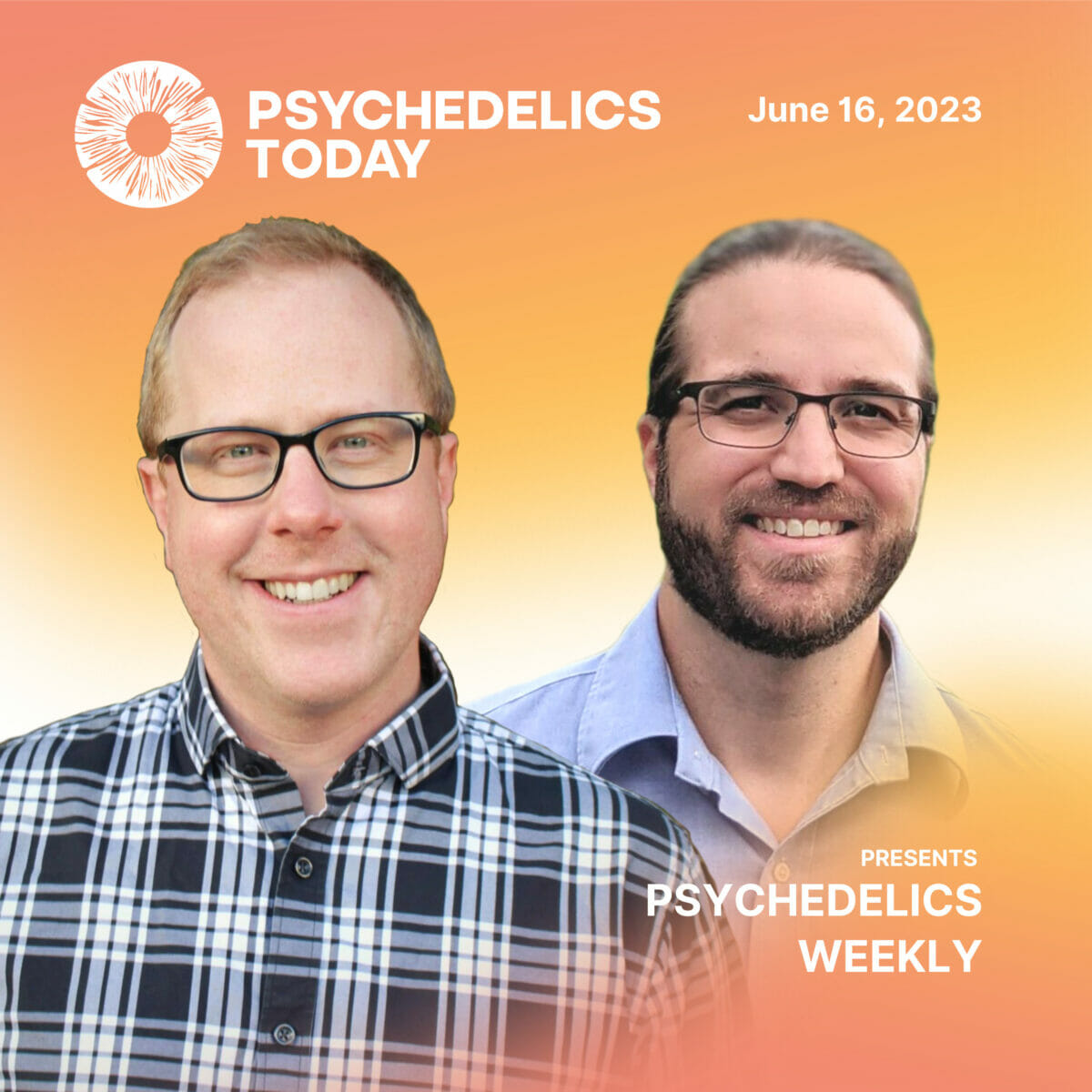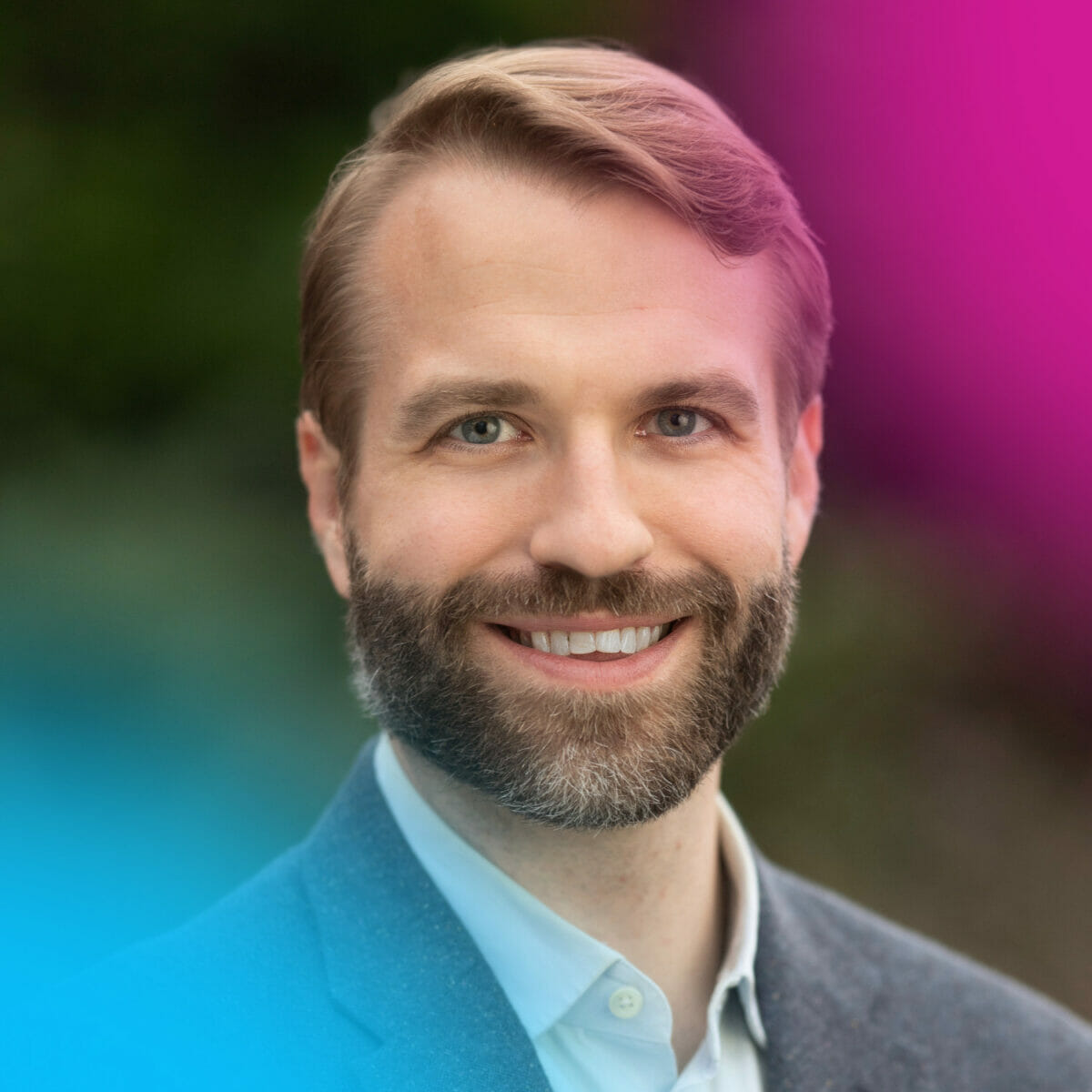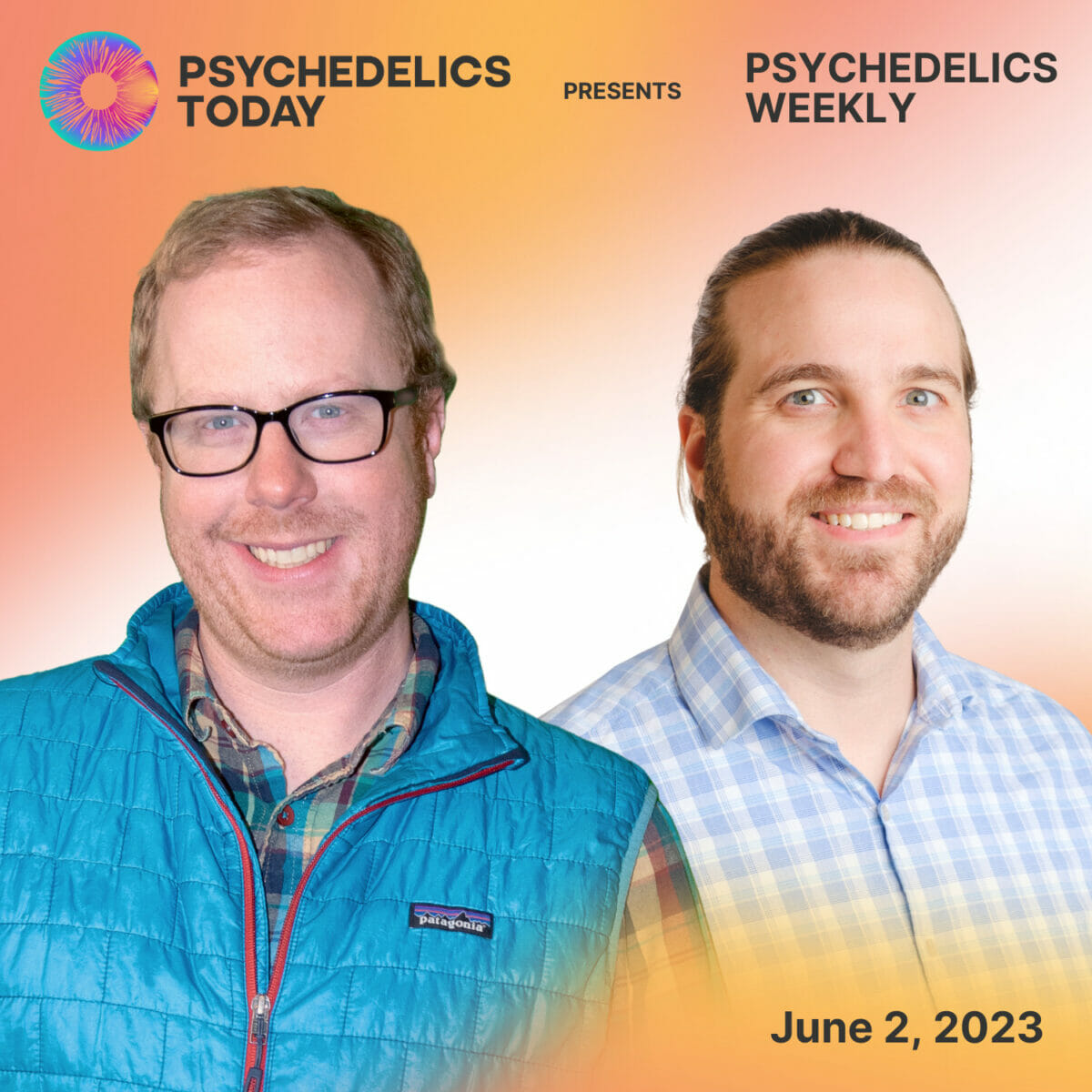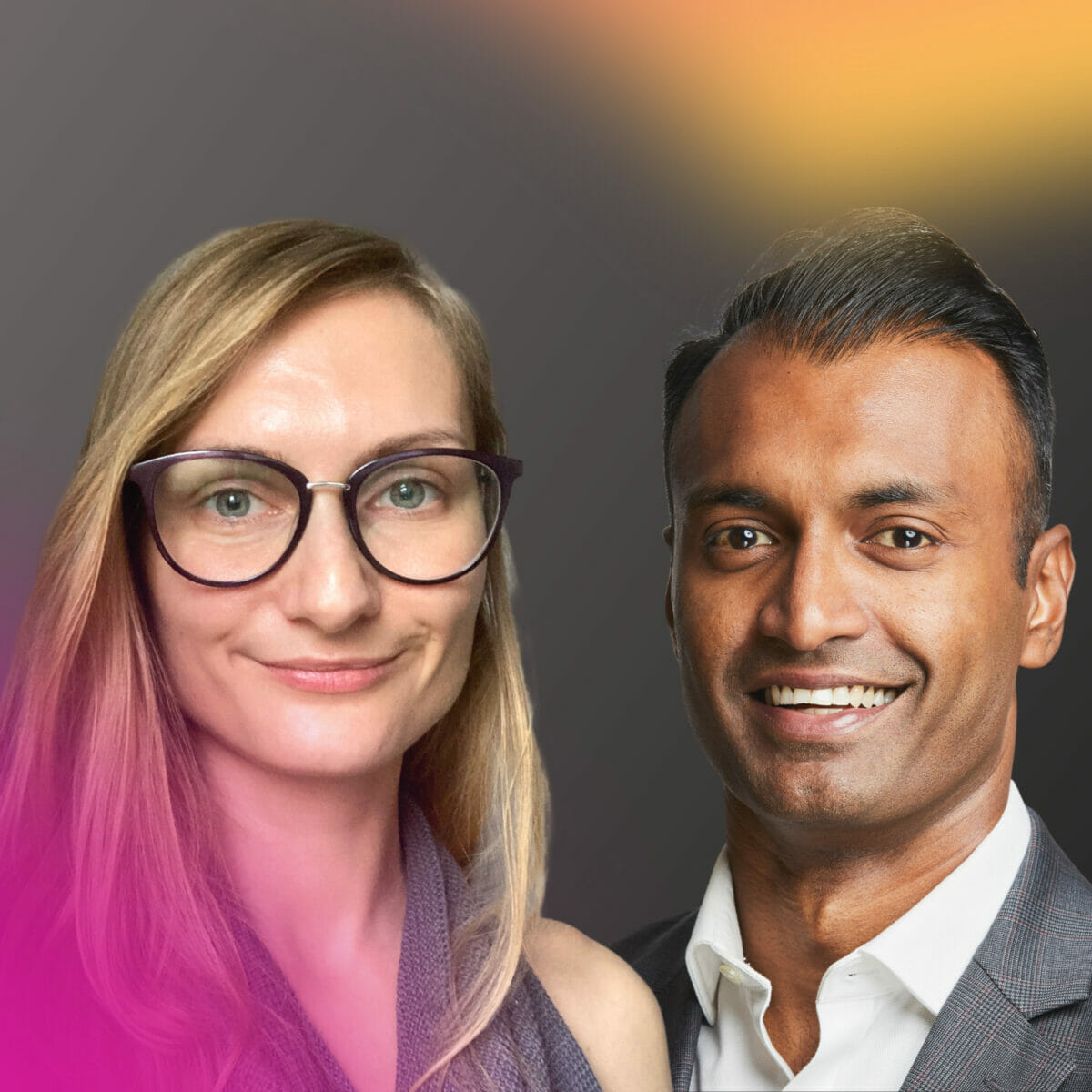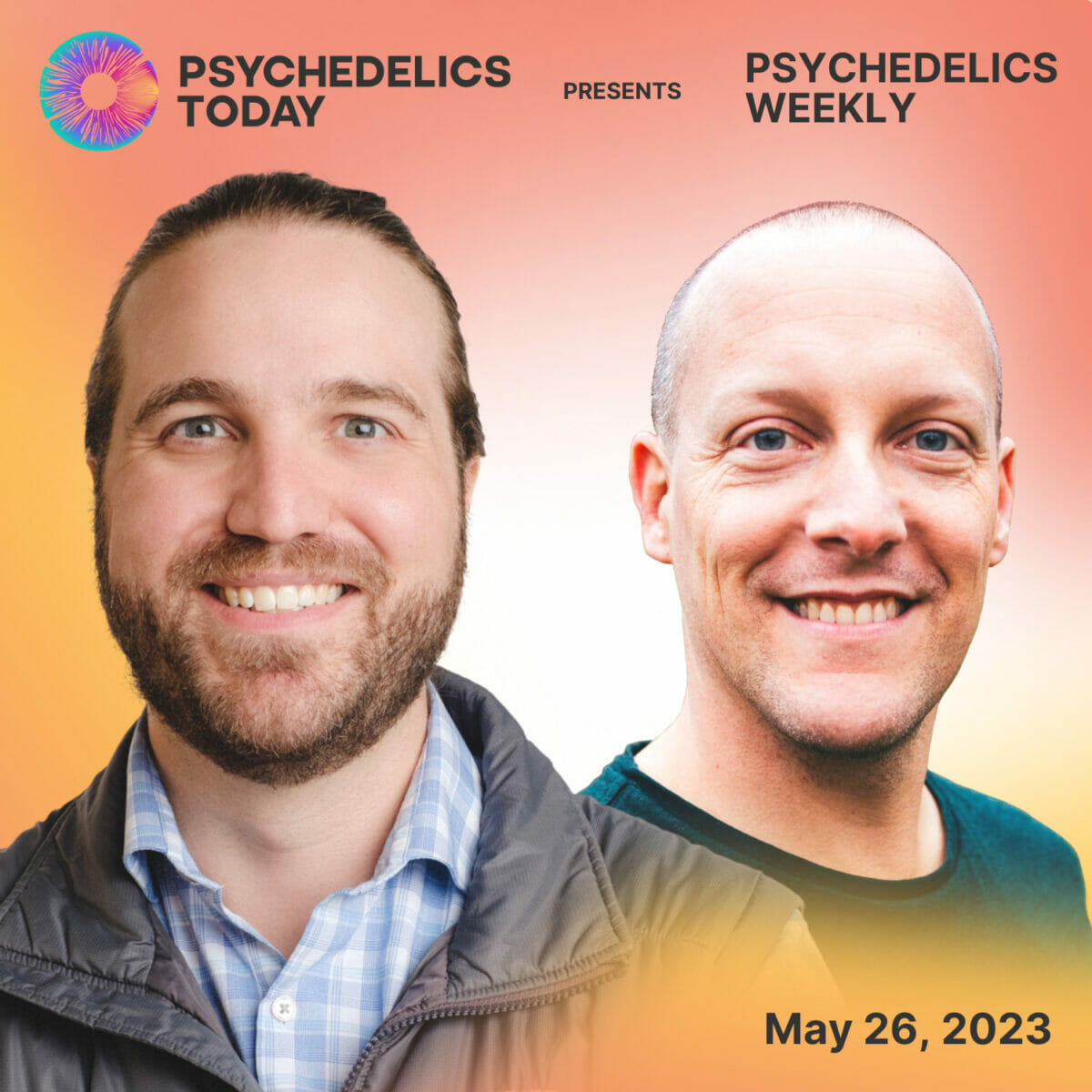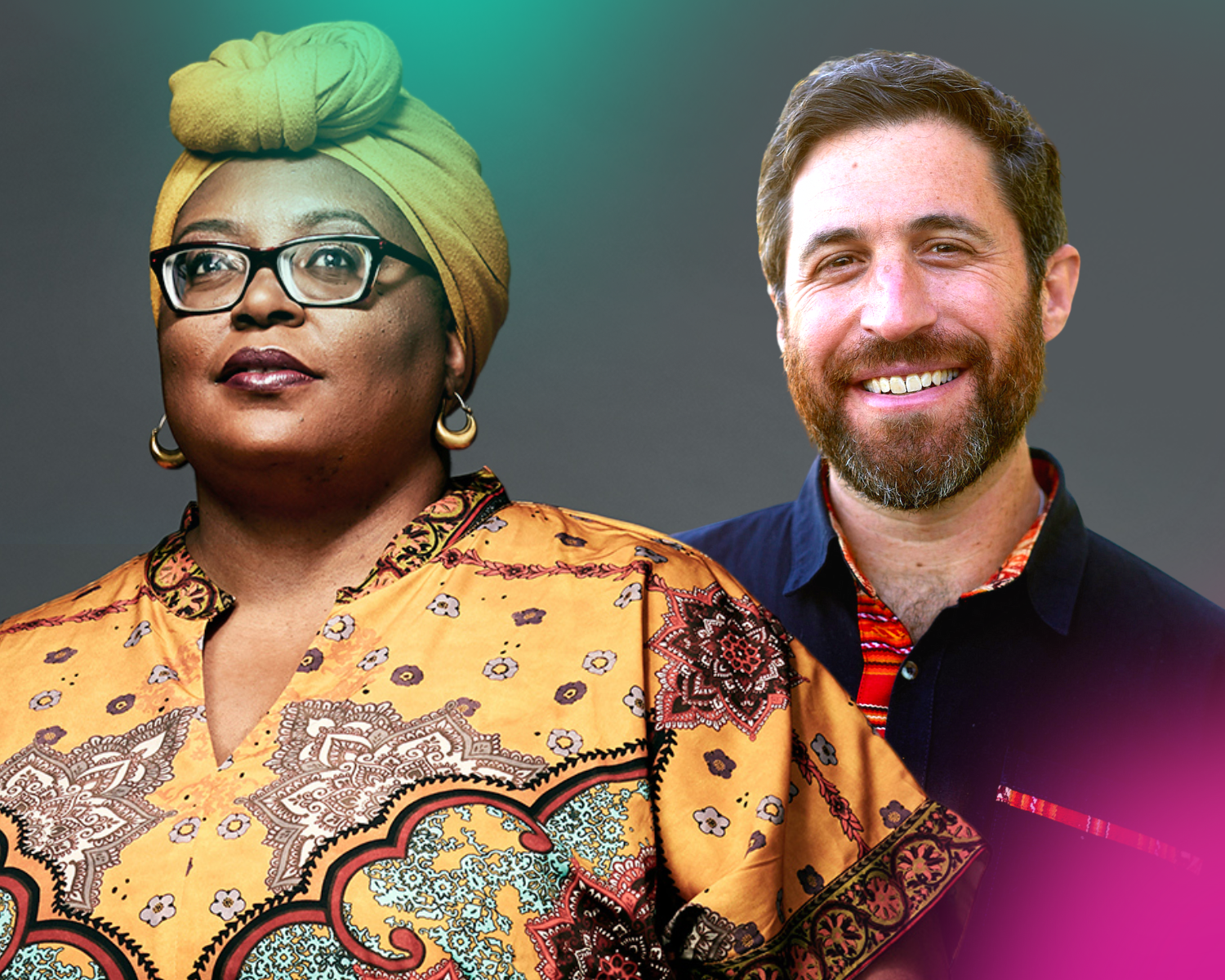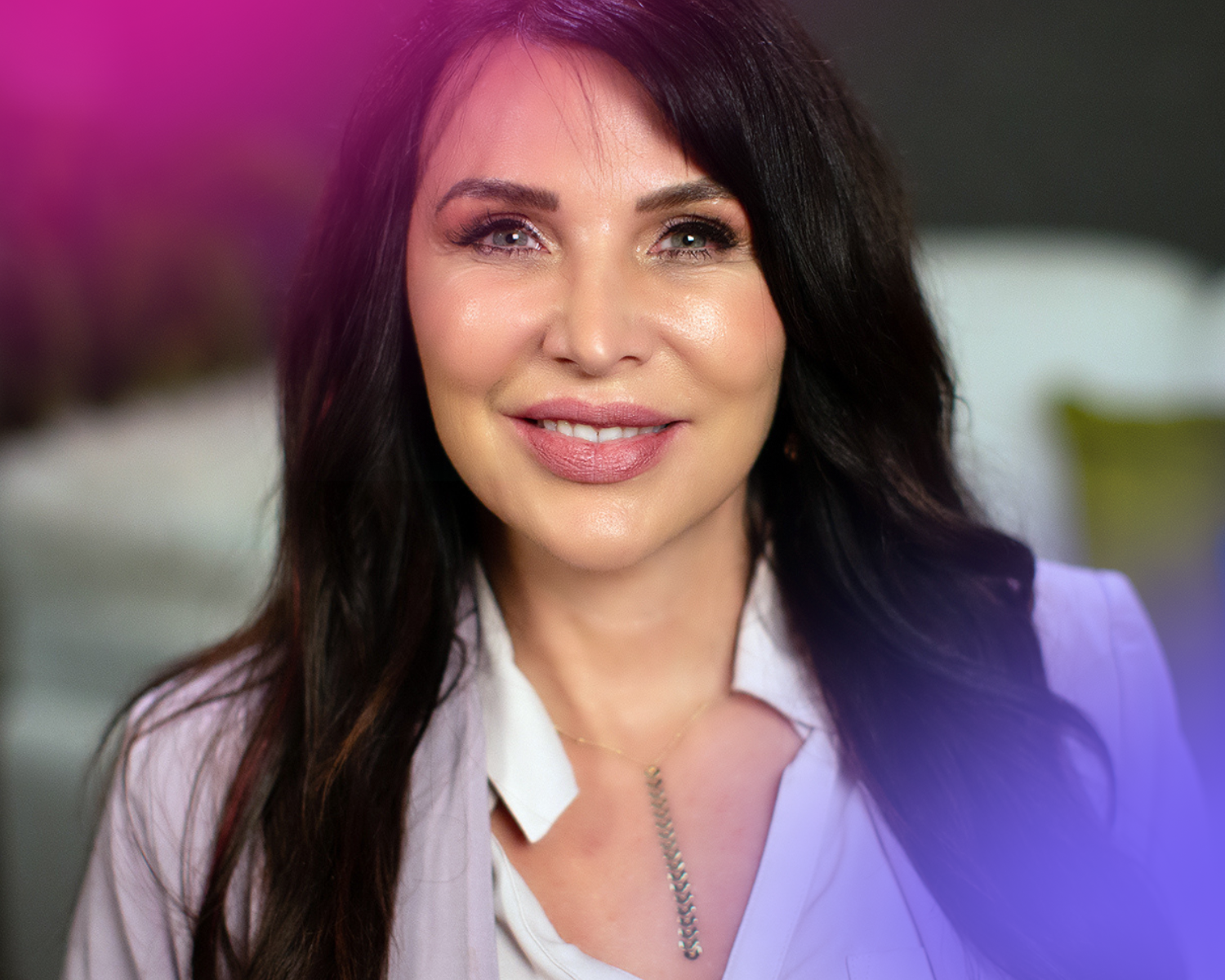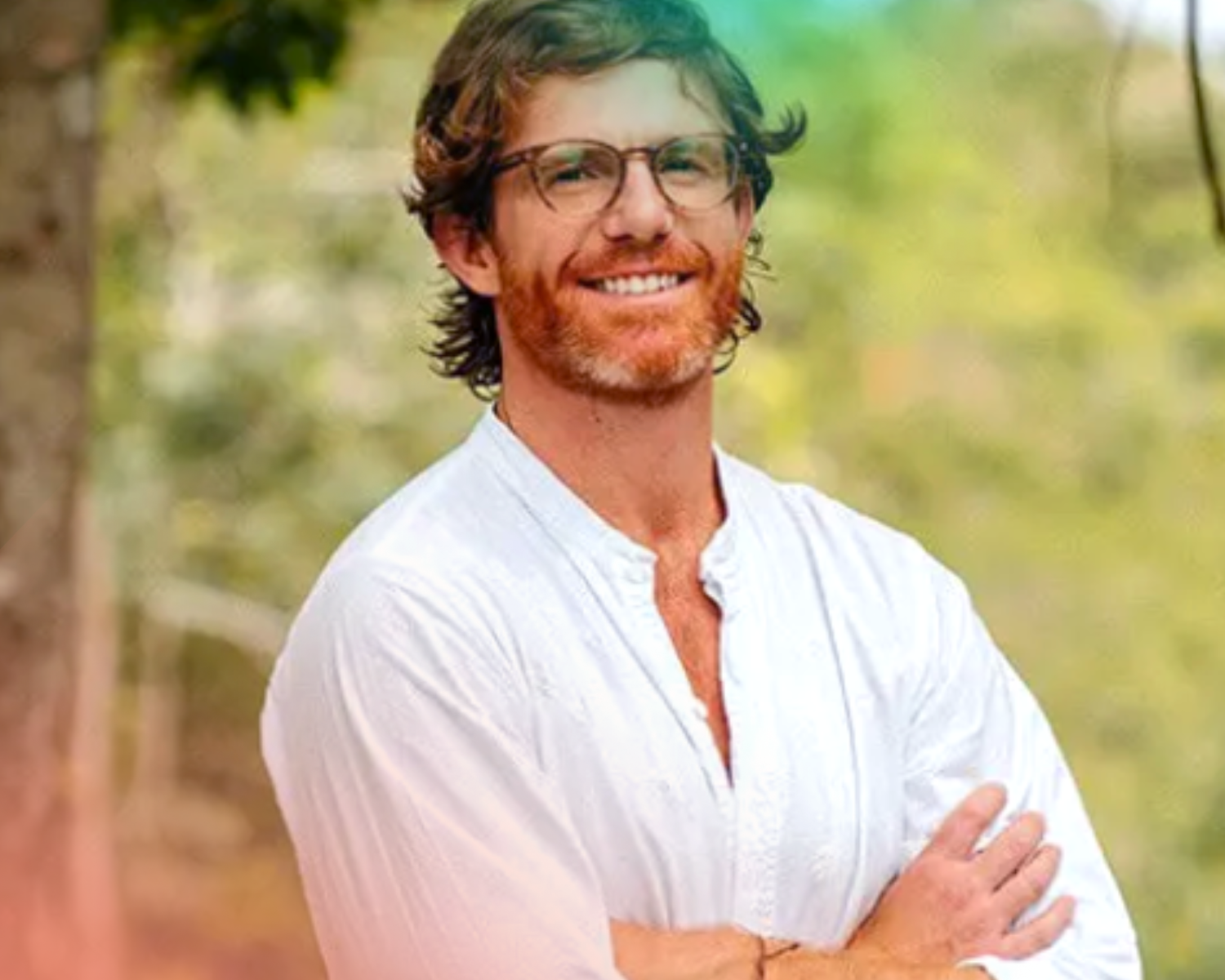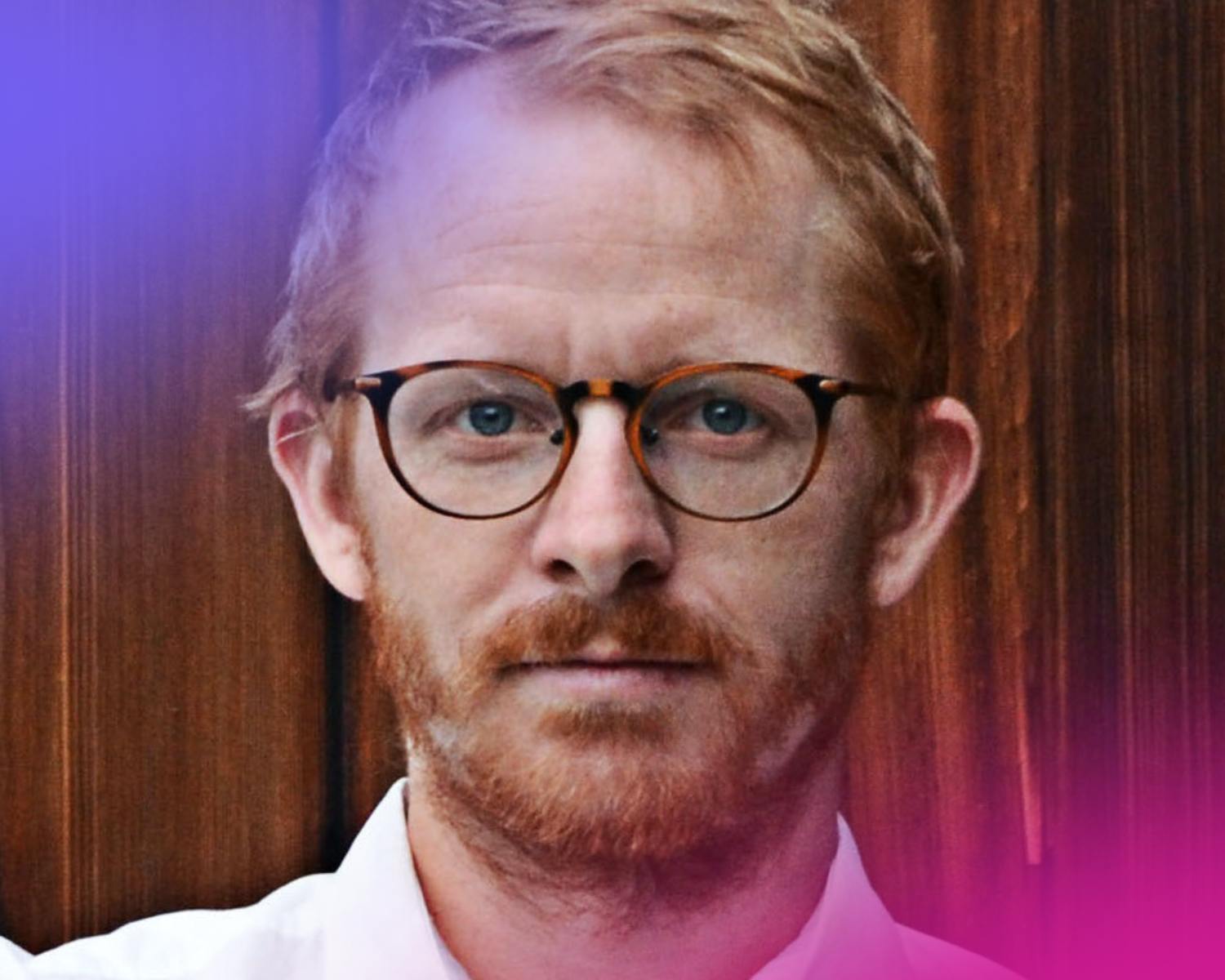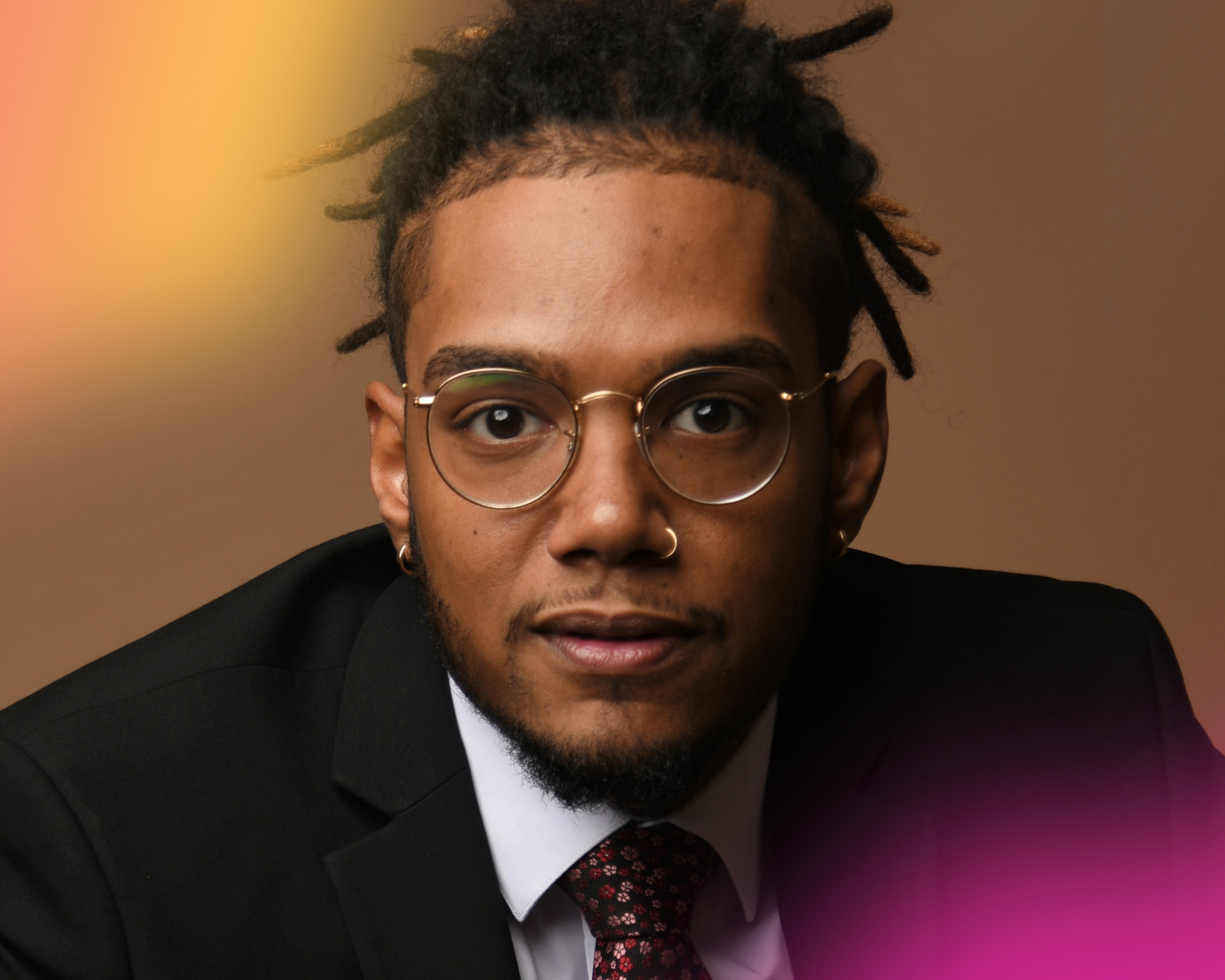In this conversation, she reflects on what years of research have taught her about connectedness as both a healing mechanism and a human need. She explores how integration work can transform fleeting psychedelic breakthroughs into lasting change, and why community is not just a “nice-to-have,” but a core part of psychological and ecological resilience.
Dr. Ros Watts also discusses her “Twelve Trees” framework — a nature-inspired model for personal and collective growth that helps participants translate insight into action through values, embodiment, and mutual care. Her current project, ACER Integration (Accept, Connect, Embody, Restore), is a 13-month, co-created journey that guides people in weaving psychedelic insights into everyday life while deepening relationships with self, others, and the living world.
Together, we explore what sustainable healing really means, how organizations can embody the same principles they teach, and how the psychedelic movement can root itself in care, connection, and community.
Transcript
This transcript was automatically generated and may contain minor errors or inaccuracies.
Kyle Buller: [00:00:00] Dr. Roslyn Watts, thank you for joining us here at psychedelics today. Really excited to have you back on the show. I think it’s been a while.
Ros Watts: It has been a while. It’s lovely to be back.
Kyle Buller: Yeah. For those that don’t know you, could you do a quick little introduction on who you are and, and some of the work that you do?
Ros Watts: Yes. Um, so I am a clinical psychologist and I started working in the psychedelic field about 10 years ago now, and that was. Working in psilocybin for depression trials was really lucky to kind of step into that stream. Just was in it when it was a little, little mini river. Um, and [00:01:00] yeah, had some incredible experiences, um, supporting people through psilocybin for depression journeys.
And then went on to be the clinical lead of a big randomized control trial and learned so much about psychedelics and how they support people and how they help people become more connected. So most of my research was about connectedness to self, others, and world and how psychedelics can catalyze that.
Um, but then I kind of realized that that connectedness tends to fade if it’s not nurtured afterwards. And so then all of my focus for the last five years has been around creating a community, um, kind of founding a community that’s now kind of co-created community of people who are. Walking the path together to really maintain their connectedness to themselves and others and the world around them in a long-term way.
So it’s a psychedelic integration community.
Kyle Buller: Wonderful. And I’m sure we’ll get more into the program, like towards the end. Um, I would love to hear more about that, but you bring up community. We, we were kind of going back and [00:02:00] forth on some topics, um, to, to chat about today. And so yeah, maybe I would love to dig into that.
You know, you’re talking about this connectedness and community and you know, what we’re dealing with in the world right now. Just, I mean, it feels like since the pandemic, right? It feels like since 2020 things have really not been the same in a lot of different ways, and now we’re dealing with all the.
Kind of geopolitical stuff that’s going on in the world and a lot of isolation, loneliness that’s going on, not being connected, even though we’re so hyperconnected. You know, we were kind of talking about all these, the platforms that were on social media, the internet, but also this like lack of connection that a lot of people feel.
Um, and so, yeah, I would love to maybe just hear some thoughts, like what’s been going on in your mind, thinking about community and connection.
Ros Watts: Mm, it’s such a good point. I mean, it’s thinking back to like 2020 when the pandemic first began and there was that sense of like, oh wow, everything’s [00:03:00] suddenly change, but.
Will it kind of go back to normal? And it, it really never did. And I had lots of hope about COVID and how it might change our consumer behavior and make us more local focused and have more time for connecting. But I think in many ways, quite sadly, and like as I reflect back now, just as you say that, I think a lot of the things I’d hoped for, um, haven’t really come to pass.
And I think that the, there’s a longing in us, there’s a deep, deep longing for something that is our birthright that maybe we tasted a bit in that first COVID year, which was time slowing down, being with the people close to us without the stress and pressure and overwhelm of incr. I mean, modern life is so unbelievably lonely in so many ways for most people, and.
There was [00:04:00] something about coming back to some memory of what it is like to be really connected to ourselves and others and nature and Yeah. And unfortunately it’s, for most people, it’s kind of hard to hold onto that with all the challenges of work and the fact that our time feels so, so kind of pressured and squished.
So yeah, I think there’s a disconnectedness epidemic. I think it underlines not only most mental health difficulties, or at least is a, a huge part of most mental health difficulties, um, that are prevalent in the western world right now, but it also underlies the ecological crisis and all the different kind of aspects of the poly crisis really.
If you really, if you really drill down, there is this kind of absolute disconnectedness and yeah, it’s. Sometimes I think people, things have got to get really bad before things change. And my sense now is that we are [00:05:00] reaching a time where people are so overwhelmed with how overwhelming and stressful life is at the moment.
That there is this absolute, now it’s like community, like real community and belonging and real connectedness is becoming more and more urgent to the point that people are, we need it now. We can’t even survive without it. Like the Amazon packages are not gonna cut it anymore. Like, we need to find something that helps us.
’cause when we are going through crisis times, and obviously psychedelic experiences are great teachers in this, when we are going through like the dark, dark phase of greatest fear, greatest grief, when we are really facing the, the, the, the scary bit. You need that hand to hold. You need that person to be with.
And actually, if you have that connectedness. Almost all situations are so much more bearable. We can be so much more resilient when we have somebody that we care for, that cares for us by our side. And things that we can manage when we are feel held in [00:06:00] community are impossible to deal with on our own.
So I feel like although it’s scary what’s happening, it is calling us to connect with each other, and that has political implications as well as mental health implications too.
Kyle Buller: Definitely, I know the, there’s like this popular meme or saying that’s going around like the isolation and disconnection like has such an impact on our mental health.
But physical health, and I forget what the equivalent is. I think it’s around like the loneliness epidemic is like equivalent to smoking, like 15 packs of cigarettes a day or something ridiculous like that. Yeah. Um, and yeah, just thinking about the amount of stress that, you know, ’cause we’re hu like human beings are social creatures, right?
It’s like we need that connection. Um, and what happens when we feel so disconnected and isolated, um, all the time. Yeah. So I’m curious, you know, you’re talking about real community and community I think is something that’s tossed around a lot these days. And I know I tossed it around and I talk a lot about community within our vital program, and it does feel like we have a very solid community.
I’m sure you [00:07:00] feel that way with your Acer program mm-hmm. As well. Mm-hmm. Um, how do you, how do you define what a real community looks like? What, what is that too? You?
Ros Watts: Oh, I need to, interesting question. Well, I think I’ve, I’m clear on all the things that it’s not, than the things that, I mean, it feels like what it is is always evolving.
Um, it’s safe. I think number one, it’s safe and there has to be freedom within it. Um, I think a community where there is kind of g group think or dogma about the way we are being is, is quite common actually for communities to fall into that. Like, this is our belief system. You have to believe this in order to be with us.
I think that kind of dogma is really dangerous. Um. And that, yeah, a community is something that holds diversity. Um, but with a safety and a respect and a wi a curiosity to hear from each other because [00:08:00] a community is a place where you meet other people with different ideas. Like in our silos on our social media platforms, we see all the people with the same ideas, and we see the kind of vitriol and violence when those ideas clash.
Like when somebody from one side sees a comment from somebody from the other, you know, we see the kind of the, the animosity that a community is a place where people, I think of it as like a village, whether it’s a kind of virtual village or a real village, it’s like a place where people are going about their things.
But there’s a kind of meeting place in the middle where you, you come to learn and you come to connect and you come to understand about other ways. And so there is that curiosity and. Real interest in other people. Other people are so fascinating. And I think at the moment it’s easy to feel like other people are so scary.
And because when we see the things that are happening with our governments and we know that kind of majorities of people are voting for them, it’s easy to look around and say like, you know, who, what’s, what’s, like there’s something wrong with [00:09:00] humanity. Um, and you know, I’ve even heard people talking about the ecological crisis saying like, well, you know, we’re be, the earth is better off without us.
And so, you know, humans are, and you know, we are very, we have a lot to learn, but also humans just amazing. Like sometimes in our kind of group we have so many different kind of workshops or ways of connecting, but just the feeling when I open up my Zoom screen and I see a, a collection of humans and we all kind of, you know, we, we have the same broad interest, but there’s so much diversity within that.
And when I look at their faces, the embodied feeling of just. Relaxation is, is so great because humans are amazing. So community is a place where we can curiously, um, with curiosity and with respect, enjoy connecting with people in a way that helps us be more of ourselves.
Kyle Buller: I love that when you say, um, dogma, like, you know, and I think we get into those group thinks in certain communities.
It just had me thinking, [00:10:00] is it important to have guidelines in communities and like, where’s that line between like, guidelines versus like dogmatic thinking around a certain way of creating a community or group.
Ros Watts: Yes. Such good points. So many of these things are so kind of nuanced. Yes. Yeah. Um, so having a value statement I think is so important.
And having a value statement about what matters when you really put that into writing, and actually loads of communities and organizations don’t have that. Um. Someones I, I looked into you recently. I saw a few kind of organizations that seemed to kind of go a bit wonky and I was like, do they have a value statement?
And they didn’t. And it was so interesting to me because it’s such an important foundation to have that because then you know where you are kind of veering away and it makes it clear. Everyone understands. And I think if you have a value statement, then you know, people can agree to a broad set of values.
And if people don’t agree to those [00:11:00] values, then they can shoot, decide that that community isn’t the right one for them. So in AA we have a value statement, which is all around the idea that we are an interconnected web like a forest, and the thinking about the ways our actions impacts on other people.
And essentially there is this agreement that because it’s a peer support community that we. We hold it in a way that allows for co thriving. And if the actions of us, and it could be me, it could be anyone in the team or anyone in the community are having a negative impact on any, anyone for any reason, then it, we have a discussion about that where somebody that feels impacted upon can say, this is how this is impacted upon me.
This is what I need. Which is kind of nonviolent communication style skills, um, which allows for conversation and debate and human-focused, heart-centered, real honest conversation about what’s hard about being in community with each other and how we can try and make it easier. So it’s a kind of value [00:12:00] statement with a, with a rationale for why rather than a kind of very dogmatic list of like, you must not do this, you must do this right kind of thing.
Kyle Buller: Yeah. Yeah. I think having that diversity is important. Right. And I think, you know, I, I know in the psychotherapy literature, like ruptures are really important for therapeutic relationships and, and the healing process and like having a little bit of that friction can be really important for us to like, maybe see some of our blind spots to invite some of those like, diverse opinions in.
Um, and I guess, yeah, how do we hold that? Because I think some people just like, yeah, wanna push it away, which I get right? ’cause that can be really scary. It can be really overwhelming to, to maybe face some of that stuff. But, um, I think in those ruptures, that’s where, you know, we can really come together at times.
Ros Watts: Yes. I’m such a believer in this, such a believer in the absolute beauty of rupture and repair, the power of it, and how as a culture we have not been taught these skills. And so we can be really compassionate with ourselves and [00:13:00] each other when we aren’t able to do that. ’cause we haven’t been taught how to do that.
We’ve been taught so many useless things in school. Like the list of useless stuff we’ve learned is so long. And the, and the, the, again, the longing, the aching for the things that we, we needed to know that we can try and teach ourselves now and teach each other. But, but one of those things is rupture and repair and how.
I really have seen in the psychedelic world, a real lack of, in many, many places a real, um, kind of avoidance of that, you know, like rather than a willingness. And I think it’s because whenever you get a field that’s like a kind of pioneering field, and there’s that sense of like, you know, we’ve gotta do it, we’ve gotta do it for these reasons, the dream is really important.
There can be that sense of like, we’ve just gotta get there and we can’t allow for the nuance, you know? So I think we’ve, we’ve, as a psychedelic community, there has had to be a lot of discussion around how, yeah, we haven’t let in, we haven’t kind of like, we haven’t repaired the [00:14:00] ruptures enough because we’ve pretended that the ruptures weren’t there.
Mm-hmm. And I, so I think smaller communities give us a chance to develop those skills in smaller sections and then take it into our families and our places of work and hope that it kind of ripples out, um, and has a positive effect on the fields at large.
Kyle Buller: Yeah, you bring up the field at large in the psychedelic community.
I’m hearing maybe Joe in my head going like, what is the psychedelic community? Right? Because there’s so many different perspectives and so many kind of like ways people are approaching this. Um, and you know, you brought up maybe some of those ruptures. Like where are you seeing maybe some of those tension points that maybe we’re not addressing?
Ros Watts: Well, I think the kind of corporate, the, I mean there’s, I, I do understand why that, you know, why the huge amounts of money that are required to develop a drug to, to be brought, to market, to, to be accessible for huge groups of [00:15:00] people require sums of money that require it to be done by kind of corporations.
But some of the like, um, some of the shareholders and some of the. The kind of associations and practices of, of some corporations, um, who’ve been in right from the beginning, like they are so at odds. I would say with the value system that most people who are kind of people that are interested in the psychedelic field because of therapeutic benefits for people, the value system that most people would ascribe to is around healing and around connectedness and around, um, bringing more access to something that can be hugely ho um, helpful and opening for people.
But I suppose there are also people that are in it for the money. Mm. And so the, there is just obviously such a, a huge clash because, um. The, it’s always going to be, the most powerful organizations are gonna be the, like, [00:16:00] the, the people with the money focus are probably going to be more powerful and probably going to kind of that value system in, in the end is gonna dominate, get more, um, monopolies and, you know, crush out competition.
That’s what capitalism does. And so I suppose as that carries on, there’s literally no interest in even looking at ruptures. Ruptures, there’s no interest. Whereas I think if. If the field had developed in a slightly different way, and I think it’s still not too late, I still believe that it can still, yeah, it can still turn into a psychedelic field that offers so much healing for people.
Um, but I think that if some of the kind of corporate interests hadn’t become so powerful, then I think there might have been more of an ability of the field to slow down.
Both: Mm.
Ros Watts: Think about what we’re doing and why we’re doing it, and recognizing that if we don’t deal with ruptures, then the, the set and [00:17:00] setting is not optimal and in fact sometimes kind of dangerous and sometimes psychedelics can amplify the, the, uh, toxicity of this, of the dominance system in which they are inserted.
So yeah, I think sadly at the moment there are many parts of the psychedelic field where there is simply no space for discussion of anything other than how do we make money for that from this?
Kyle Buller: Yeah. And, um, something that. I was chatting with a lot of colleagues and friends at Psychic Science, and it seemed like a lot of folks said there seemed to be a little bit of a different energy this year.
Um, and it’s almost like there’s a bit of a, a maturing that’s happening in the field right now, um, with a little bit of like some contraction. Um, and I think somebody made a statement. It was like Rick’s opening, um, talk in 2023 was like. Obviously we were on track to get MDMA approved, right? It was like, that was the summer [00:18:00] it was gonna happen.
And then we, we ended up getting that news that that didn’t happen, um, last summer. Um, and then this year it was like, you know, maybe hearing him take a little bit more of a longer game approach of like, this is gonna happen, but maybe it’s, it’s gonna take a little bit more time. Um, and, you know, I wonder if we are kind of going through a little bit of this maturing process because it really boomed very quickly.
Um, and a lot of people I think came in very quickly thinking this was like cannabis 2.0. Um, and it’s a totally different field, right? Like totally different kind of substances. People maybe besides like microdosing where people might use it pretty often, people aren’t using psychedelics every day like they’re using cannabis, right?
And so like, and you know, the whole conversation around accessibility, we’re seeing like how maybe, um. Not accessible. Some treatments are in states where, like Oregon and stuff like that, where, you know, the price for some of these sessions are, are really expensive. [00:19:00] Um, and so I think I, I was chatting with somebody that’s like maybe shaking up some, some of the investors of like, whoa, let’s slow down here and really look at it.
But then again, who knows what’s gonna happen? Like this whole thing that I just saw with like RFK trying to promise psychedelic therapies for vets in the next 12 months, it’s like, how is that gonna maybe like, boom things again or, you know, we just heard about the $50 million for Ibogaine in Texas initiative that that’s happening.
And it’s like, but I think, yeah, this, this maturing we’re, we, I think we really need to take a deep look at it, um, and look at the field and how it’s growing, how it’s expanding, um, and also the diverse like opinions. Um mm-hmm. Really important, you know, and people approach psychedelics in so many different ways, right?
You have the indigenous, you have more of the recreational or celebratory use. The therapeutic use, I mean, people are using it for so many different reasons
Ros Watts: and, and I think, yeah, absolutely. Um, and it’s, yeah, it’s nice to hear about the, the, the sense of maturing. Um, and I think maybe also there is a sense of [00:20:00] kind of as we slow down, kind of coming together a bit more, taking a bit of a pause and thinking about how do we do this together?
And I think it does come back to value systems like the, all, all the different communities you mentioned. We may have shared value systems. And I think if we can really get behind like the why of why we’re doing this, um, then and for, for the kind of value system around healing, um, to, to come together and the value system around like a different value system, which may be more around kind of profit or power.
Um. I, you know, I think the, the Elon Musk example of like ketamine use has been such a powerful visual image for a lot of people around, certainly ideas around, you know, psychedelic use. Um, bringing connectedness and bringing healing. It’s like we have a very strong visual image of what unintegrated ketamine use can do.
And it’s like, I’ve seen this [00:21:00] happen to so many people in the psychic field, like people who become so much more power drunk, really? And, and like the ego inflation just becomes so huge. Just seems to be with ketamine, I have to say that I’ve seen it.
Kyle Buller: That’s interesting with ketamine, huh?
Ros Watts: Mm. Seems to be, I don’t know whether it’s because people can use it more, get more addicted.
Like it’s, it’s shorter acting so people can just like do it every day, whereas they wouldn’t be using ayahuasca every day, for example, or, um. You know, maybe it’s becomes more like a kind of cocaine habit, you know, people doing little bits of kein regularly and the kind of impact that has on their, the whole way of seeing the world.
But yeah, I think kind of recognizing that we can come together with people with a different value system and a different kind of, I don’t like the word mission, but like, what are we trying to do? What, what are we trying to bring together here? Let’s all get together with the same, um, value system and [00:22:00] those with a different value system.
Sure, you can do your thing over there, but we are not gonna work with you because we are gonna work with people with the same value system. So it’s, it’s like, it’s the same with communities. I think. Really important to find community with the same value system where difference is completely celebrated, but the foundation is coming back to, you know, this is why we’re doing it and this is what, um.
This is what we’re doing it for. So if you are at odds to this, then you know, another community might see you better. So I think we could do that in a kind of deep, fundamental way with psychedelics. Mm-hmm. And see much more coming together across really diverse groups. If we, if we really vocalize the why.
Kyle Buller: Yeah, the has me reminded a a, um, a conversation I had with a colleague about like building inclusive communities and actually getting clear on that why, and those values actually makes it more inclusive because those that don’t align. [00:23:00] As you’re saying can go find another community. And I think about it in like some of the like healing practices, right?
Like maybe we approach this from like this non-directive, psychedelic csit therapy model. And then there’s folks that do some neo shamonic stuff. And, you know, the way that I approach this maybe isn’t, isn’t that way, right? If I’m maybe hosting something but doesn’t necessarily mean I’m dismissing that, right?
For some people they actually might really need a healing technique, some sort of intervention that I might not agree with in a way, but maybe that’s what somebody’s looking for and it’s like maybe that community is actually gonna serve you better than, than this community. Um, and, and how we’re approaching stuff and it’s like, and then I guess how do we, yeah.
As, as communities form, how do the communities then like, I guess, like honor some of those differences at times and maybe recognize that maybe that it, it’s there for a function. Um, for, for, you know.
Ros Watts: Yeah. And I think that’s where the gold is because when you come together with other people from diverse kind of groups [00:24:00] and you say like, Hey, we’re all here for the same thing.
Like we all really care about whatever it is, there’s something really beautiful about that because you’re not just in the, in the kind of echo chamber of the people from the same life experience, but you are coming together to say, this really matters to us. This is really important. Like, I think, you know, there’s a lot of people that feel.
I mean, I’ve been really, I’ve been really loving the work of, um, a guy called Rob Hopkins who has written a book called How to Fall in Love With the Future. Um, and it’s all about the power of visualization and about how, um, you know, when we are imagining something, our brain doesn’t differentiate between it really happening and it being imagined, which is why athletes, when they’re preparing for events, they will visualize in, in advance.
And a lot of there are exercises and practices in Acea all around visualization, guided, effective imagery. And it’s so powerful and I think we spend a lot of time imagining doom, doom outcomes, imagining the worst, [00:25:00] imagining, you know, all sorts of kind of scary outcomes. And this is for like the psychedelic field as well as just the world in general.
But there’s something he talks about, which is imagining that you’ve gone into the future and that, and it went the way we wanted it to go. And this works for all sorts of different things. So like, if you’re in the psychedelic world, um, like, so my, my dream would be. I’d go 10 years into the future. And I’d find that like in most places, there was a center with nature and there were local people who were offering really beautiful, facilitated sessions.
There were multidisciplinary people, there were local people, there were nurses, there were, you know, there were people from all walks of life. There was art, there was, you know, multidisciplinary, kind of creative ways of integrating. There was tree planting there. Like I’ve got this kind of, maybe it sounds like utopia, but this vision of how
Kyle Buller: sounds beautiful
Ros Watts: ceremonies could, thank you.
Um, could be, I mean, it’s a bit [00:26:00] similar to Bennet Zelner’s idea of pollination, uh, the pollination approach, which is where you do have these like local centers where people come, have experiences and then they learn about how to get connected with the local ecosystem. So it’s basically about local care, having a local, um, intervention for people that can then bring all the kind of nectar back to their community.
So, so I, you know, on the Rob Hopkins kind of, um, strategy of going to the future, I would imagine going there and seeing it actually happened. Like, it, it wasn’t just that the corporations had clinics that were really expensive and that, you know, underground facilitators were all put in prison and, you know, like the doom vision that I sometimes have, it’s like, no imagining that it went the way you wanted and, and kind of like really visualizing that and imagining it and smelling it and tasting it and seeing it and then kind of working your way back from there and, and keeping going without vision of, you know, what could it be [00:27:00] and, and not giving up on that.
Kyle Buller: That’s beautiful. And I think it’s like a really important reminder. ’cause I think a lot of us get caught up in the doom scrolling. Um, and I wonder. Why we do that? You know, I think there is, I don’t know. As you’re talking, I’m like kind of analyzing why do I get caught up in doom scrolling? Um, and there’s a part where it’s like.
I think we see how messed up things are and I think maybe like the psyche goes towards destruction and wants to see kind of the worst of things. So it can rebuild, but do we always need to do that? And I think about like Bucky Fuller, right? It’s like if a system’s not working, you necessarily don’t need to destroy it.
Just build another system that makes it obsolete. Um, and it’s like, how do we then yeah. Change that way of thinking, um, and really maybe focus on more of this like positive mindset visualization, but, and also hold the duality of there’s really shitty things happening in the world right now. Um,
Ros Watts: yes. Yes, [00:28:00] absolutely.
And thinking of like, what is our part to play? What’s the bit that we can offer? Like there’s a beautiful thing in the book. This is the Rob Hopkins book again, where they did some kind of like. The workshop Imagination exercise, where they had this imaginary brewery in this town where people took on these, like role play different parts in a brewery.
Um, and like something like 10 years later, it actually happened. Wow. And the people that had taken on the parts actually did those parts in real life. There was something so powerful about rehearsing it. So if we really think about what we wanna create and what our role is and what we could be part of creating, and then make it like we, we have to, we, because of all the awful things that are happening in the world, like it’s, you know, we, the, the need for healing, the need for connectedness, and the need for us to come out of our automaton consuming of Amazon and Spotify and all these other things that are just like, and we feel so depressed when we do it as well because we see what’s happening.
[00:29:00] And you know, it’s like, I. We see the damage of this tiny group of people, and yet we’re so kind of under their control and it makes us feel so hopeless and it makes us feel so kind of sick and nauseated. But if we, we are choosing where we spend our attention and we can create all the alternatives to those things that we need.
And, and we must, because we can, we still can.
Kyle Buller: Yeah. Uh, just wanna highlight this, um, this comment here, relentless put, um, on, on YouTube here, it’s easier to get a dopamine hit, uh, from, from watch destruction than to take accountability for change. And I think that’s so true, right? There is like, and you know, we know from like the technology from social media, right?
It’s like we’re really addicted to the dopamine hits. Um, and I think like, when we see stuff like that, it’s just so much easier to get caught in that cycle than like, I think coming back to the why, [00:30:00] um, because when we find our passion, we find that mission. It’s like how do we, you know, keep that fire alive to actually create change?
And it was a question I wanted to ask you, like, what’s your why? Of why, why are you doing all this? Hmm.
Ros Watts: Oh, sometimes I ask myself that same question. Um, well, I think, yeah, I really. I had such a, such a kind of strange experience in a way of, of, um, the Psilocybin for Depression trial, the second one. You know, on the one hand, the absolute total privilege of witnessing those people’s journeys most amazing job in the world, ever, in many ways, never stop being grateful for that.
Learn so much amazing people. And at the same time, you know, I was still part of a corporate system and I was still part of a, [00:31:00] um, I was part of the machine and I kind of got, you know, I I, I felt this kind of strange paradox of kind of the heart, the heart that wants to offer care and all these people wanting to offer care and the way systems kind of distort and co-opt and it’s nobody individual’s fault.
It’s just the way the system is set up. You know, it’s the way kind of structure, structures of academia, structures of corporate like companies. And I just, my own experience of it was so deeply lonely and I felt so unwell at the end of it. ’cause we’d been working so hard, you know, far too hard and push, push and I think.
At the end of it, I just felt like, God, this is like, I felt like I was living in a world I didn’t wanna live in. You know? I was like, I have to, there has to be a world I wanna live in. There has to be a way, and it’s like it’s a forest, even [00:32:00] if it’s a metaphorical forest and it’s gentle and it’s kind and it’s slow and it’s, there is connection that feels compassionate and where I can be vulnerable and have that witnessed and not be shamed for that.
Um. And I think, yeah, the value system of kind of corporate capitalism is really sick and I just couldn’t function in that anymore. And so I had to create something which was asa for people after psychedelic experiences, but also just for me, like I needed to know that that place could exist beyond, you know, my friendships and beyond my family.
Like, you know, that I needed something that was more, ’cause you know, we have community of place and then we have community of purpose. And I needed to connect with other people that had the same value system. The same why, but in a way it was like all about the way we connect. And I needed there to be a safe place [00:33:00] where I didn’t feel like I was going crazy and.
Um, compassion was, was real. I like, I, I needed compassion essentially. And it’s kind of crazy to think that I would myself has in the position of being the therapist on the trial that I would need that. Mm-hmm.
Both: But
Ros Watts: I think we all need it. We all, all of us that are alive right now, like, you know, we are going through a collective psychedelic experience.
It’s a very challenging, psychedelic experience, just being a human right now. And I think we all need places where we can be slow, where we can be fully witnessed and where we can Yeah. Just be, just met with compassion.
Kyle Buller: How do people find those places? Um, I know there’s been like some articles that I’ve read throughout the years, like, um, my generation and younger generations don’t have like this quote unquote third place, um, to go mix and mingle as much as maybe like older generations did, where they would find, I’m guessing that would [00:34:00] be community of place, right?
Like more local communities, place friends, peers, stuff like that. Um, where it’s like feels harder for some folks and a lot of our communities are now online. Um, and so people are just like finding communities on social media platforms or you know, maybe through Acer on Zoom and, and stuff like that, which I think has its value, right?
Like having people come from all sorts of different walks of life. It really creates accessibility. But like, I think again, we’re these human beings and we’re social creatures and having that human in-person connection Yeah. Can be really important. And I think a lot of people struggle with trying to find that.
Ros Watts: Mm, so true. I mean, I suppose they used to be like the pub. Like in the UK anyway, like people used to go to the pub and then all, they’ve all turned into apartments. Mm-hmm.
Both: Um,
Ros Watts: yeah. It’s really, it’s the, again, like I said at the beginning, like the longing, the longing for that kind of connection is so desperate.
Um, and there aren’t that many places. But again, it’s like we have to [00:35:00] create this because if we expect, like we are realizing all of us, how we have been manipulated on mass into like we have, we are consumers and how we are realizing the intentions and the value systems of the people that have been controlling the way things go.
And, you know, I suppose we’re all coming around at our own pace, but like realizing more and more like. Right. Okay. So the systems of governance really don’t want what’s best for the majority of people. Like we can’t trust the systems of governance, I think in most countries now that we can recognize that people in positions of extreme power, mostly pretty psychopathic.
And that’s like, okay, this is a trend around the world, so we can’t actually look to, and also just looking at the system with the, with the climate and with the, with the, you know, the, the, the kind of like, just absolute, I. Like [00:36:00] lack of just looking at the media, like we used to believe what the papers would say, and then we’re like, okay, we get fed a completely warped version of events.
And meanwhile all this is happening, government’s consistently failing to meet any of the targets that we need to meet in order for species to survive. And so I think when you realize that, you realize that the systems of, um, happiness that we’ve been given, the systems of self-regulation, the systems of like meaning shopping, online, gambling, watching tv, eating, food, drinking, alcoholic, there’s all numbing, numbing, numbing, and it’s all consuming and giving profits to people.
So we have to say like, okay, we, we are not gonna just continue to do that. We see where this ends up. We need to create local community, like garden food, growing groups. We need to start growing our own food anyway. Um. And like this is, I think, one of the most [00:37:00] rewarding, useful connecting. And, and like you say, it needs to be in person, like meeting other people locally.
Um, even just to start thinking about something like that. Even just finding a kind of community growing scheme. Even just putting the feelers out for the first thing. You know, you’re gonna meet lovely people doing something like that. But it is like the comment from somebody before, like the dopamine hits are easier than making change.
It takes a lot of effort and we are all overwhelmed, exhausted, depleted, depressed, and fearful. But we have to at some point say, okay, I’m gonna go and do this as a radical act of rebellion and a radical act of hope. Because every time we start a book club in our living room and invite our neighbors to come, or any local, you know, clothes swap that we might hold somewhere where we can swap clothes with each other rather than buying new ones.
Like there are so many ways of. Of, of organizing little local events [00:38:00] and make, making new friends, um, like we, we do loads of them with Asa and it’s where people actually get so much of the joy is from holding those local in-person events and they’re radical. And we, we, we, we have to, we have to commit to them.
Kyle Buller: Yeah, I think that’s, I don’t know. I definitely saw that a lot like during the pandemic, like the amount of people that got into gardening was like really crazy around me. And it was like, what else is there to do? And you know, something that was like really interesting about that was that when you grow your own food you realize like how much of it you actually get, depending on like how much of a garden you have.
And you can’t use it all unless like you are, you know, using like, you know how to preserve it and, you know, create things that are, are more shelf stable. But a lot of people would just start sharing stuff. Like, we had our neighbor that like had chickens. I think he started doing more chickens during the pandemic and the amount of eggs he would just give us ’cause he had too many to, to eat.
Or like, I would start giving out like, you know, vegetables. I was [00:39:00] growing ’cause I’m like. I don’t dunno what to do with this stuff. Right. Um, and just like the, the sharing that happens when, when you, when you do that and Yeah, I agree. Like, get out there and what is something like you would need in your community.
Um, and you know, how could you maybe start that? And I know that’s, um, it’s tough, right? I think it’s tough to put that first stuff forward, um, to try to start something, but I think it’s important.
Ros Watts: It’s so important and I think it’s, yeah, as you say like that kind of like the sharing ethos, the Abu the feeling of abundance is such a beautiful, and that’s powerful.
That’s a powerful story to, to hold and in mind, you know, the naturally we will given the right circumstances, want to share with each other, just, just to remember that, and that that’s our natural default setting in situations where we are not in artificial, um, scarcity. And because there doesn’t need to be that scarcity.
And I think that. If we, if people are interested in psychedelics, [00:40:00] then, you know, so many interested in psychedelic therapy, the psychedelic session. Um, but I don’t feel that introducing psychedelics into our culture, whether it’s through clinical trial, like medical, you know, licensing or through state access programs or however it comes about.
It’s not gonna be safe to do it at scale unless we have community networks of support. Mm. ’cause we need that. You need community. You need places that you can sit and talk it through. You can’t just be having one or two integration sessions that a clinic that costs X amount of money. You need a community of people around you.
And so even if you start small with starting a book club where you talk about psychedelic books or you start a whatever it is like that little tiny step. Is nurturing a fabric of care that has been eroded by neoliberalism, which will ultimately, that fabric of care that we can all kind of stitch together is ultimately what’s gonna make [00:41:00] psychedelics safe and effective.
So it might not seem as sexy as the kind of, I wanna be a trip sitter, or I wanna, you know, do the research or whatever. That actually creating those fabrics of care, I think is probably the number one priority for psychedelic work and also just for humanity right now.
Kyle Buller: Yeah. Um, I a hundred percent agree with you.
And there’s something I say like within our vital program, it’s like, I’m not really interested in like really training guides. I am, but I’m not. Um, I’m more interested in creating the safety net, um, for these experiences and the more people out there. Creating impact in their communities, it’s gonna have a much like bigger impact on the mainstreaming of psychedelics.
And I’m curious, like what’s your thought about that? Like, you know, creating this, you know, fabric of care, cultural safety net, however we wanna define that, versus people just having experiences and scaling psychedelics. Like why is that so important in your mind? [00:42:00]
Ros Watts: Well, I mean, for psychedelics particularly, they are just, I mean, we still know relatively little about them and we will con, they will always be quite mysterious and they’re.
The one where there are medicines that you, even with the same substance, with the same person over three different sittings, they will have vastly different experiences. So there is a mystery within psychedelic experience that is part of the process. It’s always gonna be there. We are never gonna fully understand it fully unless the company’s take away all the psychedelic elements, which I hope won’t happen across the board.
But, you know, there’s, there’s always gonna be that kind of volatility and mystery. And because people become so vulnerable and sometimes quite suggestible and because of the, inherently in the psychedelic experience, people become so vulnerable and they can be so overwhelming and so like, like really quite traumatizing as well at times.
Like, you know, they can be harrowing within [00:43:00] that, that quality it requires of us to have really, really solid networks of care. So like the medical system that we have. I mean, there are lots of issues with the medical system, but for kind of like medical approaches that are easily quantifiable, they know if you give drug A, it will lead to outcome B.
The medical system is set up around that to work in that way. But with psychedelics, we absolutely need a much more responsive, much more human, much more creative way of, of working with it, because they are so, you know, they, they grow across different, um, areas of, of understanding. You know, it’s about, um, spirituality, it’s about kind of artistic expression.
It’s about psychology. There are so many different domains that they cross. So it requires a [00:44:00] holistic and very flexible approach because they are so varied and complex.
Kyle Buller: That that is a very true statement. Right. So, so complex. Um, yeah. And I think something when I think about this is like, it’s psychedelic related, but when I had my near death experience when I was 16, like that was really hard to come back from.
And it was mostly kind of like the societal. Integration of like, I don’t have anybody to talk to about this. Right? And it’s like the culture isn’t maybe literate of like mystical experiences. Um, and people are telling me how to show up, how to like live my life after something like this. And so when I think about that, that is like the most important thing.
It’s like, how do we have more literate, competent people out there that can support somebody, right? Like I went to therapists, doctors, my, you know, my friend, I was young, I was 16, so most of my friends aren’t like, you know, thinking probably more philosophically, spiritually at that point [00:45:00] about like the nature of, of reality.
Um, but that was, I think one of the hardest things and it actually created more isolation. And I think it’s the same thing with psychedelics, and I’m sure you see this too, like, some of those integration challenges when it’s easy to have an experience, right? Um, but it’s much harder to, you know, find that community, find people that can support you through that because the isolation.
That one can really go through when they go through a really powerful experience. I mean, that will drive you insane and into deep, dark depression. And that was me when I was like 16 to really, I think up until like maybe 22, 21, until I found a community where I’m like, oh, whoa, okay, there’s other people that think this way that understand this stuff.
Um, but I, I felt so alienated from the world at times where I’m like, how the hell do I come back, um, from something like this? Um, but it’s easy to have experiences, right?
Ros Watts: Yeah. And it’s, and like yeah, you are so that, that, [00:46:00] that place you go to afterwards, like the relief when you find people that get it, is so huge.
But in that period of time beforehand, you’re so vulnerable to somebody saying something maybe in a well-meaning way that actually has such a negative impact on you because. When you are kind of like, yeah, you are like lost in the woods and you’re like looking for, for home, for safety and you can so easily come across bad advice and I think mm-hmm.
There’s so much you can so easily find like bad advice or people that make a comment that actually ends up just end not just hurting you but actually making you go down a rabbit hole that’s not good to go down as well.
Kyle Buller: You need
Ros Watts: to be careful.
Kyle Buller: Yeah. When I got in trouble, uh, one time I think it was like maybe my junior, senior year, ’cause I, I just hated high school going back after this.
And, um, it was in the principal’s office and she’s like, I don’t understand why you’re so upset. You should just be thankful you’re alive. That like [00:47:00] really set me off where I’m like, yeah, I am. But like, I don’t think you are understanding like this psychospiritual crisis that I’m going through. I didn’t have the term psychospiritual crisis, but um, you know, I was like, I don’t think you understand this, this bigger thing that’s unfolding.
And that one, you know, pushed me over the edge a bit where it’s like a lot of people just said, oh, you should be thankful. You’re alive. Um, and yes I am, but at the other time there’s like this bigger thing that was like unfolding that I needed support around. And it wasn’t until I did my undergrad in transpersonal psychology, one of my teachers, I went up and shared the story with him and he just looked at me and said, you know, if you lived in a traditional culture, the elders would’ve stepped in and taught you this new way of being in the world and the new way of seeing.
Um, and he is like, unfortunately you didn’t. So you had to like figure it out on your own. But that was like the first time I ever felt heard or seen where I’m like, oh, somebody else gets it. Um, somebody else like understands and how important that is, um, for when you have these really big experiences [00:48:00] to just feel heard, feel seen, um, because yeah, little comments like even though it was a nice comment, you should be thankful you’re alive.
You know, we, we don’t always know like how that’s gonna land with somebody.
Ros Watts: Yeah. And, and like we were saying before about the, how we haven’t learned in our culture about, um, rupture and repair and the skills for that. Another thing we haven’t learned in our culture is how to truly listen without expectation or judgment or our own idea of thinking we know what someone is going through.
And that example of like that teacher, like if she’d really asked you what happened and why you, what struggl, what are you struggling with right now? With, you’d have told her, you’d have said, well, you know, it is not about the thing. It’s the fact that now I feel like I’m holding all of this and the confusion.
And then she would’ve understood, but she didn’t ask the question because she thought she already knew. And it’s about like not having the time. To really listen to somebody else’s worldview. [00:49:00] But we’ve really don’t have that skill of like how to, you know, in our, all of our sharing cycle facilitators, like the, the training is all, ’cause sometimes people are therapists, sometimes they’re not.
But especially for the therapist, it’s all unlearning.
Both: Yeah. How
Ros Watts: to listen. Because so often as therapists we like, oh yeah, I know what this person should do. I can formulate this person saying, it’s like some of our best facilitators are not therapists because they are so good at hearing someone’s experience and just fully listening.
Being with it and the experience of people having that kind of holding and listening is, you know, people cry so much in our circles. Like there’s so much of that sense of just weeping. And it’s become so normalized now, like everyone expects, like they’re, you know, it’s time to cry and it’s fine for other people to cry.
It’s like we all just need to cry. But I think sometimes that, that, that kind of melting comes from like the deep relief of somebody maybe for the first time actually saying, you have this [00:50:00] time. Tell us your experience. Like you say, being seen and heard, like truly, truly, it’s quite a rare thing in our culture.
Kyle Buller: Yeah. Yeah. And just how healing it can be. So thank you for creating those spaces for, for folks, for, for landing. Um, do you have any other advice for folks that like, you know, maybe they don’t have a community around, but they have that passion and maybe they are thinking about that why, um, and they want to, you know, start to maybe create community.
Like how could somebody go about doing that?
Both: Hmm.
Kyle Buller: What are some blocks that, you know, you see people like battle up against?
Ros Watts: I think often. There is, people feel like they’ve either gotta do it fast and big or not at all. But I think, you know, the nature codes going slow, being cyclical, you know, like is really helpful.
So the most important thing about starting community or joining community is about trust and resonance with the people. Because the experience of [00:51:00] joining a community or setting up a community and then there being like a real, like lack of trust can be really heartbreaking because you want, you know, you’ll go there with all the right reasons and you really want it to feel safe and then you realize that actually you are a bit too fast and a bit too hasty and it maybe wasn’t the right people for you.
So I think finding one other person, fir first of all working out what do I love? What is my joy? What do I think is important to create in the world right now? Is there a way that, is there a part in the Venn diagram where those two things mixed together? Something I love, um, and something that I think is important.
It doesn’t have to be a big lofty thing, but to tie, you know, you can kind of almost like imagine a funnel, like the big lofty idea of something that you’d want it to be in 10 years time. Imagine the funnel of, like, right now, what’s the very first, first thing I could do? And so when, you know, the kind of first thing, um, [00:52:00] and it could just be something in the service of creating more glue around local community, which is just so, like getting to know our neighbors is radical and creating anything that’s local, na like local support in our local community.
Given that there’ll be so much diversity and polarization of opinion and intensity, starting something gentle and inclusive and kind and. Slow for people to come and do and to turn their phone off. That’s also epic. You know, something where they are doing something in person with their hands or whatever it is, figure out what it is that you like, and then just find one other person that likes that too.
And even if for the first year it is just the two of you talking about it and maybe, you know, you do one little pilot of it and just tiny, tiny, tiny sowing of seeds and going super slow. Um, rather than being like, wanna do this? This is the [00:53:00] person, yep, it’s gonna be great. And then it all like fractures and fragments because it was, there wasn’t enough trust.
Kyle Buller: I think that going slow is important, right? Like small little steps. And also I think something I’ve seen, and I’ve noticed it myself too, is just like showing up. Um, and it’s like, I remember when I started doing like small little breath work, uh, workshops. Like I would get either one person there or somebody one time nobody showed up and I’m like, oh, maybe I’m not gonna do this.
’cause I’m like losing money on like the space rental, you know? It’s like, this sucks. Um, but kept showing up and saying no. Like I feel like this is like really important, uh, to keep offering and just having that consistency to keep showing up even when it’s hard, um, to do even when there’s like some self doubt.
And I love that, you know, you’re bringing like that visualization aspect in like, how do we. Continue to visualize that, even if we have some of those [00:54:00] bumps, right? Everything is a rollercoaster ride, right? Like that, that’s life. Um, and we’re gonna have those ups and downs. But I think when you said, you know, the why, like how do we keep coming back to the why?
’cause the why is really gonna help drive us. Um, and so really maybe taking time to think about that. If you are thinking about creating community, think about that. Why, what is that passion? What’s that fire? Mm. Uh, that you wanna keep alive.
Ros Watts: Yes. And then you meet other people with the same why? And then that in itself is an incredible thing.
And, and just an absolute joy to meet somebody else who cares broadly about the same kind of thing that you do. Even if they’re very different. Yeah. Can be really? Wonderful.
Kyle Buller: I would love to hear what you’re up to with Acer, um, and maybe describe what Acer is. I know we’ve kind of talked about it a little bit, but for those that might be hearing this for the first time, what’s the community that you’re creating?
Like, what are you offering to the world?
Ros Watts: So it’s, it started off, um, after the [00:55:00] clinical trial, um, COVID happened, the clinical trial kind of ended, and I was like, okay, time for creating a place for the people from the trial. So initially it was for people that had been in the clinical trial and they didn’t have any integration because it was COVID and so they were all stuck at home.
So it started off, this was five years ago now as a weekly Zoom group for the people in the clinical trial. So we would meet once a week on a Monday, and they got to meet each other, other people from the clinical trial. And they just talked about how they were doing, and I loved. I mean, I didn’t really need to facilitate it.
It was became just like a sharing circle of p people. I mean, I
Both: just
Ros Watts: divert divided at the time. Um, so like, right, your, you know, you’ve got three minutes kind of thing. But that was all I was doing and it was wonderful to hear people’s resonance and support of each other. So then it was like, okay, this is a valuable thing, but it felt like it needed a framework.
It needed a, a kind of structure. And [00:56:00] I had found that in the psychedelic clinical trials, many people described this incredible connection to nature. And they talked about realizing that they are nature, not just like looking at nature like a thing, like a painting or a tv, but actually I am nature. And this seemed to have quite powerful impact on people.
And so I obviously, ’cause it was COVID, was had all this time in nature that I didn’t have before. So having been in know in a clinic room with no windows. To like 12 hour days for like a year and a half running the trial. I was suddenly roaming around looking at trees, and I became very, very fascinated with trees as a archetype of connectedness.
Because trees are connected with each other underground in the most amazing ways. They share resources, they, they look out for each other. And they’re also, they’re, they’re a symbol of connectedness to each other, but they’re also a [00:57:00] symbol of connectedness to our own roots and transmuting all the kind of messy roots, like all the stuff our roots have had to grow around.
All the stuff in the earth, the kind of shadow, the challenge, the difficulty, trees transmute that into growth. Like they literally suck at the mud and they turn it into sap and they turn it into leaves and flowers and fruits. So from the difficulty from the challenge, they create their growth. So they’re an amazing archetype, not just of our own process of turning suffering into growth and like, what do we stand for, what do we grow towards?
Um, and resilience as well. You know, they go grow through so many storms and they keep pro, you know, producing fruit, but also these, you know, this connectedness with each other at the roots. So I became really interested in trees and I became interested in the Celtic tree calendar, which is a kind of
Kyle Buller: mm-hmm.
Ros Watts: System for. Every, every month there’s a different tree and every tree has a different kind of lesson or teaching. And I, [00:58:00] I adapted that and that became the framework that our zoom sharing circle did. So that was five years ago. And since then we’ve grown, we now, every, every year we take 60 people approximately, although we’re gonna start growing now.
So we’re gonna be able to start taking more. But groups of about 60, um, from all around the world. And it’s people that are integrating psychedelic experience. Some, we have some people who are integrating long COVID, so they’re integrating extreme illness. We’ve had a few people coming that haven’t had psychedelic experiences either, but are integrating experiences of like real identity change and rupture and grief.
Um, so it’s anyone that’s been through a kind of deep experience and wants a community of people to, to walk together for a year. It’s like a whole year around the tree calendar. And every month we do, um, these guided imagery visualizations, which are set to music. And then we have sharing circles and breath work and just, we have loads of different things.
We have dance, [00:59:00] we have wood whittling. That’s cool. Yeah. We, um, we, there’s, there’s the community’s evolved in line with what people have wanted. And it’s just, it’s, I think the, the people with an interest in psychedelics or at least deep working with al big, deep altered states and nature just seems to bring people who are very grounded.
So there’s a really lovely mix of kind of the sparkle of psychedelics and the kind of hope and the, the optimism and the transformation that’s possible with its very grounded kind of, um, deep intention to be part of creating more connectedness with, with nature as well as with each other in ourselves.
So. Yeah, it’s a, it’s a really vibrant, lovely, lovely, lovely, lovely community. They’re some amazing, amazing people. Um, and we, we have a, uh, we have this thing called integration. So we have [01:00:00] integration, which is your first year you go through the trees. Um, and it’s online, but you know, people meet up with each other in person because, you know, there might be ACEs that live near you.
People also travel and have little gatherings in different places. We had, I think, like seven of our ACEs at psychedelic science all hanging out together. Nice. So like, we find people, you know, people find each other, but. Most of the first year is online, but then some people stay on for a second year. And for that, the idea is once you’ve done the integration, so you’ve brought like harvested the gifts from the community, from the trees.
’cause we do a lot of like nature contact and stuff actually with the trees in nature, but also from your psychedelic experiences and insights and the breath work that we do. Like you’ve harvested the gifts and you’ve understood yourself really deeply. The second year, if people want to, they can repeat the cycle and then they, after the integration of year one, they can do integration, which is where people set up little local [01:01:00] gatherings.
So we give them one of the tree journeys and the the materials needed to run a kind of workshop for free.
Kyle Buller: I love that people
Ros Watts: just put it on in their living rooms or you can hire a hall and their neighbors come. People they don’t know and they just. Have this sharing circle together, like whatever the, the theme of the tree that month is, they’ll have a sharing circle, they’ll watch a film, they’ll, they’ll do the tree guided imagery journey and yeah, it’s all about creating community locally for ’cause.
Exactly as you said before, it’s quite hard to know how to do it, but this gives people the tools to really without, and also all the materials, you just press play, so you don’t actually have to facilitate it, you just press play on the film. Oh,
Kyle Buller: okay. Nice press
Ros Watts: play on the tree journey and then just open up a sharing circle.
So it’s like an easy way to hold a workshop that brings local connectedness.
Kyle Buller: Yeah. And I love that idea of like, just how do you lessen the barrier of some facilitation, right? Because that is definitely like a big hurdle. Maybe people [01:02:00] don’t feel confident enough, but like making it accessible where people can bring that to their communities.
That’s really beautiful. Yeah. I didn’t know about the outer integration that that’s really awesome that you’re supporting, you know? Um, I don’t know what you’re calling them, they’re not students, but, um, integrities or,
Ros Watts: yeah. Yes.
Kyle Buller: ACEs.
Ros Watts: ACEs. Yeah. I mean it’s, it’s, um, as you say, like the, the barriers, the facilitation, it’s so, like, it could be so overwhelming like running something like that.
And so we need so much more of it, but it can be a lot to ask people to step up. But
Both: yeah, if you
Ros Watts: give people something, they just have to press play. As long as the quality of what they’re pressing play like is good enough that it leads to a rich discussion and people enjoy it, then it just, yeah, it makes it so much easier.
Kyle Buller: And when people sign up, are they, they’re committing for the full year, correct?
Ros Watts: Yeah. So people, um, people sign up for the first year. I mean, we, we didn’t, we just, it was created as a year long process because I just liked the idea of the, the, the 12 month kind of [01:03:00] cycle. Um, and it was a, I, I really enjoyed writing it and thinking all the different, I, I don’t, I changed it from the original Celtic Tree calendar and focused on different topics that I thought were more relevant for psychedelic integration and brought some international trees.
So we’ve got like redwoods and Douglas fur, so it’s not all like native UK trees, but, um, but it was really, it was a really kind of fun process writing that and like really, yeah, just finding what a, a really full year could look like. And I never expected anybody would want to repeat it because it was like.
We give you the tools, you learn the framework, you stay in touch with the people you do it with. You continue doing the trees in your own way. I thought people would just do a year, but we’ve, I think we have like 30% of people repeat the cycle and we’ve had
Kyle Buller: That’s amazing.
Ros Watts: Quite a lot of people are still repeating, like some of our first initial ACEs are still with us.
Like they’ve repeated it like three. They’ve done it for like three [01:04:00] years. So I think, I think
Kyle Buller: that shows the, the power of community that you’re creating, right.
Ros Watts: They make really solid friendships and they want to like, and we make it more and more financially accessible for people. So like, it becomes, you know, it gets cheaper and cheaper.
And we’ve just started something which is a, uh, financially supported, uh, arm because we were having lots of people getting in touch saying, you know, we really, we really want to do this, but it, the, the, the money is a barrier. So we’ve, we’ve for a limited number of people, but, but a solid percentage of our cohort.
Um, so our next cohort is starting in October and I think for half, like we’ll be looking at nearly half that cohort will be people on financially assisted places where it’s half the price. So yeah, we are, we’re, we’re at the place now where we can start kind of experimenting more and opening it up more and, um, bringing more, bringing more people from more walks of life in as well.
Kyle Buller: Amazing. This is something I’ve noticed, and I [01:05:00] wonder if you’re noticing it too, but like for a year long program, like. At what point do you see the relationship start to change or there’s more safety in the group container?
Both: Hmm.
Kyle Buller: I don’t know if you see that. I, I see it. It’s like usually at like six months or so, people like really start to bond in a different way and the group dynamics really start to shift.
Ros Watts: That’s interesting. Yeah. How many year, like, ’cause I guess you’ve seen this many, many years in a row. Like how many, how. How many years have you seen the same kind of pattern, would you say?
Kyle Buller: We’re finishing up our fourth cohort, so I would say like almost every time, like for those past four cohorts, like there’s like that initial kind of like, you know, phase of getting to know each other.
And then it’s usually around like this six month time period where like there’s a lot more trust that starts to build. Um, and I just think about the power of like long group experiences like that and cohort based learning and experiences where it’s [01:06:00] like you can’t always do that in like maybe like a short like say nine week or three month program you can.
Um, I think like maybe depending on like the intensity of it, but I’ve also just noticed like, you know, sometimes it takes a long time to build those relationships and you know, you mentioned in the beginning around trust, right? Like a lot of people have. Issues with trusting other people, right? Because we’ve been hurt so many times when we put up those barriers.
And sometimes it does take a really long time to build that trust and safety, um, in a, in a group container. And groups are scary, right? Like
Ros Watts: Yeah.
Kyle Buller: People are terrified of of groups. Yes. I was too. I hated it. I’m like, oh, I don’t wanna expose myself to a group.
Ros Watts: Do you find, it’s interesting, I, ’cause I was always really interested about the idea of like online groups and whether, whether people would bond and feel real connection.
And I’ve been amazed by how deep, and I think in some ways almost, well, it’s nice to have a combination of like online and then meet those people in real life as well. That’s the best. But like when there’s something about [01:07:00] having online connection where there’s less barriers, so you can do it more.
Because I think when you have to like meet people in real life, realistically with our lives, you don’t get to do it that often because. How busy
Kyle Buller: travel or you gotta go. Yeah.
Ros Watts: But doing it online, you can actually really nurture those relationships. So like over the course of a year, you’ve really spent a lot of time with those people, but also you are kind of in the safety of your own home.
Both: Yeah.
Ros Watts: Sometimes I feel that people are more open and more able to really share, like stuff that. They may never have told anybody and they may have had group therapy and you know, one-to-one therapy with a therapist. But there’s something about, there’s something about the, the online thing that amazed me.
’cause I was always a bit against it. Like many years ago I thought it was just like a, a shadow of what real intimacy could look like.
Kyle Buller: It’s, it’s been amazing to see the connections that form and the, and like the friendships that form over that time period. And [01:08:00] it’s like, you know, it’s always like interesting too when you meet people, like in person after like seeing them in line and you start seeing like their three dimensions and you’re like, oh, you look a lot different.
Or it’s like, oh, who are you? But there’s that instant connection. And I’ve noticed that so many times when I’ve seen some of our students come together, whether at a retreat or like we had like a bunch of them at Psychedelic Science and you have this mixing of like cohorts and people just instantly click because I think it’s that shared values of being in like a similar community and like that’s been really beautiful to see.
And it’s kind of challenged my, also like ideas around like online work and like how deep can you go in, in some of these online sessions? And I think you can go really deep and you know, something that you bring up about like the safety of your own home. I had a supervisor, very somatically oriented, so everything needs to be done in person, which I get, you know, I think to do some really deep somatic work, it’s really important to be in person.
Mm-hmm. But she was doing, um, some cap work with [01:09:00] folks and had like, it was like a group cap thing and one person. Couldn’t attend last minute. So, uh, she allowed them to, to do it at the comfort of their own home. I remember, uh, chatting with her, she’s like, I’m actually really surprised they went so deep and they felt so safe because they were in the comfort of their own home.
Um, and that really changed her belief around like, um, or maybe not completely, but like, you know, it really opened her mind to. Oh, maybe this can be done online virtually because people do have that comfort and safety within their own home. Um, and like, so that it’s, it’s interesting. It’s really interesting.
I think maybe at this point, like a lot of us are used to it. Like I’ve been working online pre pandemic I think since like 2016. So like when the pandemic happened, nothing really changed for me. I was doing online school, me and Joe were doing this and we were pretty much like online all the time. But, um, yeah, I [01:10:00] think like a lot of us have also gotten used to it pre pandemic or post pandemic, um, of like just being online, developing these relationships.
Ros Watts: Hmm. Yeah. It’s nice, it’s nice to have a combination, isn’t it, as well. Like if you can use your like, online community to be like your, your kind of charging spot, like your. Close buddies that know you and root for you and like they can kind of empower you to go out in the world and make connections where it’s a bit scarier.
Like when you’ve got your people, um, then it can help you feel comforted to go back. ’cause you know that no matter what you do, so say like you set up something locally and you know that your online community are gonna be really interested in what you are doing, you can go there. And then as you said with your breath work experience where no one turns up, sometimes stuff like that happens or like, you know, like this full of like embarrassing moments or this happens or that happens or we feel that we did said the wrong thing or whatever.
Or. [01:11:00] Whatever happens, you know, that you’ve got your community of people to tell about it later. Like it’s that thing about like going on a date, like when you are like, you know, you know that if you go on a date and it’s really terrible, like at least it’ll be a good story to tell your friends. It’s a good thought to have when people are doing that.
Like, put yourself out there because you’ve got your people who no matter what happens, are gonna be there for you with you, support you and, and tell you. Well done for trying, you know, it’s so important to have that. And that’s why we need community of place and community of purpose because it’s our community of purpose.
Our kind of online people, those are the people that can give us that kind of support because they can be there like a lot of the time and they have the same value system. It’s like we are finding people with that same like, you know? So yeah, we need, I think we need both and using our online communities to enrich our in-person connectedness and our willingness to set up projects.
And I think that’s a [01:12:00] really nice balance.
Kyle Buller: Yeah, I’m seeing some comments, um, just around like, um, yeah, somebody said, I, I, uh, always respected online and rejected the notion of in life as if online isn’t real. And, um, it’s scary how great online is in teleconferencing. And, you know, I, I, I agree. You know, I think over the years, like it has kept me grounded and really sane.
Um, especially like during the Pandemic, ’cause I think I already had that community of purpose online here, and I’m like, oh, like, you know, these things are keeping me engaged. I’m grounded. I have like, connections that I’m able to, yeah, I’m participate in like all the time and, Hmm. Um, yeah, it’s really interesting.
Um,
Ros Watts: and it’s beautiful and sometimes I, I dunno if you find this as well, but like sometimes when I’ve, ’cause I have like online calls all the time, like all hours of the day and night because we have lots of people in America. And sometimes when I can see, like this call, that call, like in my diary, I have a slight feeling of like, ugh.
And like, like I’ve gotta open my laptop [01:13:00] again and like before a call I can start feel that feeling of like, oh, another thing on my laptop. But then every single time when I leave that call, I feel so invigorated, full, full of good feelings. And same what are we gonna do otherwise? Like it’s also reframing, like another thing I think is so important is we spend so much time on watching TV and we spend so much time on social media and like we are all just most of us, so addicted to that, but making a real conscious choice of thinking about what you are consuming and what you’re spending your time doing and saying, I’m not gonna go on social media and scroll.
I’m not gonna spend all this time watching TV shows made up stuff that it’s like. Other people’s made up lives that mean nothing are often, you know, it’s like how can we choose where we put our attention? And so even though being part of an online community where you feel like, oh, I’ve gotta do this thing [01:14:00] online, it’s like, well you, otherwise you’d probably be watching a movie or doom scrolling anyway.
Both: Right, right. So
Ros Watts: like it’s, I just think it, wouldn’t it be so amazing if there was this like mass movement off Meta and Amazon, and I dunno if I, if I get into trouble from saying all these like names of things, whether I’m allowed to even talk about ’em, we’ll probably find ourselves with some kind of like terrible, terrible thing happening.
But, um. Spotify. Spotify is a big part of ASA has been ’cause we do loads of dance playlists. We do a dance every month to integrate the month theme. And I found out the, the, the CEO of Spotify is putting 700 million of profits into an AI military German AI military startup.
Both: Hmm.
Ros Watts: Um, so I was like, okay, well we’re not using Spotify anymore, but it’s like, it’s obviously really difficult to disentangle ourselves from these platforms that we spend so much of our time doing, but we are just gonna make all of our playlists using, um, my [01:15:00] partners just gonna DJ them all and make them into like,
Kyle Buller: that’s awesome
Ros Watts: playlists that we can just have that don’t need Spotify.
’cause he’s just gonna buy each tune, DJ them together and make a playlist so that we don’t use Spotify, but like we really need to stop being part of these like, platforms that are really like, like their agenda is pretty. Frightening and vote with our feet and and find other platforms that are not part of that.
And also independent because as you were saying before about our accounts getting shut down and things like that, it’s very vulnerable to have our socializing and also our kind of communication at the whims of the guys that run meta. Like we need to find alternative platforms and ways of communicating and ways of entertaining ourselves that have nothing to do with those.
Corporate behemoths.
Kyle Buller: Yeah. I’ve been having lots of these feelings lately, especially since like the bands that were happening, like our, and our whole meta [01:16:00] backend was completely shut down and banned from October to December. So like we couldn’t really do anything. And then our Instagram was like being attacked and so like, we were afraid to even make posts over there from like October to December.
And then this whole band started happening around like, uh, it was, I think it was like Memorial Day weekend, end of May at some point where like. All these accounts in the psychedelic space started getting shutting shut down. And then sometimes, uh, people since like it’s tracking IP addresses, sometimes personal accounts are shut down.
And it’s like years of effort that you are creating an online community, um, and interacting with folks. And it’s been wonderful, right? Like I’ve met so many wonderful people on these platforms and I always come back to something I, I’ve, I’ve heard over and over again by, uh, Gary Vanerchuk, who’s like a marketing person, but he is like, you know, we live in this attention economy and wear are people’s eyeballs.
And unfortunately everybody’s eyeballs are. On Instagram, meta TikTok and and these social platforms. But I think something [01:17:00] that I’ve been feeling, it’s like, you know, if you’re the consumer of the platform, it’s almost like you don’t own your stuff. And it’s like our Instagram was looking at being permanently deleted.
So like almost over nine years of content on that. And like the effort of building that community over there could have just been completely taken away from us. And I’m also hearing that. It’s happening outside of the psychedelic and cannabis space. It’s happening across the board with folks, um, because of their AI moderation.
It’s like, it’s just banning people left and right. And like, I felt that where I’m like, do I even wanna participate in this anymore knowing that like, this stuff could just be taken away from us at, at any point. It’s like, and I’ve been coming back thinking like, yeah, what communities are really important and how do I like, you know, start to foster those And is it in person?
Is it the communities that we’re building? Like, you know, within our, you know, we have like an online, uh, community called on that’s hosted on Circle, but again, another platform that it’s [01:18:00] like, if they don’t like what we’re doing, could it get taken away? People’s Facebook groups are getting shut down. I think ours got suspended a few times, or Facebook’s still suspended and it’s just like, you know, years of, of community building on a platform to get it.
Taken away from you and then you can’t engage with folks, which is, uh, which is a bummer. And so I’ve been thinking about this a lot. Like where do we put our energy when we kind of all that are interested in this space live on the fringes, even though it feels mainstream and very accepted, I always have to remind myself that we’re still on the fringes a bit.
Right. Still taboo. It’s still federally illegal. Um, and, you know, some of these platforms can kind of do whatever they want to do and you’re, you’re the consumer and they could just take it away from you if they don’t agree with it. So,
Ros Watts: absolutely. And it is terrifying. And that’s, I’m so sorry that’s happened to you because that’s, that is devastating and exhausting to have something like that just suddenly happen.
Like it just gets shut down and kind of shocking and kind of like really like devastating that that can happen. It’s [01:19:00] like, yeah, but also it’s, the thing that also scares me is that. These, those that are there, there is so much control over the narrative that it’s not just about things like psychedelics being vulnerable, but also
Both: so much.
Yeah. Literally
Ros Watts: what gets shut down, what gets shadow banned. What gets amplified and the kind of nonsense that I’m seeing, I’m like, what? Like I just, every time I go on Instagram, ’cause I do sometimes still go on it, I still have a bit of an addiction. Um, like, you know, I’ll just see like trad wife content.
I’m like, why did anyone ever think that I wanted to learn about like how I can respect my husband better and cook him better meals? I’m like, that is
Both: not
Ros Watts: me. But there’s just this really strong kind of. Obviously agenda at the moment happening in, in the States and like with the Heritage Foundation, things like that.
I’m like, wow. It’s trickling down into what gets, what gets amplified. And I follow [01:20:00] a, a really lovely podcast called The Guilty Feminist, which, um, the woman running that has been saying a lot recently that like their reach has just, they haven’t been banned, but they just can’t get any posts under to be seen by anyone.
They’re basically just shadow banned the whole time. So that just really frightens me that certain messaging is being shut down certain, like feminism is being shut down. Like, that just makes me wanna say, okay, I, I just wanna chuck my phone out the window. But it’s difficult to do it.
Kyle Buller: It it is, and it’s a, it’s a really hard balance, right?
Because it’s like, again, it’s like that’s where a lot of people’s attention is. That’s how people have built communities. That’s like, kind of like what we know. And then it’s also like, yeah, I feel like we’re really battling up against a lot of freedom of speech stuff with like, yeah. All this moderation that that’s starting to happen.
And yeah, I just keep coming back to how do we form communities outside of these platforms as well. Um, because I think that’s gonna be more sustainable. Um, [01:21:00] and, you know, I think sometimes Yeah, better than all of a sudden you’re, you’re gone, right? Because just decided that, you know, yeah. Your stuff goes against community guidelines or, or whatever.
Um,
Ros Watts: yeah, I mean it’s, up to this point, our kind of platform feels like it’s kind of like pretty safe or Yeah, it feels like it’s kind of like we, we control it, we run it, we can, you know, it feels safe. Um, but I do think that it makes a lot of sense in the times that we’re in to use online community as a way of finding people, but then very quickly using that to find the people locally from that and, and make local community, not just for support and meaning and everything else, but because we really need.
To really nurture those networks of support and communication because we just have no idea what’s gonna be happening in the next however many years. But we can be sure that having people in our local area that we [01:22:00] know, that we trust, that we like, um, to do good things with is like. That this, there’s never gonna be a problem with doing that.
It’s only ever gonna be a good thing. And the sooner we start the better.
Kyle Buller: Yeah. And I guess something that comes to my mind is just like building that resiliency. Um, I haven’t studied permaculture too much, but I know Joe has, and he is mentioned this, but like, how do we build more resiliency in the ecosystem?
And again, it’s like having, you know, strong networks, having diverse networks, um, and diverse ecosystems. So there is that like, you know, ongoing resiliency and support, which I think is needed. And how does psychedelics play a role in that? Right? I know you’ve worked on the, the connectedness scale, and I think you’ve talked about it on our podcast in the past.
So if anybody’s interested in kind of digging into that, you go back and listen to it. But also I think you also worked with, uh, Sam, right, on the, uh, nature connectedness stuff as well. And
Ros Watts: Yes.
Kyle Buller: Um,
Ros Watts: we can get, so I mean, plugging [01:23:00] into nature. Is one of the most incredibly powerful ways of feeling resilient, because when we plug into Nat, I mean life force, energy of nature is the most powerful, incredible resilient thing.
Um, and so I did a, I made a film and a guided imagery journey recently called Super Blooming the Aftermath, which is a bit of a wordy title, but it’s basically about forests that have burned down and how they restore the cells. And it’s this process of ecological succession. So when a forest burns down, it looks completely charred, but the mushrooms come and they detox the waste.
And then all these different stages of ecological succession, all these different, um, the, the fire seeds come. There are certain seeds that only get opened up in the fire. They release the seeds. Certain plants that come the, the forest is encoded for regeneration. And it’s really amazing to just [01:24:00] remember that, that we are too, and that if we can have an image in our heads of that resiliency and, and not just have an image of it, but actually regulate our nervous systems by going into nature and.
Sitting with our feet on the ground, grounding with our back against the tree, breathing, like calming a whole nervous system as well. Then our bodies become supported by nature and we can also have a vision of the hugeness of it and how much bigger it is than, than any of the structures that we’re currently struggling with.
Nature is bigger than it, and I love seeing the images of Ville, which was this nuclear site, and how. You know, the mushrooms came and detoxed all the nuclear material. And now churnable is one of the biggest, like, like the third biggest nature reserve in Europe. They are, wow.
Kyle Buller: Oh, I didn’t realize that.
Ros Watts: Oh, maze and diversity, nature, just, you know, fights
Kyle Buller: that took over and,
Ros Watts: and if you think about the psychological, like [01:25:00] metaphors, ’cause all of my work is looking at nature metaphors and thinking of this kind of psychological metaphors.
It’s like, it’s all about community. So when the forest burns down, the mushrooms come, they create networks between each other. They create this structure that brings structure to the soil and it’s this mycelial networks, they come together and they compost what is toxic by creating these networks of mycelium.
So it’s like we are, there are so many of us that will have the same value system. There are so many of us that want fairness and life to flourish on earth. And for standard of living to be equal and shared if there to be respect for each other and for us to be able to live a healthy life. And sofa, sofa, everybody else as well.
There are so many, I mean the percentage of humors on this world that want the same thing must be like, I don’t know, 99.5% or something. It’s such a tiny number of people who unfortunately have been brainwashed by power and money and whatever it is, [01:26:00] you know, that they would, they would choose that. But when we can be like the mushrooms and when we can come together and compost what’s not working and create the networks of care and of support, like it’s, we can do this.
We can definitely do this. Yeah. It’s just a question of like. How to remove, how to remove the threats. That’s the bit that I still haven’t quite figured out. Like, and
Kyle Buller: the distractions, I think too, right? Like I come back to something, um, the difference between like George Orwell and Huxley, whereas like, Orwell’s vision was like the, what we fear is gonna destroy us.
And it’s like those powers that be, or is it from Huxley’s, like vision, like taking the Soma and it’s like what we love ends up destroying us. And I just think about this, you know, being the Soma. Um, and a lot of us just become really distracted and just like, you know, don’t wanna do anything about it.
’cause we’re just like, oh, can’t, and we’re overwhelmed, right? Like, the amount of news and [01:27:00] bad news that we see on a daily basis, it’s like, I know I feel it sometimes I go into shutdown, like I can’t. I need to like step away. Like what do I do? You know? Mm-hmm. But it’s like, you know, I think also how do we get.
Not so distracted all the time and try to make, um, actions in, in our communities.
Ros Watts: Mm. One really great thing I think is dancing.
Kyle Buller: Yeah. ’cause
Ros Watts: we get so sedentary and so overwhelmed, but shaking is so good for release and dancing is just such a huge part of our, you know, human experience. We need to dance like we need to, to.
Humans need to dance. And it’s not like the kind of dancing that people feel embarrassed about because at the school disco, we felt like we didn’t dance in a cool way. It’s like, not that kind of dancing, it’s like, just move
Both: your body. You know? It’s like, yeah,
Ros Watts: the drumbeat and not carrying what you look like, but just moving your body and letting the emotions come.
Like, we so need to do that. So I really feel like dance is something that we can do via our computer screens, [01:28:00] and it’s a really good way of helping us when we’re in that state of overwhelm, slowly, gently coming. Especially with other people like coming back into our bodies and like, yeah, it’s, and it brings up those endorphins.
’cause when we are feeling that sense of overwhelm and just like dopamine sickness from too much scrolling, letting the natural endorphin rush that comes from exercise, um, is like that can break the cycle and can help us switch into something much more joyful and hopeful.
Kyle Buller: I agree, and maybe that’s a nice encouragement for those that are listening right now.
Shake your body, you know, move a little bit. Shake it.
Ross, this has been awesome. I realize we’re well over the hour, but this has been so fun. I’ve been really enjoyed chatting with you, so, um, anything that you wanna close with for today? What’s,
Ros Watts: I’ve really enjoyed it too. You, thank you so much. Um, yeah, always, always a pleasure chatting with you. I love roaming [01:29:00] around the different, different topics and, um, yeah, just to say to people, have a look at our website.
We’ve got lots of free events, um, for that community building and we have a danceathon coming up in October, nine hour Danceathon, a charity fundraiser, nine
Kyle Buller: hours, nice
Ros Watts: nine hour dance playlist. Um, it’s gonna be like a music journey going through like different phases, but, you know, we are always doing different things, so like if people get on our mailing list and they’ll hear about the different kind of community events we are running and yeah, just, I, I love the fact that we’ve talked so much about community ’cause it feels so important and yeah, I hope that people have.
Some good moments finding beautiful things that they didn’t know existed.
Kyle Buller: Yeah. It’s such an important topic. And is that acer integration.com Acer? Yes. Yeah. Awesome. Acer integration
Ros Watts: do com. Awesome. Yeah. Awesome. And we’re also, uh, on Instagram after our conversation feels, I feel like I inevitable
Kyle Buller: for all of us, but, um,
Ros Watts: but yeah, mainly [01:30:00] our, mainly our website is the best way to find us.
Kyle Buller: Awesome. And then you just started a cohort, so do you have another cohort coming up for that or?
Ros Watts: So we have, our next cohort is in October. Um, we’ve just had the applications for, um, financially assisted places. I’m not sure if there’s, I think that might be closed now, but I’m not sure there. Yes, I think they were still coming in, but I think they may have closed.
Um, but the website will have UpToDate details on that. It’s my lovely, um, colleague Lee. She manages all of that. Um, the amazingly, um, so yeah, the cohort will be, we’ll have applications like all the time from now, um, for the October cohort. Yeah.
Kyle Buller: Amazing. And
Ros Watts: also actually we have a free event, the super blooming, the aftermath event that I mentioned.
The imagining the forest coming back after fire. Um, we have an event coming up where you can just attend that workshop, do the visualization, see the film having sharing circle. Um, and we also do pearl dive workshops where these are for [01:31:00] people preparing for psychedelic experience. We do this visualization called the Pearl Dive.
It’s all about preparing for a deep journey and diving into the body and finding the spiky shells and looking for the treasures within. And they’re really nice workshops. We have sharing circles as well. So yeah, they’re all on the website. People can come along to those.
Kyle Buller: Awesome. And if you’re listening to this again, uh, during the podcast, we’ll put everything in the show notes as well so people can check that out.
But acer integration.com, check out what Dr. Rosalyn Watts is up to and the beautiful community that you’re creating. So I wanna just thank you again for taking the time to talk about this important topic, and thank you everybody for spending time listening to us today.
Ros Watts: Thank you. Thank you so much, Kyle.
Thank you everyone.
